
Buran Ghati Trek
A Grand Buffet Of India's Greatest Treks
Schedule a call with us to help you plan your next trek

Dates Full? Check out Pin Bhaba Pass instead, the most dramatic pass-crossing trek in India! View trek
TREK DIFFICULTY
Moderate-Difficult
TREK DURATION
HIGHEST ALTITUDE
A Grand Buffet Of The Greatest Himalayan Treks
Every trek has extremely beautiful sections. Every trek also has sections that are, we grudgingly admit, a little imperfect. However, when you are on the Buran Ghati trek, even with your best critical eye, these imperfections are hard to spot.
There is not a moment on this trek where you are disappointed. It is as though someone has taken out all the best parts of our Himalayan treks and stitched them together to make one perfect trek.
The trek starts at the ancient village of Janglik, reminiscent of the kind of old, “untouched by civilization” villages you would find on the Har Ki Dun trek. The trail climbs out of Janglik and goes into a delightfully deep forest and then bursts into Dayara meadows. Most trekkers stop in their tracks here, with their jaws agape at the wonderment that is Dayara meadows.
You walk out of Dayara with an expectation that the meadows are over – and you wouldn’t be more wrong. The trail to Litham is filled with forests and meadows. And there is the Dunda. If any campsite can give you the beauty of an alpine mountain zone and the thrill of a splendid climb to come, then Dunda will be among the best.
Barua, on the other side of the pass, is a charming old village that would distinctly remind you of Hobbiton from Lord of the Rings. Old houses, fruit-bearing trees, alleyways – it is a world of its own.
As we see it, the Buran Ghati trek has all the highlights of a tough trek, with an extremely thrilling pass crossing, put together in a moderate trek. There are rapid scenery changes and save for the Pass day, most days are easy-moderate. If you are looking for a summer or autumn trek, don’t think twice, go for Buran Ghati.
Buran Ghati - Complete Trek Information
We have always wanted trekkers to be well-informed before they go on a Himalayan trek . Knowledge is the difference between a safe trek and a dangerous one. It’s also the difference between a wholesome experience and a superficial experience.
Use this section to learn about the Buran Ghati trek. It has in-depth information about each day of the trek, what to expect, and how you need to prepare for it. Many years of expertise have gone into this content. Trekkers find these extremely useful.

Quick Itinerary
Get your trek plan

How Does Each Day Look
Complete day-wise guide with photos

How Difficult is Buran Ghati Trek
Why fitness is important for the trek

Best Time to do Buran Ghati Trek
Time your Trek well

How To Reach the Base Camp
Plan your travel

Packing List
Things you must take on the trek

Why get fit for Buran Ghati trek
Fitness matters for the trek

Frequently Asked Questions
Get your questions answered here
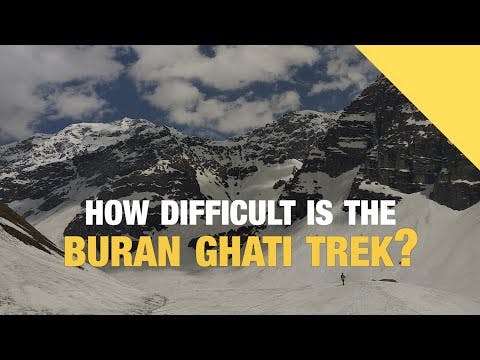
Photo Gallery
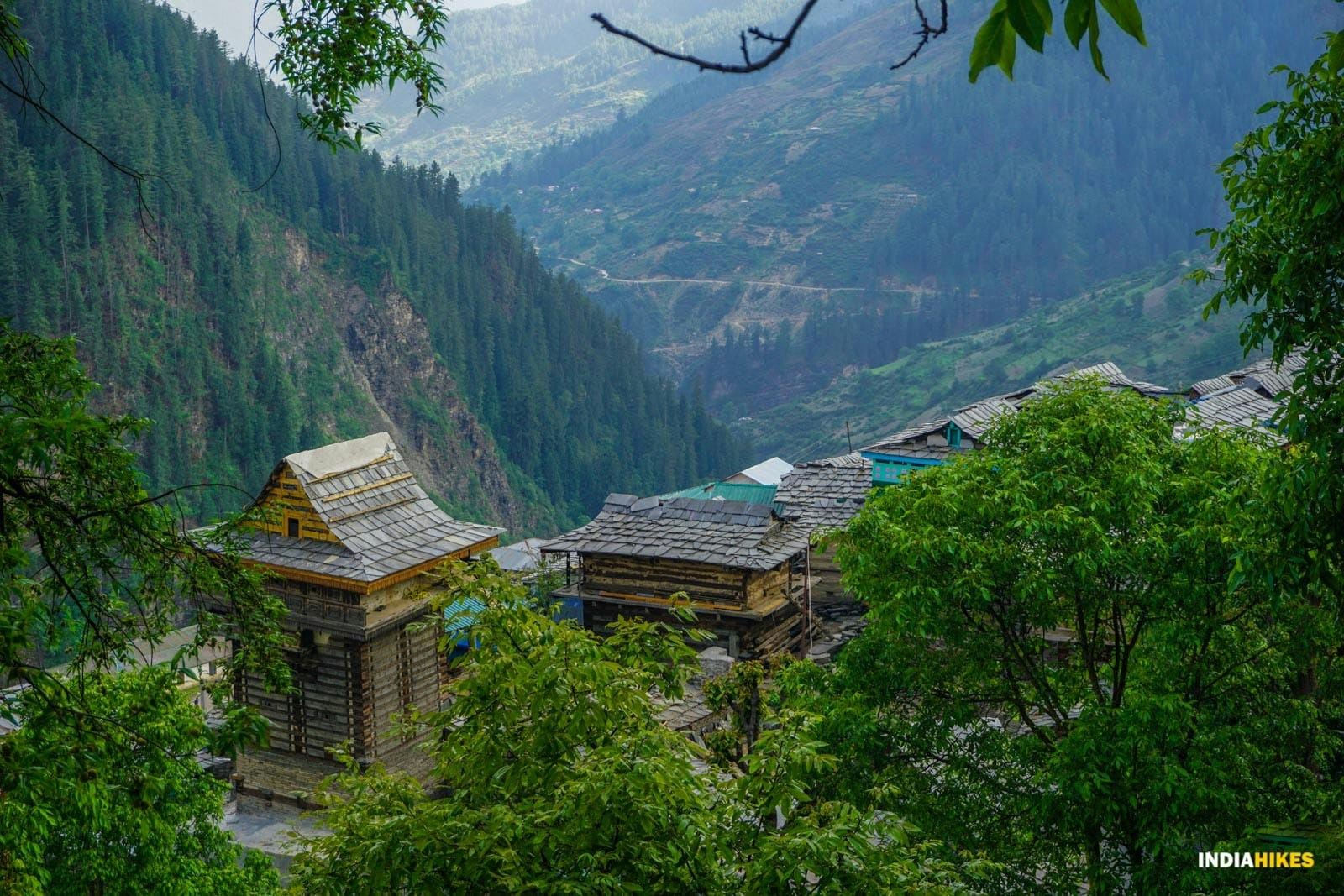
Expert Speak
Arjun Majumdar, Founder, CEO

Arjun Majumdar, the Founder of Indiahikes, went on this exploratory trek almost a decade ago. He is a veteran of the trekking community in India and one of the earliest to trek Buran Ghati. He’s an expert when it comes to the trek. Here’s Arjun talking about one of the grandest treks in our country .
What I Like and Don’t Like About Buran Ghati Trek
What I Like About the Buran Ghati Trek
Arjun Majumdar, the Founder of Indiahikes, went on this exploratory trek almost a decade ago. He is a veteran of the trekking community in India and one of the earliest to trek Buran Ghati. He’s an expert when it comes to the trek. Here’s Arjun talking about one of the grandest treks in our country.
1 . Dayara Meadows
Dayara meadows have to be one of my favourite sections, and I think trekkers will say so too. You first see it from a high ledge as you climb out of a deep dark coniferous forest. Right in front for miles is a sprawling table land carved out from the sides of a mountain.
One grassy side climbs the sides of the mountain, and the other drops down a cliff into the gorges below. In between is the vast green stretch where horses gallop.
I couldn’t believe we would camp in these splendorous settings. That too on Day 1! When you compare with meadows on other great treks, I would put Dayara meadows right on top of my list.
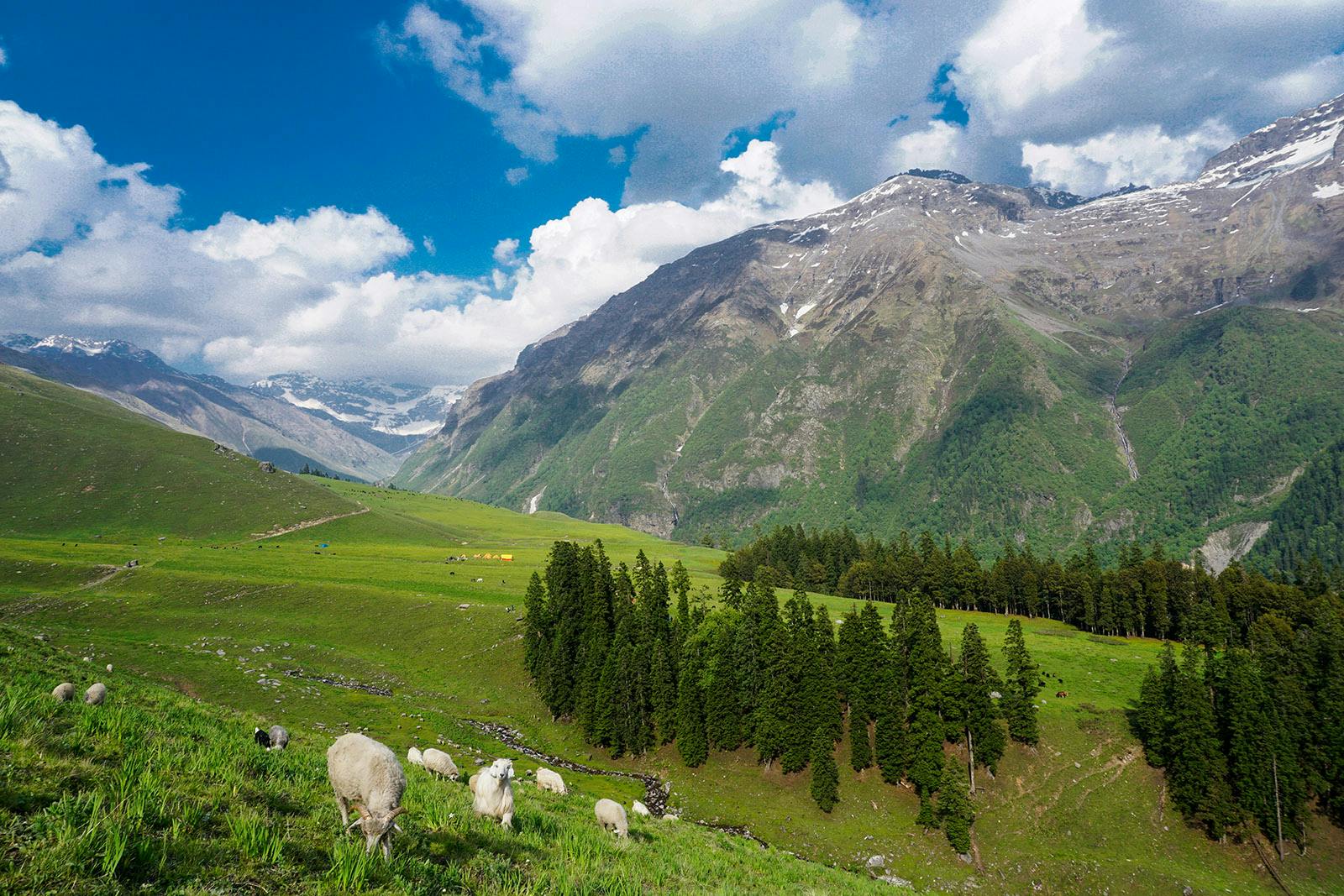
The vast meadows of Dayara resemble the Ali and Bedni meadows of the Roopkund trek. Picture by Sandhya UC
2 . The Buran Ghati Wall And Snow Slides
It is a very high altitude trek, going up to 15,000 feet — which puts the trek in the high adventure category. Getting to the top of the Buran Ghati and then rappelling down to the other side is a thrill I cannot forget.
Buran Ghati wall has become famous now. I think it must be the world’s highest rappelling point! Afterwards sliding down multiple snow chutes is what makes Buran Ghati a great adventure. Trekkers will love this adventure. I put Buran Ghati high on my adventure list as well.

Nothing beats the adventure of the ice wall descent at the pass crossing on the Buran Ghati trek. Picture by Jothiranjan
3 . Villages of Janglik and Barua
The two villages on the trek, Janglik and Barua — I think — people must just do the trek just to observe the ancient culture and how it is still preserved. Of the two Barua is my favourite.
I love how we get in on the upper village, and then wind ourselves down, observing the culture in the villages until we get to its foot, almost one thousand feet down! Look out for the architecture, people, and the temple. Lots of fruit trees too!

Buran Ghati gives you a cultural experience as it takes you through two Himachali villages, primarily Janglik and Barua. Picture by Sandhya UC
4 . Litham Campsite
Litham mesmerized me. Here was a campsite at the confluence of two valleys. You could sit at Litham and gaze for hours at the two valleys. But the sight to watch out for would be the towering waterfalls from the Chandranahan snout. People talk about the famous Rupin waterfalls on the Rupin Pass trek. But this one is as impressive!
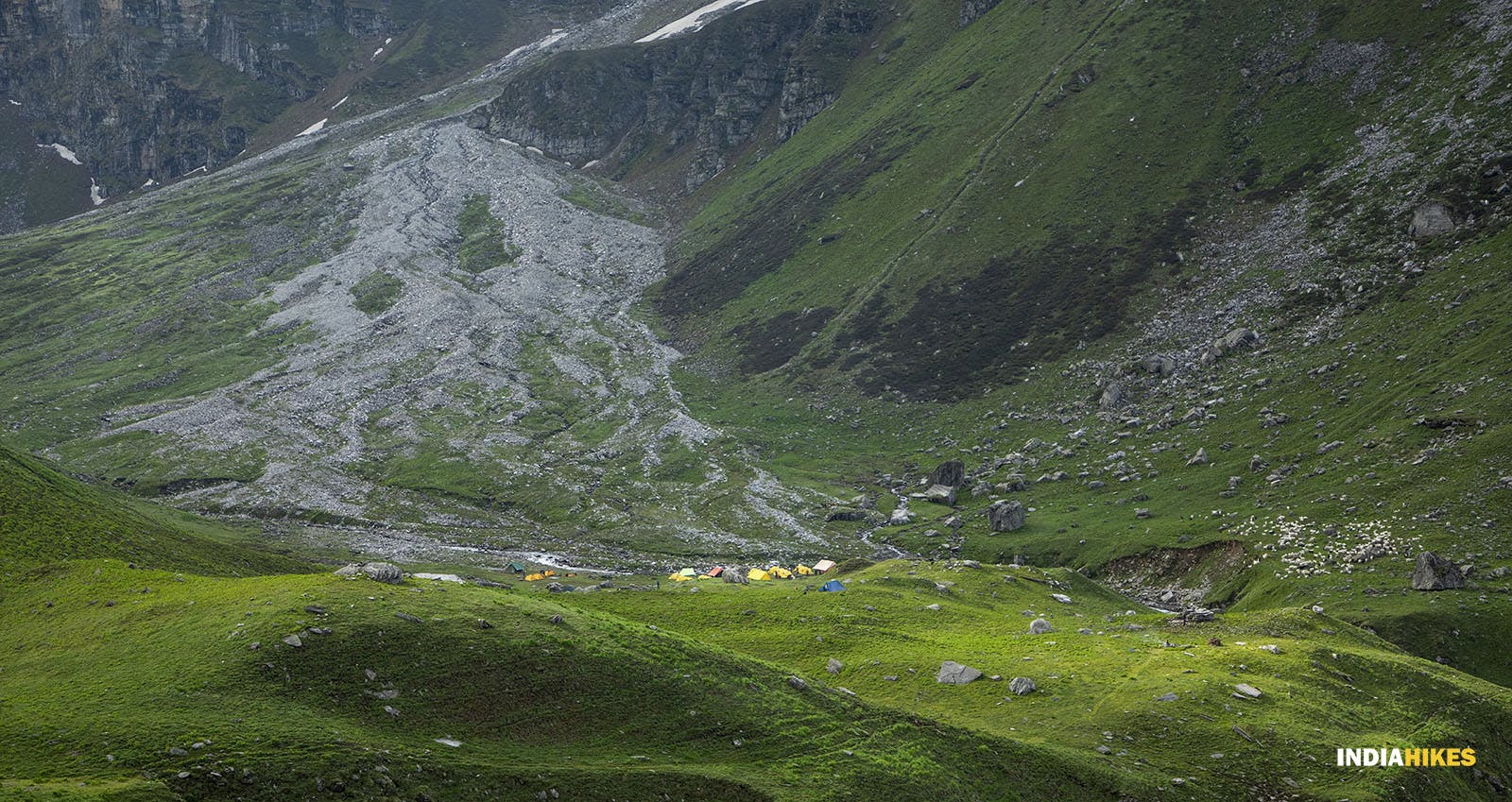
The Pabbar River flowing from the glaciers surrounding the Litham Campsite. Picture by Jothiranjan
5 . Trek To Chandranahan Lake
I think the side trek to Chandranahan lake is very underrated. For me, it felt better than even doing the Buran Ghati crossing. The moment you get to the snout of the Chandranahan falls, you are transported to an alpine zone. You are in a high altitude narrow snow-lined valley.
Snow-capped mountains tower over you, all at touching distance. The Pabbar river is still along with you. You make your way over one beautiful ledge after another to get to the heart of the valley. The journey and the setting still stay with me for the visual treat.
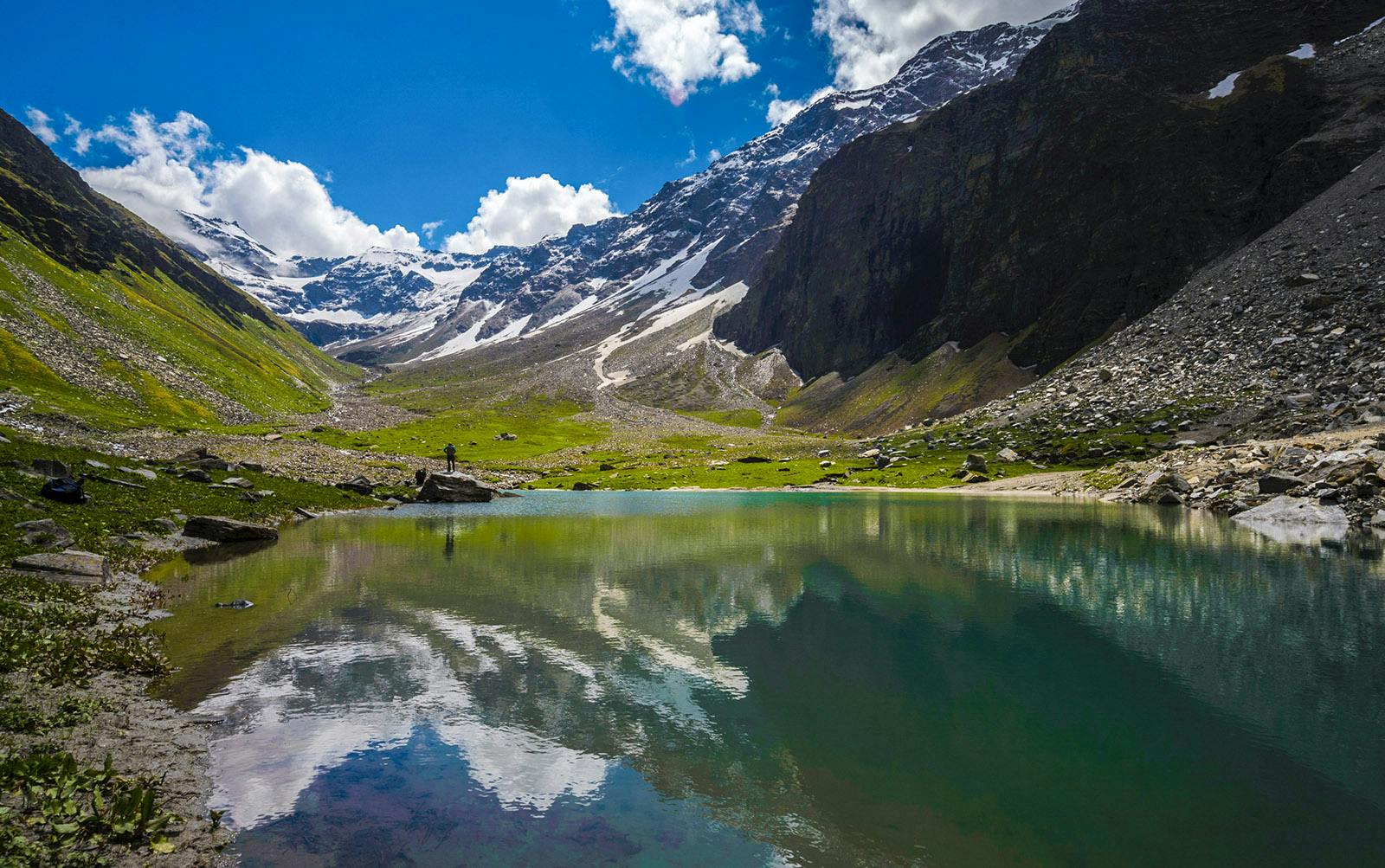
The series of alpine lakes of Chandranahan. The color of the lakes add a charm to the setting of moraine layer. Picture by AnirbanBanerjee
6 . The Coniferous Forests
I loved the forests on the first day of the trek. It is just lovely gradually climbing through the coniferous forests with its birch trees, some maple and oak, and birds singing along. Trekkers will just love it.
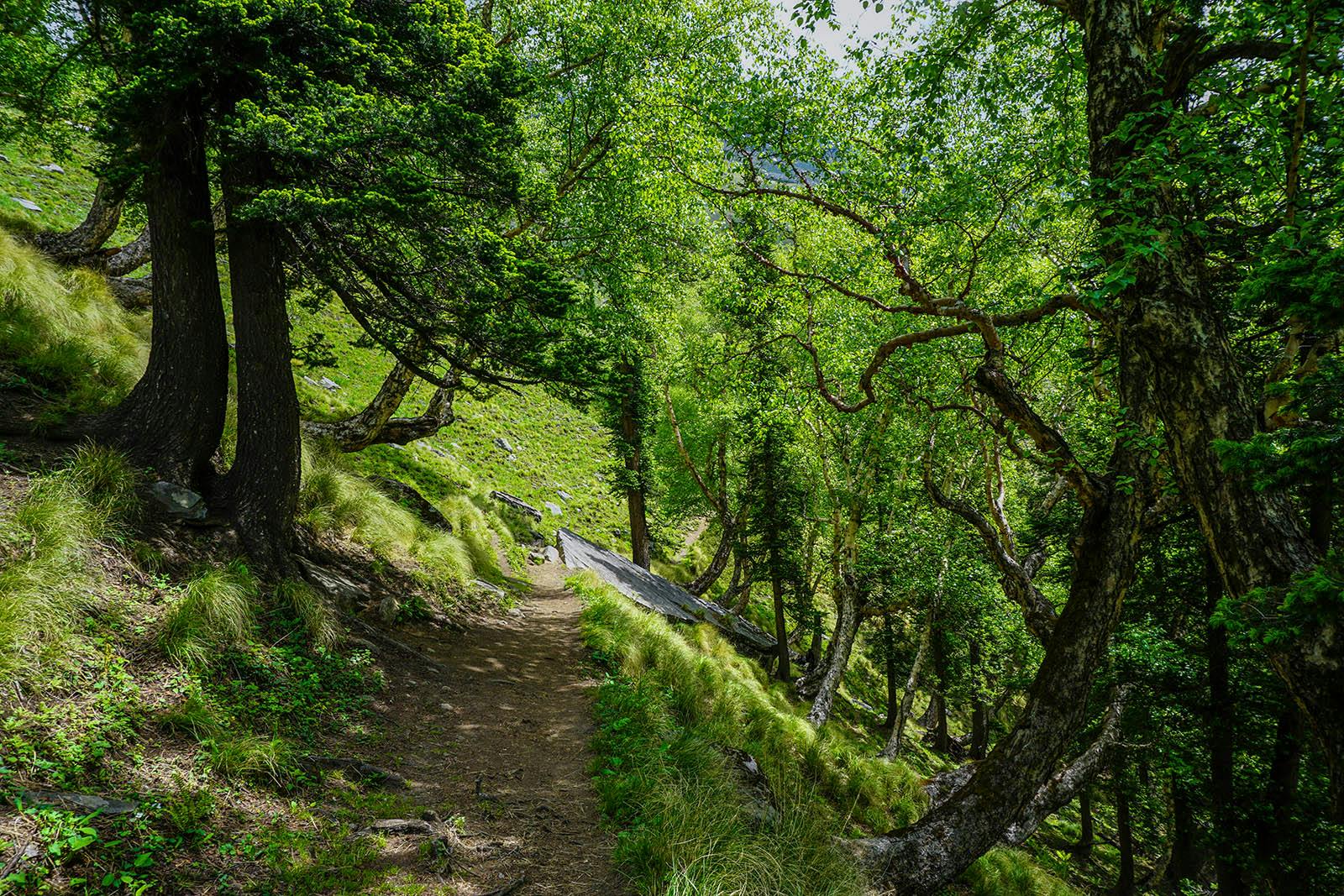
The beautiful forests on the Buran Ghati trek. Picture by Sandhya UC
What I don't Like About the Buran Ghati Trek
1 . Ok, for the first time I don’t have a line to write about what I didn’t like.
Buran has to be the most complete trek I have done. It has stunning scenery, one of the best meadows, great culture, well-paced out, terrific high altitude adventure. Even the road journey to the base camp is superb!
I give Buran Ghati a 5/5 .
5 Reasons Why Indiahikes
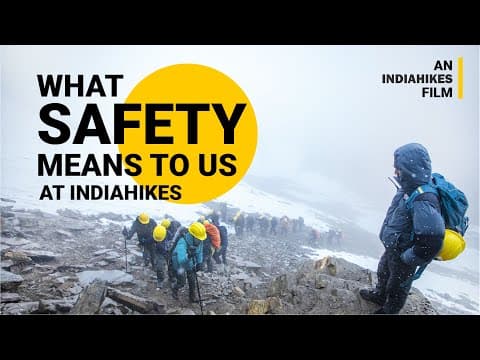
When we brought out new trails in Indian trekking, safety came with us. Back in 2012, we were the first to introduce microspikes, and two years later, pulse oximeters became standard thanks to us. Nobody does safe treks like Indiahikes. In the mountains, emergencies don't care who you're with – everyone knows that when trouble hits, you look for the yellow tents of Indiahikes.

We are pioneers in trekking. Since 2007, we have brought out treks that have become India's most famous treks: Roopkund, Rupin Pass, Buran Ghati, Kedarkantha, Kashmir Great Lakes, Tarsar Marsar, Brahmatal, Phulara Ridge—the list goes on. In 2023 alone, we brought out five new treks in Indian trekking. We know treks better than anyone . This comes directly from the reason why Indiahikes was born: to bring out trek information and enable trekkers to trek on their own.
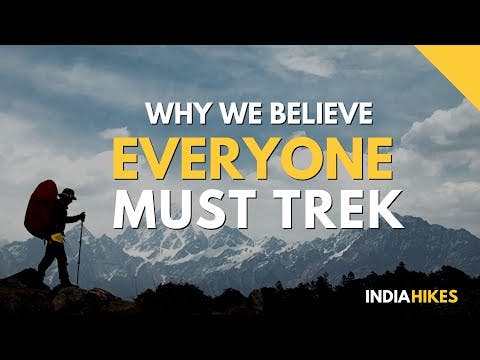
More than 25,000 people trek with us every year. We are the largest trekking organisation in India. 24% of our trekkers come back to trek with us every year. Over 4,000 students from the top educational institutions trek with us every year. Aside from this, families with children choose to trek with Indiahikes knowing that our treks are the safest. We have taken over 8000 children trekking so far, and the number continues to grow.
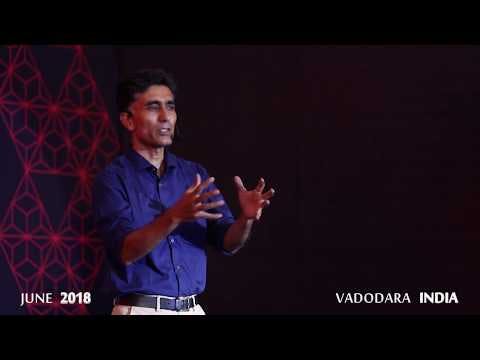
We focus on designing transformative experiences. Our trek leaders conduct thought-provoking exercises that help you reflect and contemplate. This impact stays with you for a long time. Trekkers return feeling energised, more confident, or developing abilities to deal with difficulties. Many have changed careers, rethought their core values, become more humble, shown gratitude to others, or started a new fitness journey.

Since 2012, we have pioneered sustainable practices that have become standard in trekking. Using eco-bags, our trekkers have cleared over 120 tonnes of litter from the mountains. We do not carry packaged foods; instead, we serve freshly made food. We do not light campfires; we carry coal to light angethis to keep you warm. Our bio-toilets not only keep our toilets odour-free but also enrich the soil. When you trek with us, you leave mountains better.
Indiahikes Features
You’re guarded with our trek again philosophy
If you are unable to complete a trek, or if you love a trek, you can repeat it with us anytime. You don’t have to pay us for it. See our thoughts behind this here .
Daily 3-time health checks keep you safe at any altitude
Our thrice-a-day oxi-metre checks keep altitude sickness at bay, never allowing you to reach a point where you need evacuation.
Join any group, they are all women-friendly groups
With around 30% of our trekkers being women, all women, including those travelling solo are comfortable to join any of our groups.
Request Jain/Vegan-friendly food
Our kitchen teams understand your needs as a vegan (or a Jain). We will take special care of your food, even in the remote Himalayas.
Be comfortable and sustainable with bio toilets
We have specially designed bio toilets to ensure you have no sight or smell in toilets, at the same time making sure the toilets cause no harm to the fragile ecosystem we trek in.
Fresh, nutritious food at every camp
We’ll admit it. Our love for food surpasses our love for minimalism. Expect freshly cooked, multi-cuisine food at all camps, designed to meet your nutritional requirements and keep your taste buds happy!
Other Treks Like Buran Ghati Trek
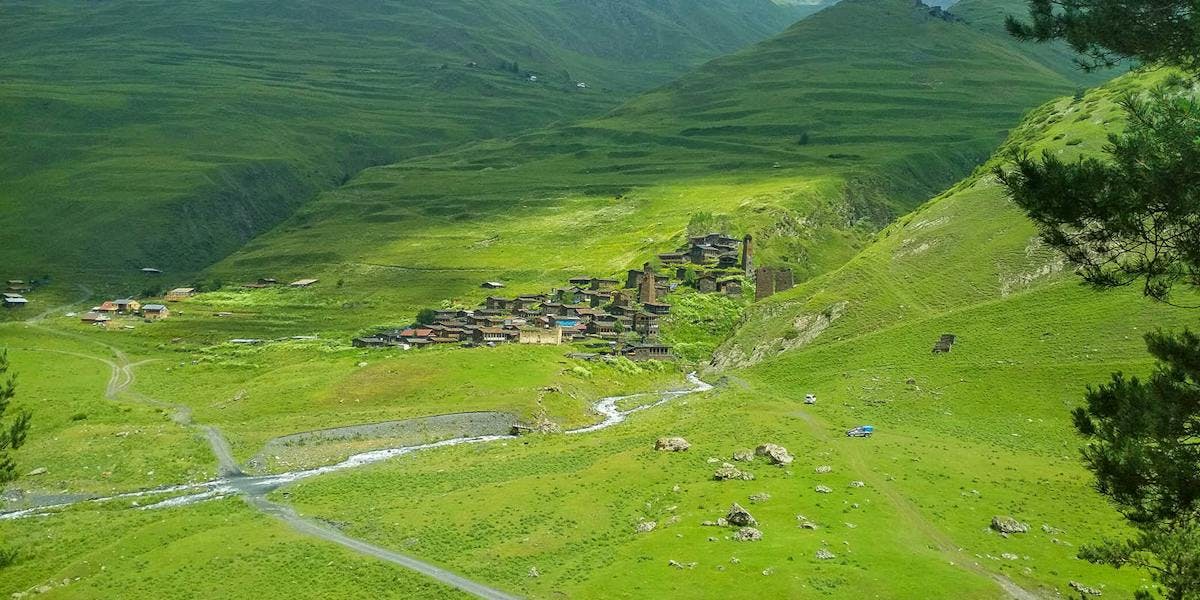
Georgia Atsunta Pass Trek
Get Trek Info
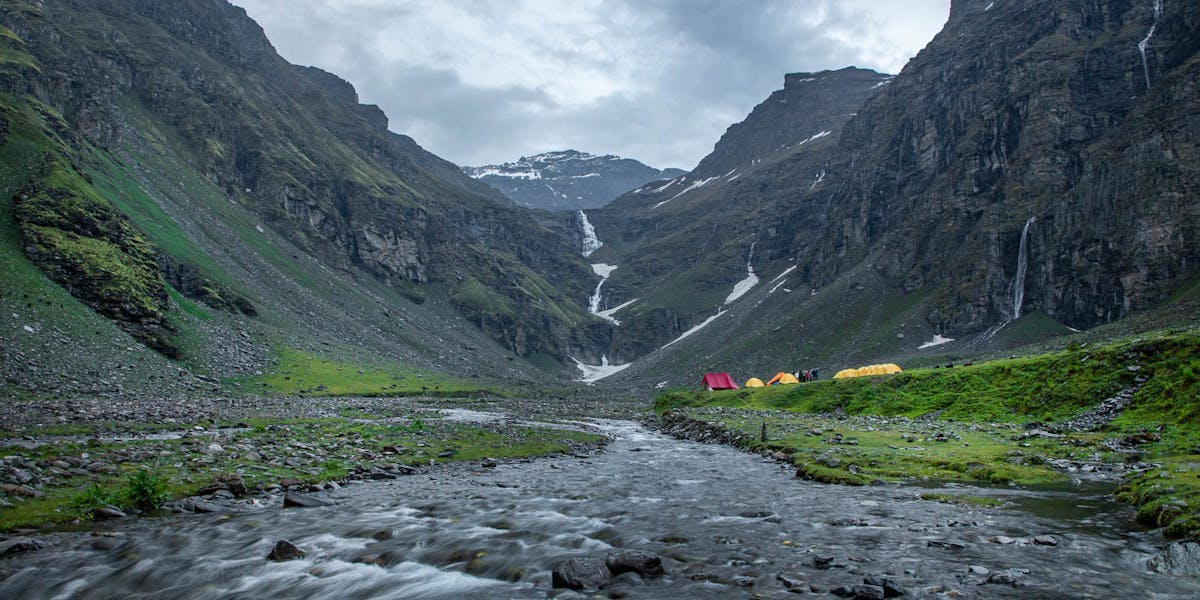
Rupin Pass Trek
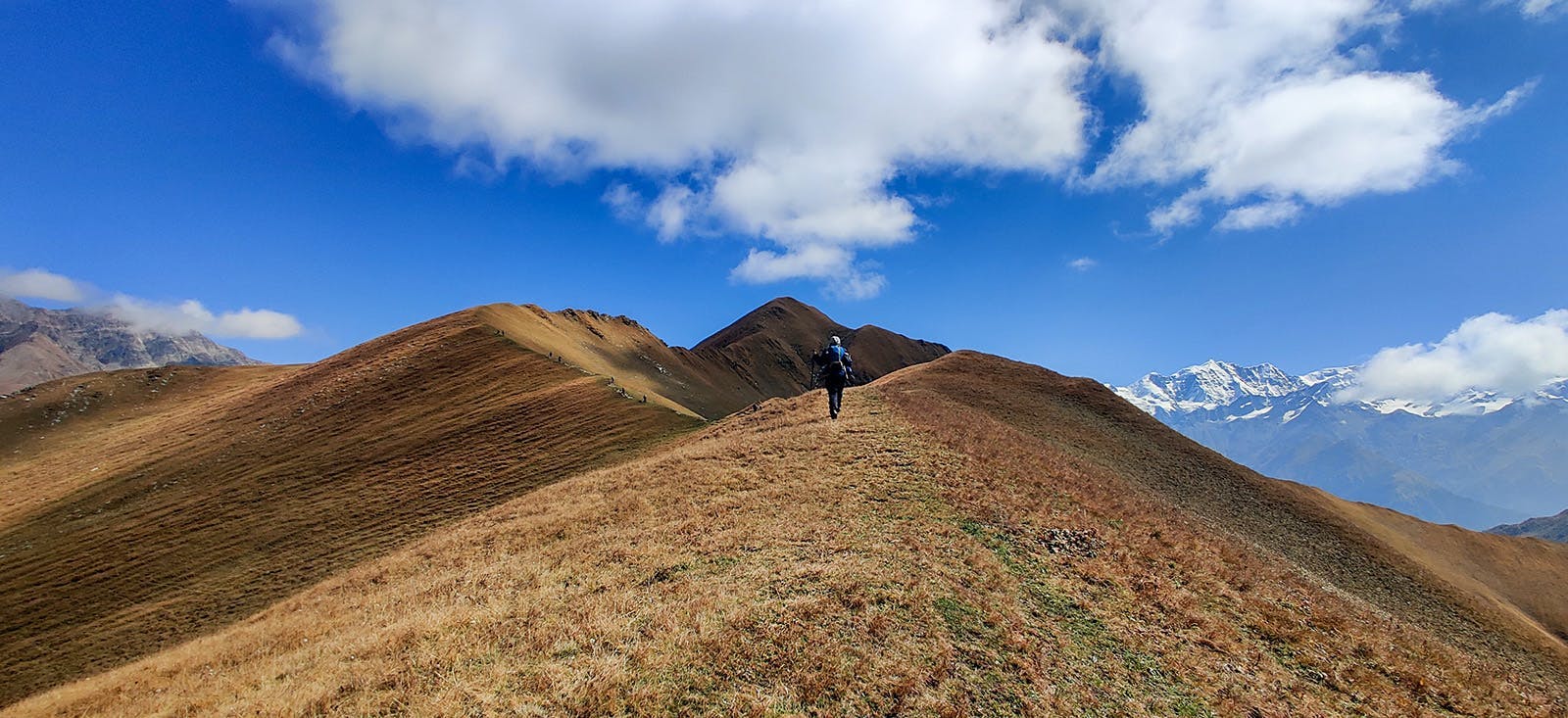
- Moderate - Difficult
Gidara Bugyal

Pin Bhaba Pass

Georgia Atsunta Pass...
The flower bouquet trek of Georgia
A surprise in scenery every hour
A trek to the grandest meadows in our bouquet
Sign up for our much loved Weekly Mailer
We have terrific trekking tips, trek updates and trek talks to look forward to
Treks by Categories
Treks by season, treks by month, treks by duration, treks by difficulty.
- Easy - Moderate
Treks by Region
- Uttarakhand
- Himachal Pradesh
- Lahaul and Spiti
- Jammu & Kashmir
- West Bengal
- Chhattisgarh
Treks by Experience
- Family Treks
- Stargazing Treks
- Senior Treks
- Adventure Therapy
- Summer Camps
- Youth Camps
- Cancellation policy
- Work with us
- Our sustainability practices
- Privacy Policy
- Terms & Conditions
080 468 01269 Mon to Sat - 9.30 AM to 7.30 PM Sun - 9.30 AM to 6.30 PM
Bengaluru Office
139, Defence Colony Road, Defence Layout, Sahakar Nagar, Bengaluru, Karnataka 560092
Dehradun Office
Mohabbewala, Titan Road, Near Titan Factory, Chandramani Khalsa Dehradun - 248002
© 2024 Indiahikes Private Limited
All images are copyrighted by their respective authors.

Buran Ghati Trek
Buran ghati.
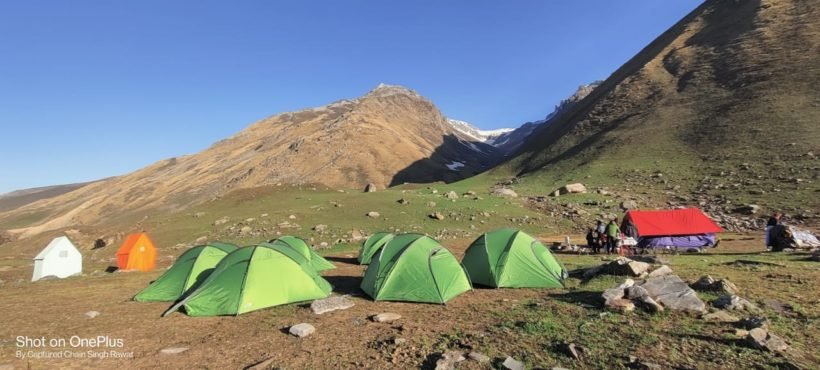
Description
Reviews (6), things to take, available dates, include / exclude, the buran ghati trek is a popular trekking route in the indian state of himachal pradesh. it is known for its stunning natural beauty, offering trekkers a chance to explore the pristine landscapes of the himalayas 2024- complete trek information .
Buran Ghati is a highly diverse trek and a thrilling pass that lies at a high altitude of 15,000 feet in the heart of Himachal. This amazing trek starts from Janglik and is perfect because it has got all the adventure which also includes sliding down and Rappelling down a snow wall.
Therefore, witness the changing landscapes, diverse vegetation, superb mountain views, verdant forests, and quaint idyllic villages during your trek.
Arguably, Buran Ghati is a diamond hiding in the hills because of its unparalleled adventure and beauty!
In Buren Ghati Pass Trek, every day you get to see something different, the scenery you can see in the Buren Valley is amazing, here you will have a different experience on every camping site
In the month of May, trekking here in Snow and Green Bugyal and the cool winds coming from the high hills will keep pulling you more and more in this trek.
The special stop of this trek is Chandranahan Lake, this is a beautiful lake which is in the middle of two hills. Elevation of about 4,260 m (13,980 ft) above sea level
Another special feature of this trek is that it starts from Junglik village and ends at Barua Road head. Due to this, you are not going to feel the same on this trek anywhere, every day you are waking up differently.
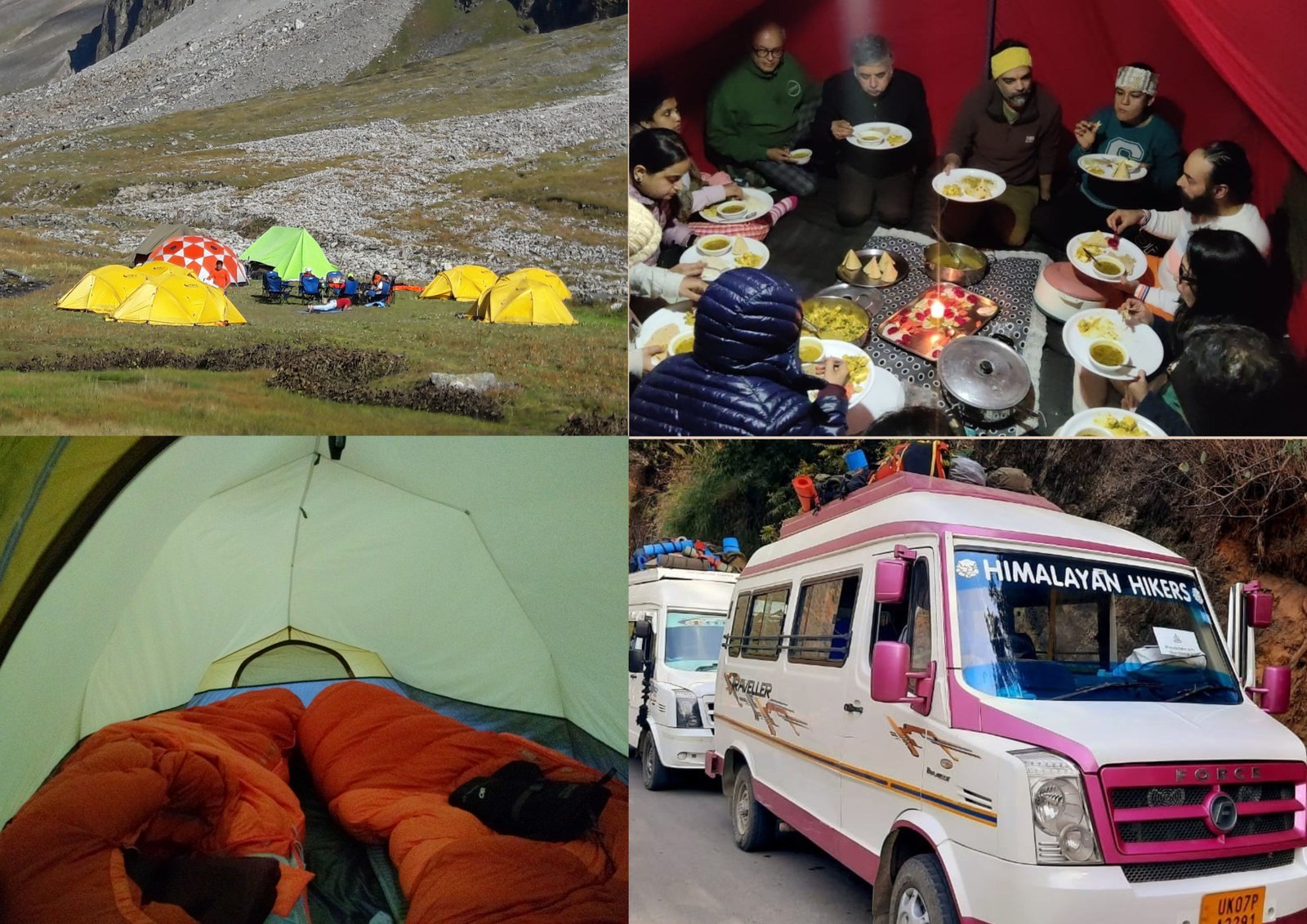
Buran Ghati Pass Trek- Here are some of the highlights of this trek:
- Beautiful landscapes: The trek takes you through some of the most stunning landscapes of the region, including lush green forests, meadows, and snow-capped peaks.
- Buran Ghati Pass: The trek culminates at the Buran Ghati Pass, which is situated at an altitude of 15,000 feet. The pass offers breathtaking views of the surrounding mountains and valleys.
- River crossings: The trek involves crossing several rivers and streams, adding an element of adventure to the trek.
- Campsites: The trek offers opportunities for camping in some of the most picturesque locations, including beside glacial lakes and in high-altitude meadows.
- Cultural experience: The trek takes you through several remote villages, allowing you to experience the local culture and traditions of the region.
- Wildlife: The trek is home to a variety of wildlife, including Himalayan bears, snow leopards, and musk deer.
Overall, the Buran Ghati Pass Trek is a must-do for adventure enthusiasts looking for a challenging trek with stunning scenery and a unique cultural experience.
Key Points of Buran Ghati Trek
Duration: – 6 Nights 7 Days – from Shimla to Shimla
Base camp: – Janglik village
Summer Temperature : – Day (5°C to 10°C) Night (-2° C to 6° C)
Buran Ghati Altitude : – 4572 Meter
Best Time to visit : – May, June, September, October
Trek Level: – Moderate
Trek distance : – On foot 29 Km – By taxi 375 km
Group Size: – 20 people max
Trek Route : – Shimala, Rohru, Janglik, Dayara thach, Litham, Chandranahan lake, Dhunda camp, Buran Ghati pass, River Camp, Barua Road head,
Buran Ghati Pass Trek Day by Day Itinerary, Distance, Altitude
Day 1: Pickup to you from Shimla at 7:30 am Drive to Janglik village by taxi (160 Km) (8/9 Hours) Altitude – 2,804 m overnight stay Home stay Janglik Village
Day 2: Trek from Janglik village to Dayara Thach ( 04 km) (4/5 Hours) (3376 m) Overnight stay Camp Twin sharing
Day 3: Trek from Dayara Thach to Litham camp (03 km) (3/4 Hours) (3578 m) Overnight stay Camp Twin sharing
Day 4: Short hike to Chandranahan Lake Explore some time here and back to Litham camp (03 km) (4/5 Hours) (4327 m) Overnight stay Camp Twin sharing
Day 5: Trek from Litham camp to Dhunda Camp (04 km) (6/7 Hours) (4075 m) Overnight stay Camp Twin sharing
Day 6: Trek from Dhunda to Buran Ghati Pass (4572 m) and River camp (3597 m) (07km) (7/8 Hours) Overnight stay Camp Twin sharing
Day 7: Trek from River camp to Barua (05 km) Same day Drive to Shimla (275 Km)
About – Janglik Village in Buran Ghati Trek
The base camp of the Janglik is a beautiful small Village altitude of 2804 Meters. There are small shops and some homestays, Witness unique wooden houses made of Deodar wood.
You can get most of the things in Janglik is the main base camp of Buran Ghati Pass Trek ; you will start trekking here.
Best Time to Visit Buran Ghati Pass Trek?
Buran Ghati Pass trek is a very beautiful and Gradual uphill trek in the Himalayas, The Buran Ghati Pass trek is great for those people who have a great passion for mountaineering and consider it a special purpose in their life.
The best time to visit the Buran Ghati trek is during the post-monsoon season, which typically spans from late September to early October. This period is considered the ideal time for this trek for several reasons:
- Weather: The post-monsoon season offers relatively stable and clear weather conditions in the region. The chances of heavy rainfall, snow, or adverse weather are reduced during this time, making trekking safer and more enjoyable.
- Landscape: The post-monsoon season brings lush, green landscapes with blooming alpine flowers and vibrant meadows. The trail is at its most scenic, offering breathtaking views of the surrounding mountains and valleys.
- Snow: While there may still be some snow at higher altitudes, it is typically manageable during this season. Trekkers can experience the thrill of crossing snowfields without the extreme cold and risk associated with winter trekking.
- Moderate Temperatures: Daytime temperatures during the post-monsoon season are usually comfortable for trekking, with temperatures ranging from 10°C to 20°C (50°F to 68°F) at lower altitudes. However, nights can be cold, so warm clothing is necessary.
- Wildlife: This season also provides opportunities to spot local wildlife, including birds and other fauna that are active in the region.
Buran Ghati pass trek in the month of May or June?
Trekking to Buran Ghati in May or June can be a different experience compared to the post-monsoon season, which is generally considered the best time for this trek. Here are some things to consider if you plan to trek in May or June:
- Snow: During May and June, significant snow can still be present at higher altitudes. This means that you are likely to encounter snow-covered trails and snowfields, which can add a unique challenge to the trek. Trekking in snow requires specialized equipment like gaiters, ice axes, and crampons, and you should be prepared for colder temperatures.
- Weather: While the days at lower elevations may be relatively warm, the weather in the mountains can be unpredictable. Be prepared for sudden weather changes, including rain or snowfall, and make sure to have suitable clothing and gear for such conditions.
- Avalanche Risk: In the early summer months, there can be an increased risk of avalanches in certain sections of the trek, especially near the Buran Ghati Pass. It’s crucial to have knowledge of avalanche safety and the local conditions if you plan to trek during this time.
- Camping and Accommodation: Some of the higher-altitude campsites may not be accessible in May and June due to snow cover. This may affect your itinerary and campsite choices. Some campsites may not be as lush and green as they are in the post-monsoon season.
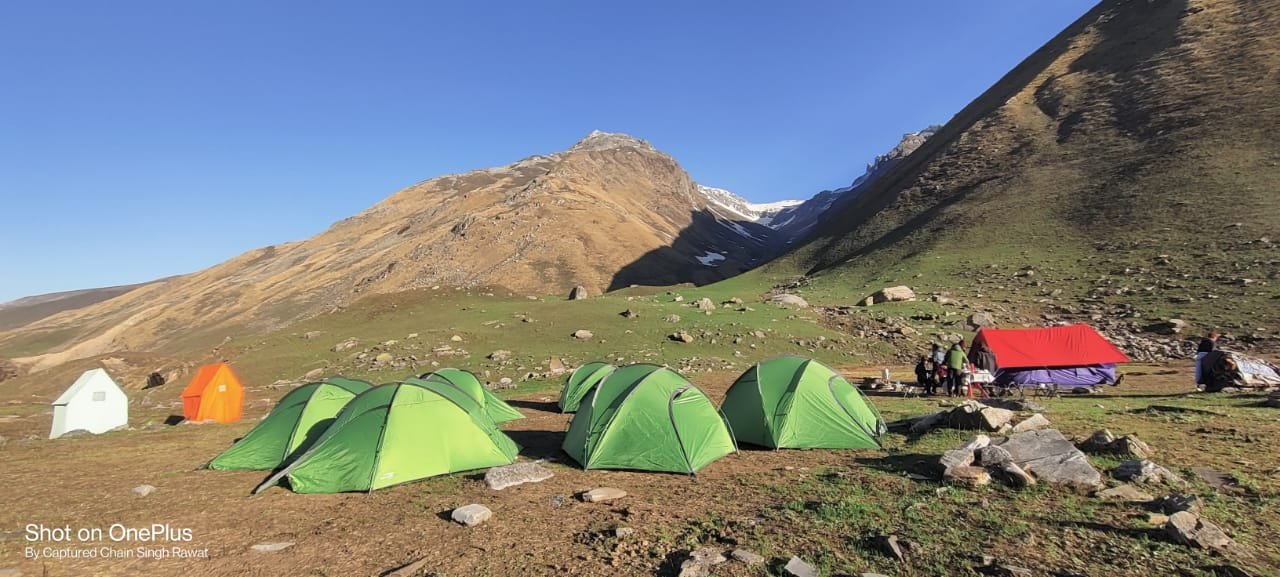
Buran Ghati pass trek in July and August?
In the months of July and August, you will get to see beautiful flowers and green Bugyal beautiful Mountain range, this trek looks very beautiful in monsoon.
You also get a chance to do Chandranahane Lake along with this trek, for which people trek separately, you complete two treks with a single trek which can be very good.
There is some rain in the monsoon months of July and August, trek but it also has its own fun in trekking. and Not many people come here in monsoon, so you can have a peaceful atmosphere here.
Buran Ghati Pass trek in September or October
Trekking to Buran Ghati Pass in September or October is generally considered an excellent time to experience this trek. Here’s what you can expect during this period:
- Ideal Weather: September and October offer the best weather conditions for the Buran Ghati trek. The monsoon season is over, and the winter chill has not yet set in. Days are generally pleasant with temperatures ranging from 10°C to 20°C (50°F to 68°F) at lower altitudes, making it comfortable for trekking. Nights can be cold, so you’ll need warm clothing.
- Clear Skies: The skies are relatively clear, providing excellent visibility for enjoying the breathtaking landscapes and mountain views. You’ll have the opportunity to capture beautiful photographs of the surrounding scenery.
- Vibrant Landscapes: The post-monsoon season brings lush greenery and colorful blooms to the meadows and forests. The region comes alive with blooming alpine flowers, adding to the overall beauty of the trek. The landscapes are at their most vibrant during this time.
- Snow at Higher Altitudes: While lower altitudes may not have much snow, you can expect to encounter snow at higher elevations, particularly as you approach the Buran Ghati Pass. This adds an exciting element to the trek without the extreme cold of winter.
- Stable Conditions: The weather is relatively stable, and the chances of heavy rainfall or snowfall are minimal. This ensures a safer and more enjoyable trekking experience.
- Camping and Accommodation: All the campsites are accessible during this season, and you can enjoy lush and picturesque camping spots along the trail.
- Wildlife Sightings: You might have the opportunity to spot local wildlife, including birds and other fauna that are active during this time.
Attractions of Buran Ghati Trek
Consequently, Buran Pass offers 360-degree views.
On the other hand, enjoy doing 5 snow slides, which is the most adventurous part of this trek.
In addition, enjoy Rappelling down the snow wall.
During the trek, explore the lush green meadows of Dayara which bloom with wildflowers.
Afterward, visit Chandranahan Lake .
Come across numerous streams on the way.
Further, pass through mixed forests and you will find a plethora of colorful flowers and shrubs.
At the end, go through Barua village, where there are many fruit orchards.
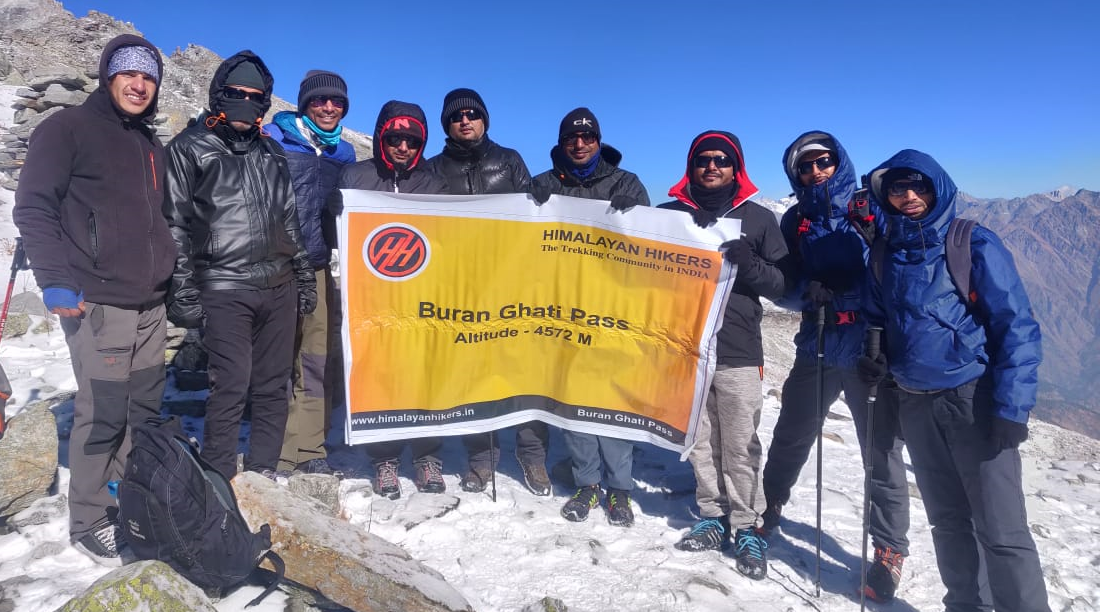
How Difficult Is Buran Ghati Pass Trek
The Buran Ghati Pass Trek is considered to be a moderately difficult to challenging trek. Here are some factors that contribute to its level of difficulty:
- Altitude Gain: The trek involves a significant altitude gain. You start from relatively lower altitudes and ascend to over 15,000 feet (4,572 meters) when crossing the Buran Ghati Pass. Trekking at high altitudes can be physically demanding and may lead to altitude-related issues, so proper acclimatization is essential.
- Length: The trek typically spans over a week, covering a distance of approximately 37-40 miles (60-65 kilometers) one way. The long duration and distance can be physically demanding, and trekkers should be in good physical shape.
- Weather Variability: The weather in the Himalayas can be unpredictable, even during the best trekking seasons. Trekkers should be prepared for sudden weather changes, including rain and snowfall, and have suitable clothing and gear.
- Trail Conditions: The trail includes steep ascents and descents, rocky paths, and occasional snowfields, especially when approaching and crossing the Buran Ghati Pass. Navigating these terrain types can be physically challenging.
- Avalanche Risk: Depending on the season, there may be an increased risk of avalanches near the pass, particularly in the early summer months. Trekkers should be aware of avalanche safety and take necessary precautions.
- River Crossings: The trek includes several river crossings, which can be challenging during high water flow conditions. Trekkers should be cautious and ensure they have the necessary equipment and guidance for safe crossings.
- Remote Location: The Buran Ghati trek takes you through remote and less-visited areas. This means that access to emergency services and amenities may be limited. Trekkers should be self-reliant and prepared for emergencies.
- Physical Fitness: Given the challenging aspects of the trek, trekkers are advised to be in good physical condition with prior trekking experience.
Buran Ghati Pass safe for me ?
Yes, Buran Ghati Pass Trek is a safe trek if you are going with a good trekking team which you must know before booking yourself, It is important for you to know whether the bow trekking organization with which we are going is right or not,
recommended for beginners or novice hikers due to its moderate to challenging nature and the various factors that can make it a demanding trek. Here are some reasons why it may not be the best choice for beginners:
Age Limit:- The minimum age required to trek Buran Ghati Pass is 12 years and a maximum of 55 years. The rest depends on your fitness.
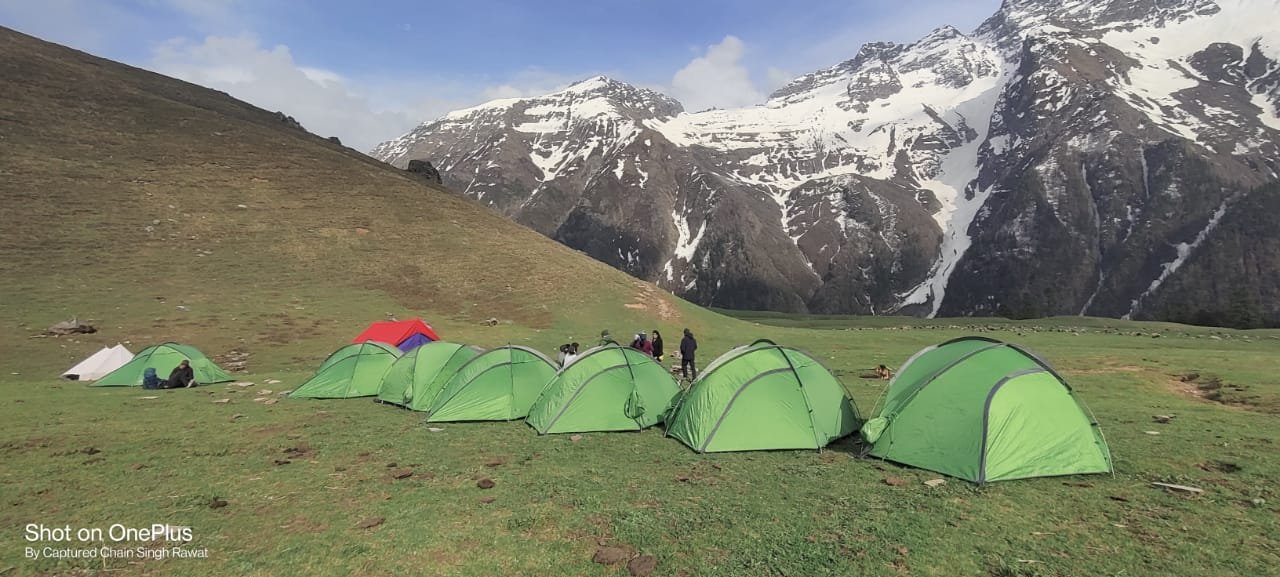
About Shimla in Buran Ghati Trek
“Shimla” is the capital of Himachal Pradesh, swathed by Rhododendrons, Oaks and Firs. It is the most loved hill station in India.
The fascinating beauty of Shimla even impressed the Bruisers and they declared it as the “Summer Capital” of British India. Apart from colonial buildings, there is high snow-covered Himalayas looming in the backdrop.
In Short, this capital city is blessed with enormous gifts which makes it one of the best destinations in India. Shimla is a starting pickup point of the Buran Ghati pass trek,
Why to choose Buran Ghati Trek?
- Scenic Beauty: The trek offers breathtaking views of the Himalayan landscape, including lush meadows, dense forests, pristine rivers, and stunning mountain peaks. The landscapes are especially vibrant and picturesque during the post-monsoon season, making it a visual delight for trekkers and nature lovers.
- Adventure: The trek is known for its adventure quotient, with challenging terrain, river crossings, and the excitement of crossing the Buran Ghati Pass. The presence of snowfields and varied trail conditions add an adventurous element to the trek.
- Off-the-Beaten-Path: Buran Ghati is a less-visited trekking route, which means it offers a more peaceful and remote experience compared to more popular treks. You can enjoy the tranquility of nature and escape from the crowds.
- Cultural Experience: The trek takes you through remote villages and offers opportunities to interact with the local inhabitants. This provides insights into the traditional Himalayan way of life and culture.
- Wildlife: The region is home to diverse flora and fauna. Trekkers may have the chance to spot various bird species and other wildlife along the trail.
- Challenge: For experienced trekkers, the Buran Ghati trek is a challenge that tests their physical fitness and trekking skills. Crossing the pass and navigating the varied terrain can be a rewarding test of one’s capabilities.
- Photography: The stunning landscapes and panoramic views make it an ideal destination for photography enthusiasts. The ever-changing natural beauty provides endless opportunities for capturing memorable shots.
- Sense of Achievement: Completing the Buran Ghati Trek is a significant accomplishment. Trekkers often derive a sense of achievement and personal growth from conquering the challenges posed by the trek.
See firstly, the trekking distance is a total of by taxi 375 Km and on foot 29 km which is to be covered in 6 nights and 07 days
Buran Ghati pass is the best Himachal, Pradesh this is the best trek for Experienced people Altitudes is 15000 feet
Need proper gear & clothing for sub-zero temperature winter?
You get to see so many heavenly bodies in one place like the panoramic view of the Himalayan ranges, Himachal Pradesh meadows, one of the beautiful pine forests, Apple orchids different variety of flora and fauna surpassing through bona fide Himachal and Kinnaur heritage and culture.
Do spare time in Interaction with locals, and you will get to know about some of the ancient tales of Indian mythology. And our Himachal and Kinnaur Cultures.
Beautiful landscapes so carry proper photo gear and extra battery backup.
The backpack should not exceed 10 to 12 kg only
Weather conditions
The weather conditions during the Buran Ghati Trek can vary depending on the time of year you choose to undertake the trek. Here’s a general overview of the weather conditions during the trek:
- May and June are early summer months in the region.
- At lower altitudes, daytime temperatures can range from 10°C to 20°C (50°F to 68°F).
- Nights and higher altitudes can be colder, and temperatures can drop below freezing.
- There may be snow at higher altitudes, especially as you approach and cross the Buran Ghati Pass.
- The weather is relatively stable, but there’s still a risk of occasional rain and snowfall.
- Be prepared for rapidly changing weather conditions.
- September and October are considered the best time for the Buran Ghati Trek.
- Daytime temperatures are similar to the pre-monsoon season, ranging from 10°C to 20°C (50°F to 68°F) at lower altitudes.
- The weather is typically stable with clear skies, making it the ideal time for trekking.
- The landscapes are at their most vibrant, with lush meadows and blooming alpine flowers.
- There may still be snow at higher altitudes, especially near the pass.
- The monsoon season in July and August is not recommended for trekking in the region.
- Heavy rainfall is common, leading to slippery and dangerous trail conditions, landslides, and swollen rivers.
- The risk of avalanches is also higher in this season.
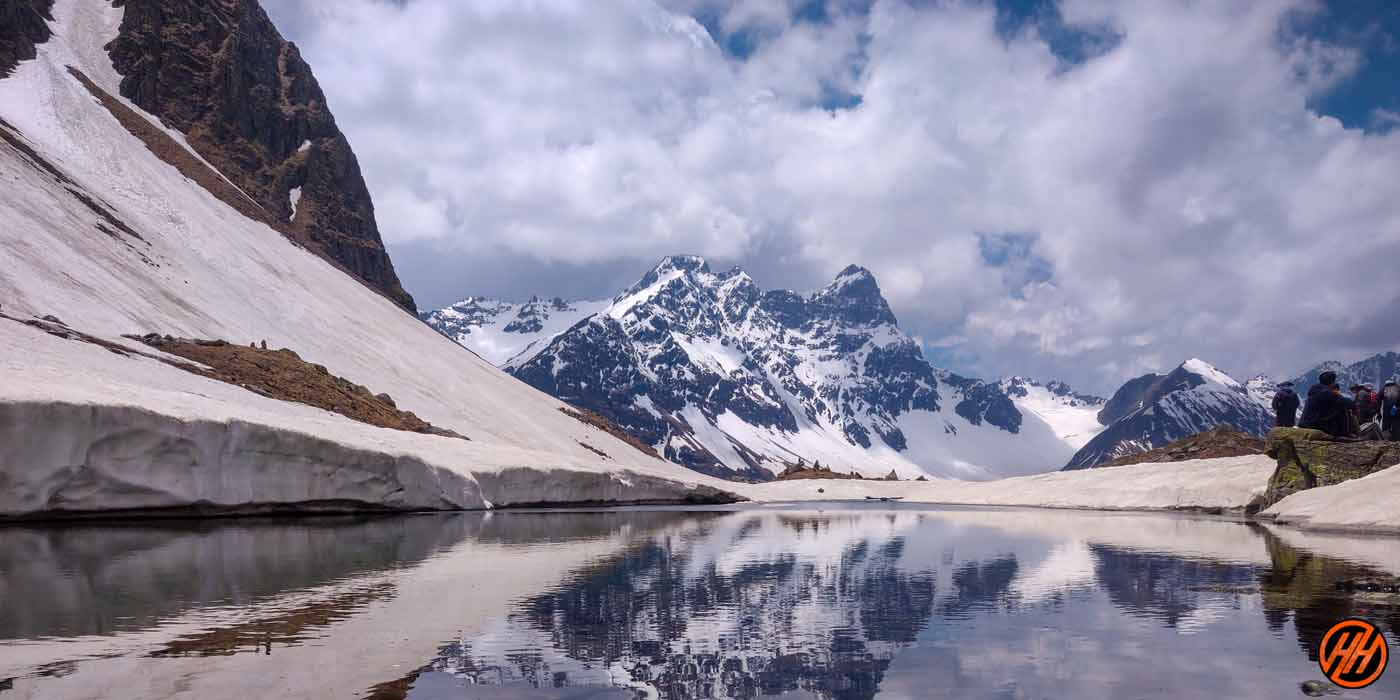
What should you keep in mind for the Buran Ghati trek?
When planning for the Buran Ghati Trek, there are several important considerations and preparations you should keep in mind to ensure a safe and enjoyable trekking experience. Here’s a checklist of things to consider:
- Trekking Experience: The Buran Ghati Trek is moderately difficult to challenging. It’s recommended for trekkers with prior trekking experience, especially at high altitudes. If you’re a beginner, consider gaining experience on easier treks first.
- Physical Fitness: Ensure that you are in good physical condition. Regular cardiovascular and strength training exercises can help prepare you for the demands of the trek.
- Acclimatization: Acclimatize properly to avoid altitude-related illnesses. Spend a day or two at a lower altitude before beginning the trek to allow your body to adjust to the higher elevations.
- Guides and Porters: Consider hiring local guides and porters, especially if you’re not experienced in the region. They can provide valuable knowledge of the terrain, culture, and help with logistics.
- Permits: Obtain the necessary permits from local authorities and follow all regulations and guidelines.
- Weather Conditions: Keep a close watch on the weather conditions, as they can change rapidly in the mountains. Be prepared for rain, snow, and cold weather, especially if you’re trekking in May or early June.
- Packing List: Pack essential clothing and gear for the trek, including layered clothing, a sturdy backpack, comfortable trekking shoes, rain gear, sleeping bag, and more. Make sure you have the right equipment for river crossings and potentially snowy sections.
- Food and Water: Plan for your meals during the trek. It’s advisable to carry energy-rich snacks and filter or purify water from natural sources.
- Camping Gear: If you’re camping, ensure you have a suitable tent, sleeping bag, and cooking equipment. Some campsites may have limited facilities.
- First Aid Kit: Carry a basic first aid kit with essential medications, bandages, and supplies.
- Emergency Communication: Carry a fully charged mobile phone with an extra power bank and know the areas where you can get network reception. Consider carrying a satellite phone for remote regions.
- Local Culture: Respect the local culture and customs. Dress modestly, and ask for permission before taking photographs of people or their property.
- Leave No Trace: Practice responsible trekking by leaving no trace of your presence. Carry out all trash and waste.
- Emergency Plan: Have a clear emergency plan in case of injuries or other emergencies. Share your itinerary with someone who can contact authorities in case of a delay.
- Travel Insurance: Ensure you have travel insurance that covers emergency evacuations and medical expenses.
- Group or Solo: Decide whether you want to trek with a group or as a solo trekker. A group can offer added safety and support.
- Trail Information: Have a detailed map of the trek, along with information about distances, campsites, and water sources.
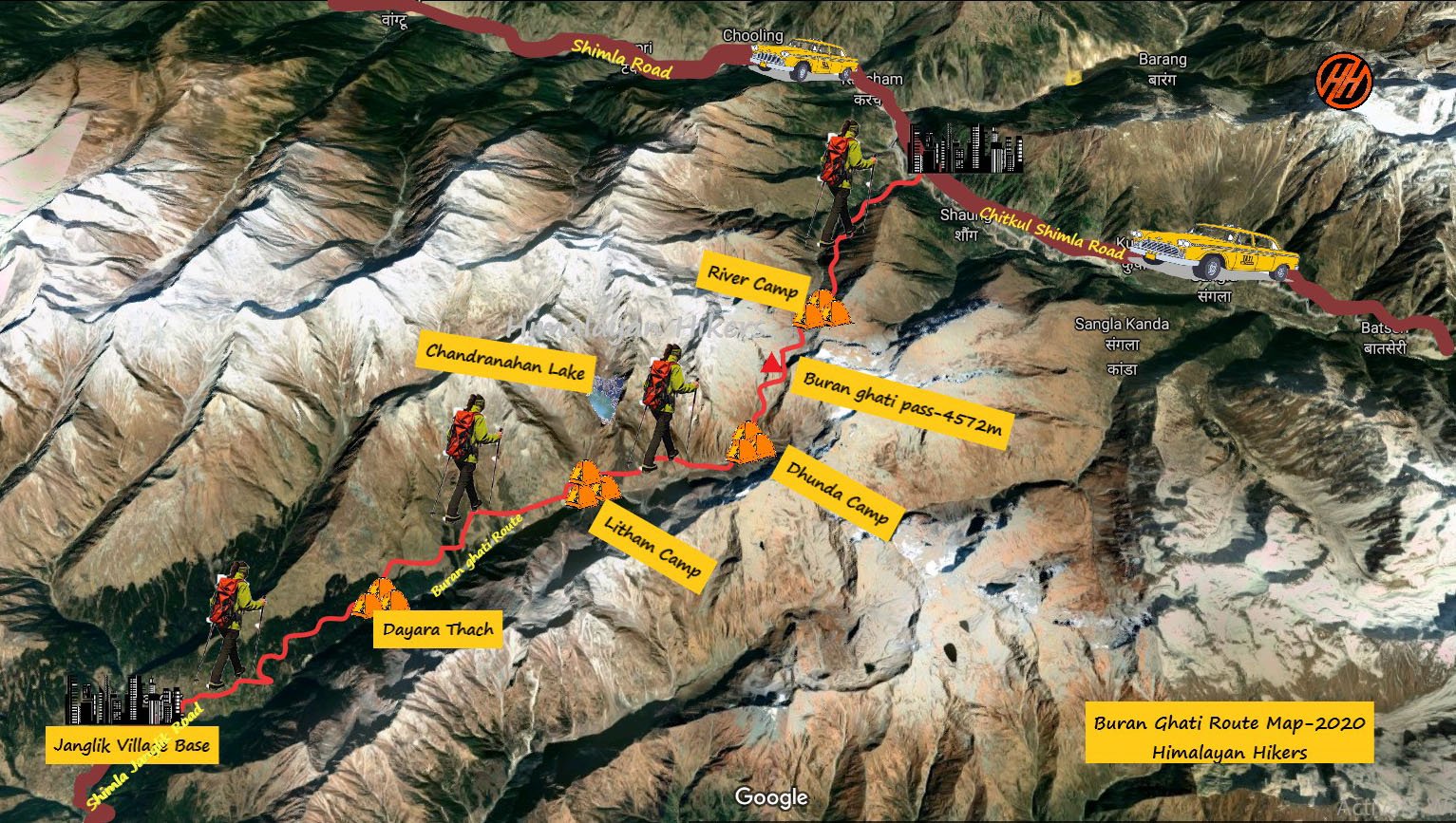
Your Travel Plan for Buran Ghati Trek
You can book trains, air flights, and bus tickets for your journey only according to the information given by us.
1- The Buran Ghati pass trek will be of 5½ days and 01½ days of your journey total of 07 Days from Shimla to Shimla.
2- First of all, all the trekkers will have to book their flight and train bus according to our time table as our pick up is from 7:00 am to 8:00 am, you will have to reach Shimla Old Bus stand in the morning.
3- A taxi from Himalayan hikers will link you to Shimla’s old bus stand.
4- Himalayan Hikers organize transport to Janglik base camp from Shimla old bus stand. Our vehicles leave at 7:00 am to 8:00 am sharp from Shimla. Sharing taxi costs pay to directly your taxi driver Rs 6,500 per vehicle one way.
5- In Shimla’s old bus stand you will get our taxi staff that will arrange transport for you. The contacts no Transport coordinator or our office team will give you a week ago to your departure
6- Please you guys book your transport facility according to your own time table, after Himalayan hikers take all the responsibility of Shimla to Shimla, that you will not face any problem.
7- Your trek ends at Barua road head. Barua is a small village and you don’t have any public transport here. Himalayan Hikers once again arranged for the transport for the return to Shimla on the same day 07.
You reach Shimla between at night 10.30 pm and 11.30 pm. It costs Rs 9,000 per vehicle on the way pay to directly your taxi driver
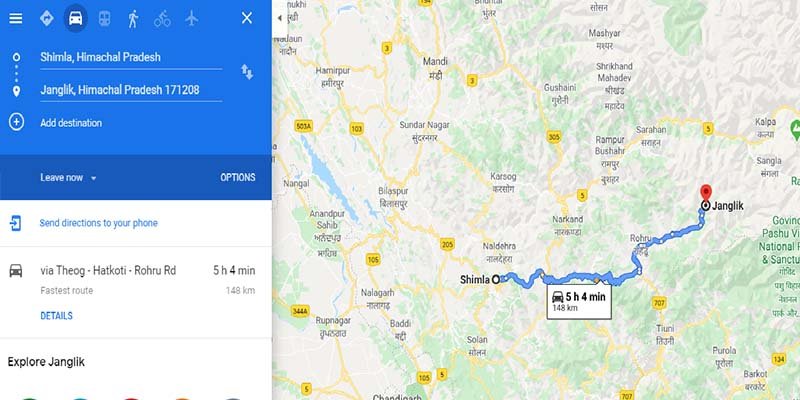
How will you reach Buran Ghati Trek?
If you are traveling from Kolkata, Bangalore, Chennai, Pune, Mumbai or Gujarat any other city, so you will have to come to Delhi, you will get a train/flight from Delhi for Chandigarh comfortably.
Option 01:- By Air –
Himalayan hikers tell you that whenever you travel, you should reach your destination within 2 hours. Chandigarh airport is the nearest airport in Shimla. Located about 122 km for the Shimla city. There are flights available from all states to Chandigarh, you can go online and book your tickets. These are easy and easy ways for you and you also save your time,
If you find the flight to Chandigarh expensive, then you come by flight to Delhi or travel by bus from Delhi to Shimla, and it will be easy for you.
Option 02:- By Bus
If you have to go from Chandigarh to Shimla by bus then you will get a bus from Sector 43. Chandigarh, you will arrive here on time and book your bus ticket.
You can reach Shimla from Delhi by a bus, board it from (Delhi) Kasmiri get ISBT; it is good if you are booked the seats. It is a 10-11 hour bus journey from Delhi to Old bus stand Shimla
(Reach Shimla between 5:00 are to 6:00 am and the vehicle will be arranged from there.)
ATM Point and Mobile Connectivity in Buran Ghati Trek
Before starting the journey to Buran Ghati Trek, make sure that you need payments, and then take out the cash on the way, Janglik village base camp no bank and no ATM., Rohru market is the last place where you can withdraw cash from ATM.(If you want to withdraw money then do it in Shimla old bus stand ).
Mobile Connectivity
The phone does not work on this trek. Therefore, you should ensure that you do not have to make any important calls. So make sure you finish all your important work and calls before starting the trek. Last Janglik village available network.
Why you should choose us
We’re here to give you the greatest experience possible through the eyes of highly skilled and qualified specialists who have a passion for adventure sports. We are community members attempting to promote our favorite adventure sports while also supporting local businesses. We, at Himalayan hikers, dedicate ourselves to providing you with an unforgettable experience.
Himalayan Hikers always make the trek from Trekkers memorable, I insist that you do not face any problems in any trek and you can always have a pleasant experience.
What do we do for safety in the Buran Ghati pass trek?
First of all, the safety of trekkers is much more for us, if you see in the trek, then there are all the risks, which I do not think about.
Himalayan Hikers worry more about you that no one should ever have any problem in the trek.
What should we and you keep more safety in the trek
- Whenever you are going for any trek, it is very important that you go completely fit and ready.
- The trek is Moderate / difficult, if you make your feet and your mind calm and strong, you will find the trek very easy.
- While trekking, keep in mind that you are walking on the right route or not always with your guide.
- Most people look somewhere and where they are walking, this can cause twitching in your legs, which can ruin your entire trek.
- It is important to ask your doctor if you have any medical problems
- I should always keep my medical kit with me, it is very important.
- Himalayan Hikers always keep a medical kit with you, such as oxygen cylinders, medicine to be given in emergency on the trek
- If any trekkers have any more problems, then they are brought back to the base camp by laying them in the stretcher.
- Our camp in Buran Ghati pass trek is around the 7000 ft to 12000 ft where you can not have any big problem of oxygen
- In case of any medical problem, the help of your guide or a well-informed trekkers should be taken
- If there is major health problems in Buran Ghati pass, then Nearest Hospital is in Rohru which is about 46 Kms away from Buran Ghati pass
- Remember that when we go on any trek, we go from low altitude to high altitude, it does not cause much problem on us.
- Our camps also move forward day by day and our bodies also work with the altitudes that are safe for trekkers
- Along with the trek we keep getting acclimatization
Buran Ghati Trek is a Moderate trek, and it is important to take certain precautions and preparations before embarking on the journey. Here are some of the things that trekkers should keep in mind:
- Physical fitness: Buran Ghati Trek requires a good level of physical fitness and endurance. It is recommended to start preparing for the trek at least a few weeks in advance by doing regular cardio exercises, running, or hiking. It is also recommended to consult with a doctor before starting the trek, especially if you have any pre-existing medical conditions.
- Acclimatization: Buran Ghati Trek takes you to a high altitude, and it is important to acclimatize yourself to the altitude before starting the trek. It is recommended to spend a few days at the base camp before starting the trek to allow your body to adjust to the altitude.
- Trekking gear: It is important to have the right trekking gear, including a sturdy pair of trekking shoes, warm clothes, rain gear, a sleeping bag, a tent, and a backpack. It is also recommended to carry a first-aid kit, sunscreen, insect repellent, and a water purifier.
- Trekking permits: Trekkers need to obtain the necessary trekking permits and follow the rules and regulations of the local authorities.
- Stay hydrated and eat well: It is important to stay hydrated and eat well during the trek. Carry enough water and snacks with you, and avoid consuming alcohol and smoking during the trek.
- Leave no trace: It is important to follow the principles of Leave No Trace and ensure that you leave the environment as you found it. Do not litter and dispose of your waste properly.
Overall, Buran Ghati Trek requires proper preparation and precautions, and trekkers should take the necessary steps to ensure their safety and the safety of others on the trail.
Day 1 : Pickup to you from Shimla Drive to Janglik village by taxi (160 Km) (6/7 Hours) Altitude – 2,804 Meter,
Total distance – 160 km – 6/7 Hours journey
Mode of journey – – By taxi
Altitude – Janglik – 2804 Meter
Night stay – Home stay at Janglik Village
The vehicles are arranged from Shimla and the journey starts from there. Cover 160 km’s by going through some fable tourist attraction like Shimla, Rohru Fall by following the route through Janglik Village.
Enjoy the drive along the clear bluish Pabba River and witness the changing sights and quaint villages of Himachal. Crossing Pabbar leads to Diude and from Diude a short hike will take you to Janglik Village Overnight stay our home stay.
Day 2 : Trek from Janglik village to Dayara Thach
Total distance – 04 km – 4/5 Hours journey
Mode of journey – On foot
Altitude – Dayara Thach – 3376 Meter
Night Stay – Our Camp site – on twin share basis
Start the trek by coming out of the wheat fields, bid goodbye to the last few Diude huts. Further you gain altitude and Tangle, Diude and other pretty villages can be seen clearly. Enter the forest of pine and oaks and ascend gradually.
After half an hour hike, the tree line recedes and you come across stretch of meadows. Climb up and reach the hill with mountain views on one side and lush trees on another. From here descend gradually on a wide trail.
After an hour again enter the dense pine and oak forest, walk under the shade of trees, listen to the crumbling of leaves and move further.
Before reaching Dayara the trail climbs up gradually. Reach the campsite, setup your tents and sleep comfortably. Enjoy trekking life with us
Day 3 : Trek from Dayara Thach to Litham camp (03 km) (3/4 Hours) (3578 Meter)
Trek Distance – 03 km – 3/4 Hours journey
Altitude – Litham – 3578 Meter
After breakfast, explore the Dayara meadows in the morning. Today, the trail from Dayara to Litham goes through thick forests, alluring green meadows and clear streams. Through meadows trail head towards Gunas Pass and after fifteen minutes enter the pine forest. Cross a stream and exit the forest section with delicious views of Dhauladhar range and Gunas Pass.
Ahead the grasslands look wonderful and magical, after half an hour the trail makes its way through another forest of Bhoj. Descend through this section and reach a stream from where Litham is clearly visible. The trail after the meadows goes to Chandranahan stream which needs to be crossed before reaching Litham.
Cross it and reach your campsite, there are plenty of streams across Litham. From here get mesmerized by the mind boggling mountain views. Towards left you can see the Chandranahan Waterfall and ahead lies Chandranahan Lake. Towards right are cliffs with snow patches behind which lies Rupin valley and in front are snow-covered mountains at their back lies Buran Ghati.
This is the last meadow on this trek, a wide one. Setup your here, relish the beautiful views and then retire for the night.
Day 4 : Short hike to Chandranahan Lake (4327 Meter) Explore some time here and back to Litham camp
Trek Distance – 03 km – 4/5 Hours journey
Altitude – – Litham – 3578 Meter
Night Stay – Camp site – on twin share basis
Chandranahan is a small glacial lake amidst mountains and snow flanks feed this Lake. Take the shepherds trail to reach the Ridge Top and head towards the waterfall’s snout. In one hour you can reach the Lake but the journey gets difficult after the snout.
Witness the alpine valley and delicious views! The setting of this Lake is idyllic, grassy patches are in middle and small waterfalls turn into small streams. There are rough rocks which mark the lake, look at the settings and head back to Litham.
Descent is steep till Litham, make sure you start early to Chandranahan Lake so you can reach there at mid-day. Overnight stay camp
Day 5 : Trek from Litham camp to Dhunda Camp
Trek Distance – 04 km – 4/5 Hours journey
Mode of journey – On Foot
Altitude – Dhunda camp – 4075 Meter
Today after breakfast, the climb to the pass is steep but short and today Buran Pass will be visible on the way.
Dhauladhar range and Gunas Pass can be seen en route with. It is a setting in front of Latham’s green grasslands and cliffs Rupin valley.
Pabbar descends rapidly and the trail gets sharply an ascending one. The trail turns to a gorge valley when you follow the river’s left bank.
From here Buran Ghati comes into sight. The shepherds trail will lead you to Dhunda.
After one hour of climb, reach Dhunda’s ridge top. From the top enjoy the clear and magnificent views of Buran Ghati.
Reach the campsite; it lies amidst snow-capped mountains from all the sides. Even in late June there you can find the patches of snow everywhere.
Day 6 : Trek from Dhunda to Buran Ghati Pass (4572 Meter) and River camp.
Total distance – 07 km – 7/8 Hours journey
Mode of journey – On foot
Altitude – Buran Ghati Pass – 4572 Meter
Today wake up early because the distance is long, difficult Leave the campsite of Dhunda following the ridge and do boulder hopping to reach the base of the Buran Pass.
Reaching the Pass will take one hour from the base.
Today, ascent to Buran Ghati will be exhilarating. It is a narrow surface on the top, use ropes to descend because it can be very risky without it.Below you have to reach a snow field which is at a distance of 100 meters.
Slide down the surfaces which are present in series. Descending doesn’t take time on this trek, you lose the altitude which you gained in just one go.
Reach the end of snow line by losing 3000 feet. Descend through a ridge with blooming flowers and green shrubs.
The lush green valley views are really pleasant and the mountains towering high makes it look more beautiful. Ahead you will cross a stream, reach there in an hour.
Cross the stream and a hut will be visible. Today camp here and retire for the night.
Day 7 : Return : Trek from River camp to Barua (05 km) Same day Drive to Shimla
Trek Distance – 280 km – 10/11 Hours journey
Mode of journey – On foot – 05 km and by taxi – 275 km
Today on the trail come across diverse vegetation and get surprised by the changing landscapes. Follow the wide and frequently used Barua Khud’s path.
Descend and ahead see a stream meet Barua Khud, cross it over a bridge and explore the diverse vegetation. After hiking for one hour you reach apple orchards and further lies civilization.
There is a rock on the way from where the whole Barua village can be seen.
Enter this quaint Barua village there are many fruit orchards. Descend through it and now the trail gets you to the bridge over Barua Khud.
Halt here then leave for Shimla, vehicles will be arranged for you Himalayan Hikers
Mandatory Documents
Please carry the documents given below.
Original and photocopy of government photo identity card- (Aadhar Card, Driving License, Voters ID, etc, Passport and Visa important to foreigners Medical Certificate (First part should be filled by the Doctor and Second part by the Trekker) Declaration Certificates
Note: – Many trekkers commit the same mistake of carrying unnecessary items on a trek which only makes the backpack heavy. It is important to know the right items to carry. It differs from season to season if you are trekking in summers then carry less layers of warm clothing and if you are trekking in winters carry enough layers to protect yourself against chilly cold.
Necessary Items for trekkers

Backpack (50 to 60 liters) A strongly built backpack with good support is compulsory for a trek. (Rain cover is important)
Sturdy Trekking Shoes The shoes should be strong enough with good support. The people ask if sports shoes would be comfortable but it is good to bring the right trekking shoes.
The Clothes You Should Bring On a Trek Avoid keeping extra clothes because it only makes you backpack heavy.
Trek Pants – The jeans are never suitable for a trek so you need at least 2-3 trek pants for treks carry more for longer treks.
Jacket – Jackets are very important to carry on a trek it protects you against the chilly weather. So carry 2 jackets on a week long trek.
Layers of warm Clothing Carry warm woolen layers or fleece. Carry more layers during winter season (at least 2 to 3) and less during summer.
Thermals – The Temperature decreases at night so you might be need thermals for Night.
T- Shirts – Bring those t shirts which dry fast.
Poncho –They are needed if you are trekking on a Rainy day to keep you dry.
Hiking Pole
Water Bottle 2
Cap or Balaclava
Woolen and Waterproof Gloves
Socks (Woolen and Regular)
Torch head light
Personal Toiletry Items – (toothpaste, toothbrush, toilet paper, sanitizer etc.)
Carry Personal Medical Kit
Personal Medical Kit (Carry minimum 5 tablets and maximum 10)

Diamox – (Prevents altitude sickness)
Digene – (It cures discomfort in stomach, acidity)
Crocin Advance – (Cures fever and headache)
Aspirin/Combiflam – (Pain reliever)
Disprin – (Cures headache)
Avomine – (Prevents motion sickness)
Avil – (It treat allergies)
Norflox TZ & Lomofen – (Prevents Diarrhoea)
Ranitidine – (Reduces the amount of acid in stomach)
Volini/Moov spray – (For sprains)
Betadine/Savlon – (Antiseptic cream)
Stretchable/Elastic bandage
Note:- Use medicines only when prescribed by the doctor. In case you face any problem during your trek, discuss and take advice from the Professional guide.
16 May to 22 May 2023 (Open) 6 left
18 May to 24 May 2023 (Open)
19 May to 25 May 2023 (Open)
25 May to 31 May 2023 (Open) 7 left
26 May to 01 June 2023 (Open) 14 left
01 June to 07 June 2023 (Open)
02 June to 08 June 2023 (Open)
08 June to 14 June 2023 (Open)
09 June to 15 June 2023 (Open)
15 June to 21 June 2023 (Open)
16 June to 22 June 2023 (Open)
22 June to 28 June 2023 (Open)
23 June to 29 June 2023 (Open)
What is Included In This Trek?
Transport from Shimla to Shimal
Forest Permit and entrance fee
Accommodation in Janglik Home Stay
Accommodation in tents on twin share basis
All meals: breakfast, packed lunch, tea, coffee, snacks, soup and Dinner
(All camping gears)
High quality tents
Sleeping bags
Separate Toilet tents – Ladies and Gents
Dining Tent
Dining Table
Kitchen team
Radio Walkie Talkie for Communication
Good Experience Trek Leader guide and Technical guide
Medical Kit
Oxygen Cylinders
Crampons and Gaiters
What is Not Include In This Trek?
Personal Insurance
Medical Certificate
Personal toiletry Items and Personal Medicine kit
On first day En Route to base camp the Breakfast and Lunch are Not Included
Last Day En Route Lunch and Dinner are Not Included
6 reviews for Buran Ghati Trek
Col Jaideep Bhowmik – October 18, 2021
Recently my group of 13 members went on the Burhan Ghati trek which was organised by Himalayan Hikers. Our group members were of different age groups and physical standards. We were very happy by the professional manner in which the trek was conducted. The guides were excellent and ensured we have a great and enjoyable trek. The tentage and equipment provided including sleeping bags etc were of a very high standard. The support staff was excellent and the standard ad quality of the food served was outstanding. I strongly recommend Himalayan Hikers to conduct any future treks. In fact my group has decided to go on another long trek with Himalayan Hikers next year. Well done and keep it up.
Alok Kumar – October 18, 2020
This is my Group 6th trek with Himalayan Hikers. I and my group also go with only Himalayan Hikers Team . They do these things, specially their local teams who get love from my home, apart from Buran ghati trek 6 oct to 12 Oct 2020, I want everyone Bali Pass, Tapovan Trek , Baradasar and Hampta Pass have passed very good service and safety food equipment’s Himalayan Hikers Best trekking team in the World
priyanka pai – May 4, 2020
Thanks a ton to the Himalayan hikers team for making our treks unique and memorable. We have been a frequent visitor to the mountains through Himalayan hikers who maintain a very courteous and helping attitude making you feel at home despite being few thousand miles away ….!!We have enjoyed treks to Har Ki Dun,Kedarkantha and , Rupin-Supin valley & buran ghati pass trek in five consecutive years. A special mention for the quality of food served at that altitude, under the given circumstances is simply delicious after a long trek..!! The local teams are very caring and look after your needs diligently and support along the entire journey of the trek. We wish them the best of success in their future endeavours …!!
Trent bolt – November 30, 2019
I was looking for an amazing trek with my wife and the Buran Ghati was seriously the best one. The food, scenery, lavish meadows and high peaks were excellent. Some sections were tough but the guides helped us throughout the trek.
You people are amazing! We got so many memoriez and taste of advetnure and perfect nature. Thankyou ♥
GHUMAKKAD JIGYASA – November 30, 2019
I did 7 days Buran Ghati trek with my 10 others friends with Himalayan Hikers. The place is magical and amazing, really enjoyed sliding down the snow wall. One thing which i really loved about the team was the way they took care of all the trekkers. Their equipment was well and great. This is one of the best treks i’ve done till now ? If you are planning your next trek go with them
veena kumari – November 22, 2019
My husband and I just completed our private buran ghati pass trek. I can’t begin to tell you how terrific Mahendar is. He’s a great person and an extremely organized individual. He has great knowledge of lofty Himalayan peaks. We not only had fun but he educated us and fed us extremely well! All of the food prepared and cooked tasted great and the equipment was excellent. We will certainly be repeat trekkers on future hiking trips. Thank you very much.” Himalayan hikers best organization
Your email address will not be published. Required fields are marked *
Name *
Email *
Save my name, email, and website in this browser for the next time I comment.
Related Tours
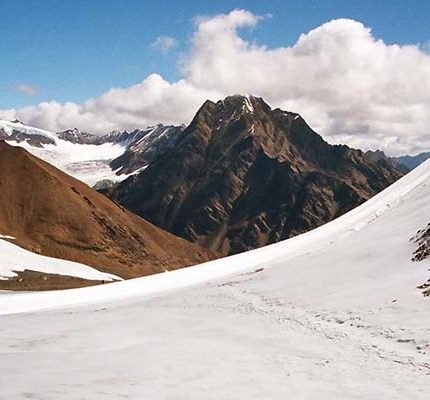
Pin Parvati Pass Trek
Pin Parvati Pass trek is one of the most high altitude trek
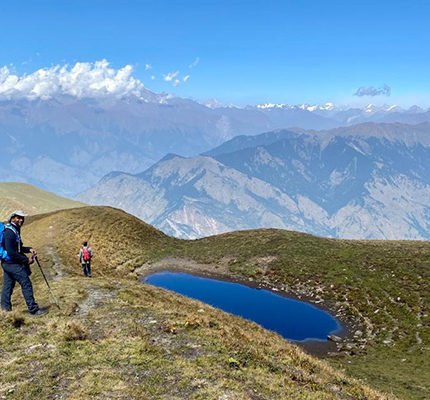
Kush Kalyan Trek
Kush Kalyan an Exquisite Meadow in Garhwal Himalayas
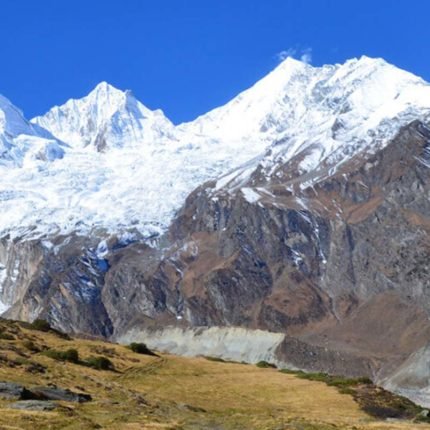
Darma Valley Trek
Darma Valley Trek a Picturesque Valley in Kumaon
Price: ₹ 16,000.00
Book the tour
Send a quick enquiry.
- Overview Itinerary Dates Include/Exclude
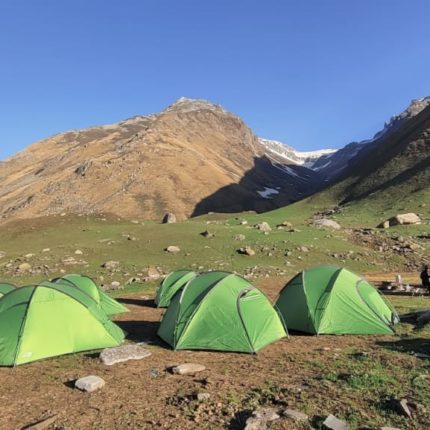
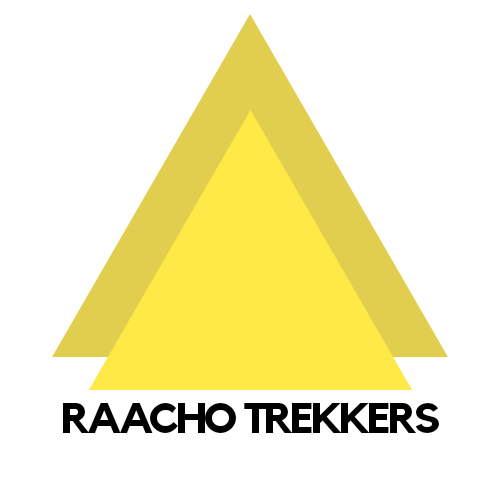
Buran Ghati Pass Trek
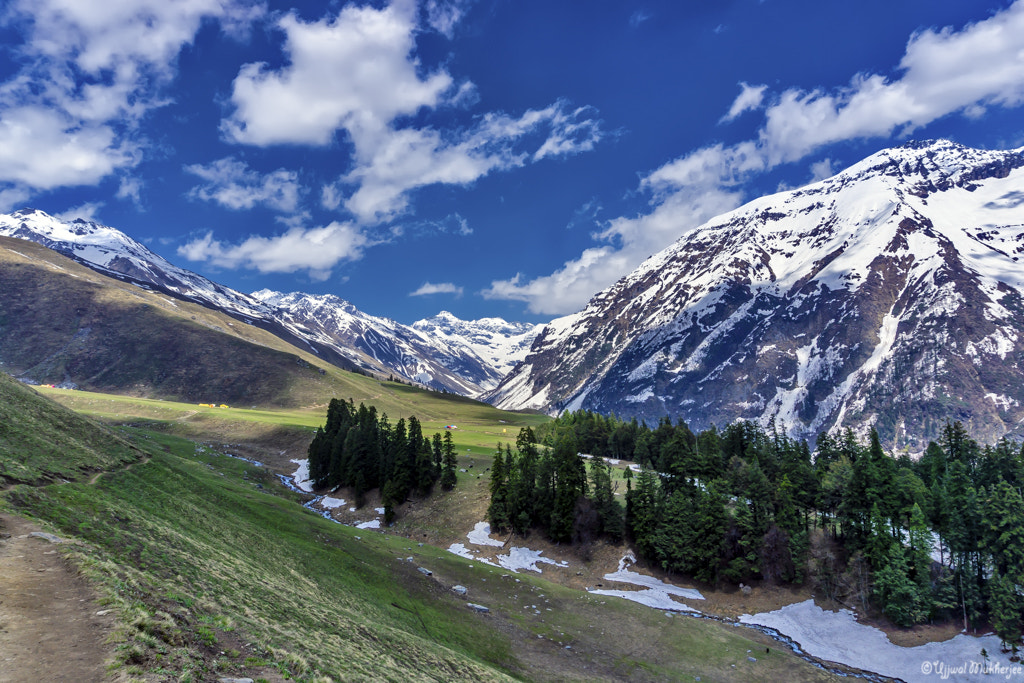
Buran Ghati (altitude 4572 meters) — also called Burando pass — trek is a classic sheepherder’s route connecting the Pabbar valley of Shimla to Baspa valley of Kinnaur , Himachal Pradesh.
The icing on the cake on this route is Chandernahan lake — the source of the Pabbar River.
It is an hour’s trek away from Litham Thach meadows. Pabbar river is a right-side tributary of the Tons River, which itself is a tributary of the Yamuna River.
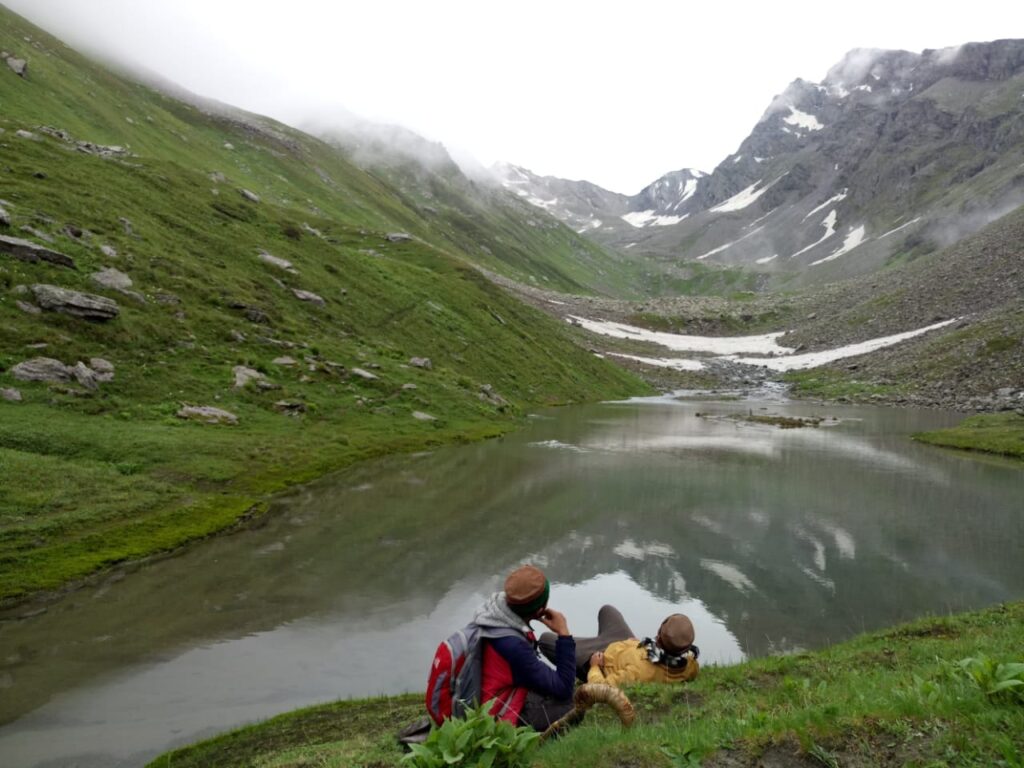
The Buran Ghati pass trek is the easiest hiking route from Baspa into Pabbar valley — the other routes are:
- Bundajan trail (altitude 4450m).
- Yusu pass (altitude 4750m).
- Gunas pass ( Sangla valley to Janglikh village via Sangla Kanda and Soroden lake).
- Rupin pass (Sangla to Dodra – Kwar).
Buran Ghati Pass ⛰
This trek from Sangla valley in Kinnaur begins in Brua (also known as Bruang or Buran village) and ends in Janglik village. Janglikh is a lovely village in the Shimla district’s Pabbar valley .
Shepherds and inhabitants of Janglikh village and the surrounding area still continue to use this route.
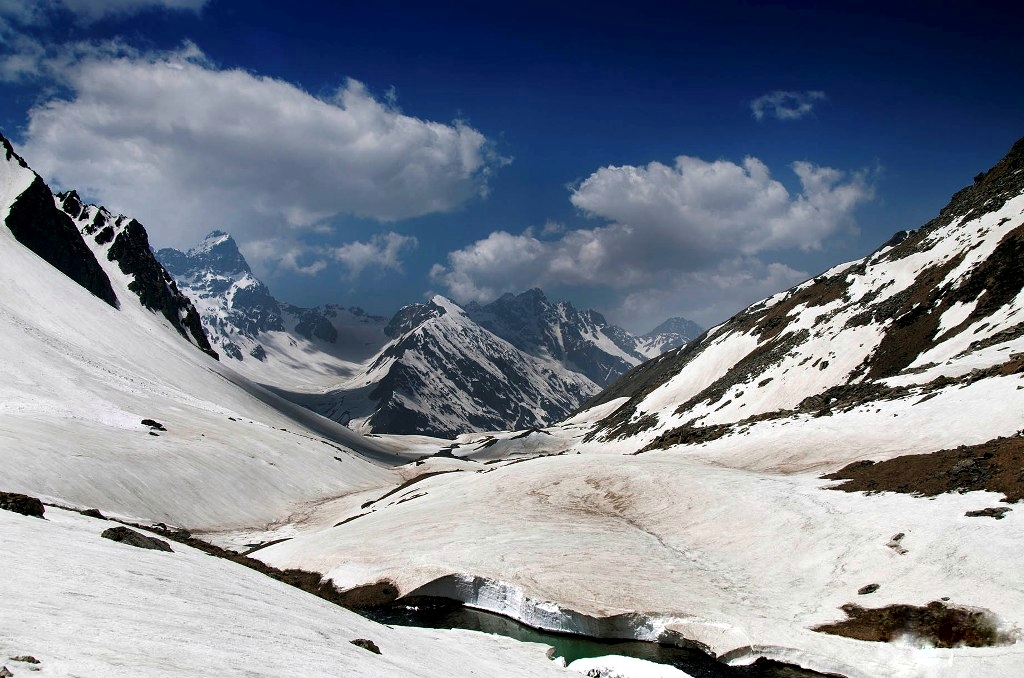
Buran Ghati Trek Events In 2024
Our Buran Ghati pass departures are scheduled for second week of May, June and first week of September. We are looking for a minimum group size of 5 people.
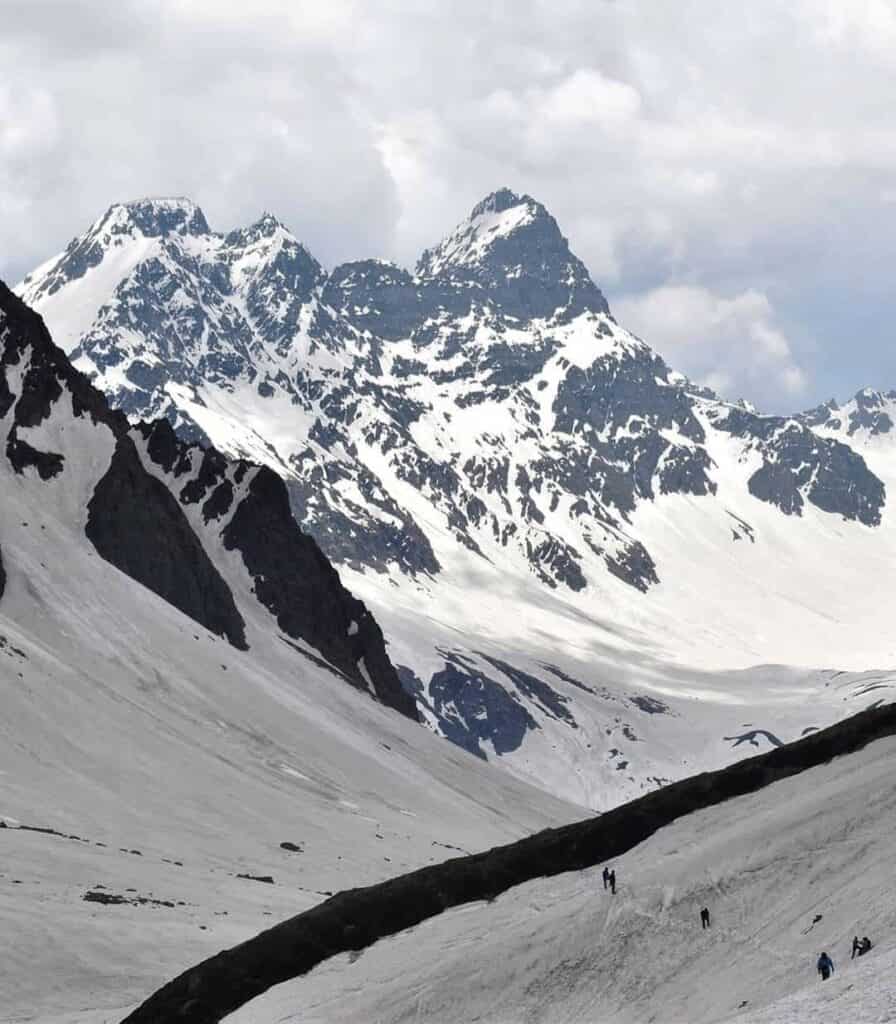
We also can run the customized Buran Ghati trips for smaller groups (less than 5 people) for an additional cost. The trek dates are subjected to the notifications and the pandemic guidelines by the government.
₹ What Does Buran Ghati Pass Trek Cost?
Our cost estimation for 2024 is based on the number of factors like the group size, pick-up place (Chandigarh/Shimla) and add-ons needed like backpack offloading, accommodation before and after the trek & drop off point (Shimla/Chandigarh). Drop an email to avail group offers & early bird discounts.
A Brief History of Buran Ghati Pass Trek Route
Janglikh village witnessed its prosperous times in history during the early colonial period.
In times when there was no road to Kinnaur; when people had to walk over high passes in order to reach Kinnaur, the trek through Pabbar valley was most frequented by both locals and European travelers.
Travel of Europeans gave access to rare cash and employment to villagers of Tungu, Romai and Janglikh while local travelers, which included mostly Kinnauras gave wealth to these villages through a barter system.
The people of Janglikh and Tungnu-Romai still talk about the time when Kinnauras (people of Brua, Sapni, etc) were so poor that their main cereal was Buckwheat (called Fafra in Kinnauri dialect); while Janglikh people had the luxury of eating rice and wheat. Brua and Sapni villagers used to shop in Janglikh and Tungnu villages.
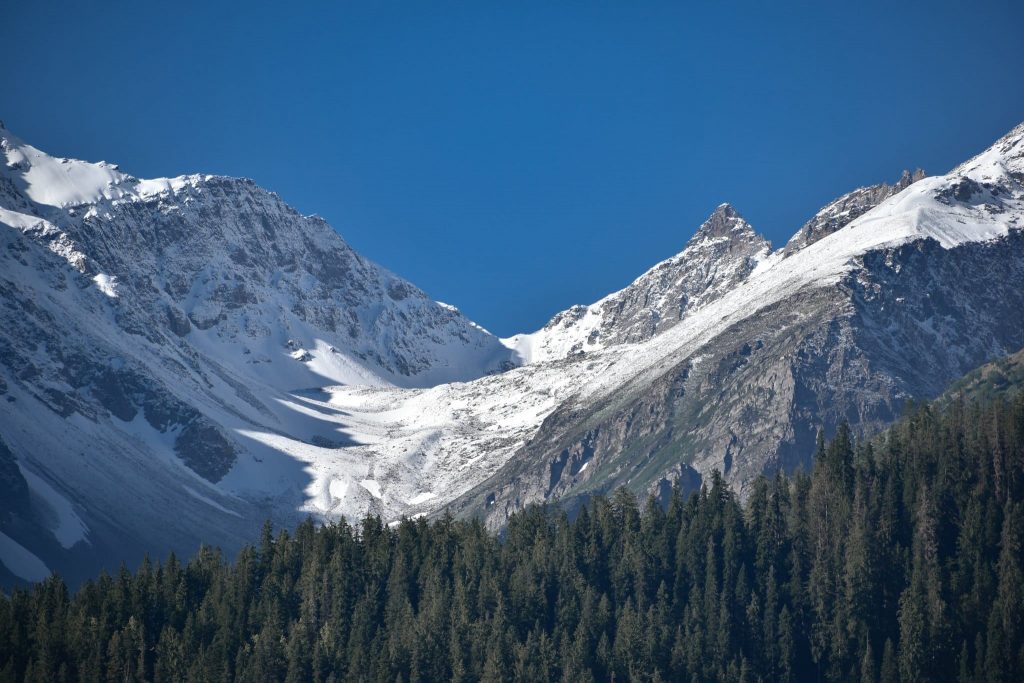
However, with the subsequent floods in Andhra khad , Pabbar river and damage to British infrastructure as well as easier access to Kinnaur through the construction of the Hindustan-Tibet Road, these villages fell out of favor and dipped in seclusion.
But, as they say, history repeats itself; the Sun is once again beginning to shine on the economic prospects of these villages.
There are two legends on how Janglikh village was named so. Some believe that it is named after the village deity “Jakh or Jakhoh”.
According to the second legend, this village was infested by the attacks of wild animals and the village could be accessed only after walking through miles and miles of dense forest.
The village location shaped the villagers into a fearless tribe who were at home in the forest among raids of the wildlife.
Thus, outsiders started calling these villagers “ Junglee or Junglee log ” and the village of Janglikh. Finally, ‘Jungli’ got corrupted to Janglikh. The village still has a dense forest around it and is subject to occasional raids by wildlife.
Detailed Itinerary & Route
Day 1: depart from shimla to sangla .
The Baspa Valley is named after the largest village of the valley, Sangla.
Located in the middle of the valley and about 18km from the nearest highway, i.e NH 5, it has found a place in an itinerary of every traveler for its spellbinding attractions like Kamru, Chansu, Basteri, Rakcham, Chitkul village and Ranikanda meadows.
Day 2: Sangla – Brua Village
On Day two head towards Brua Village, a sub-locality under Sangla town. The trek starts from Brua village.
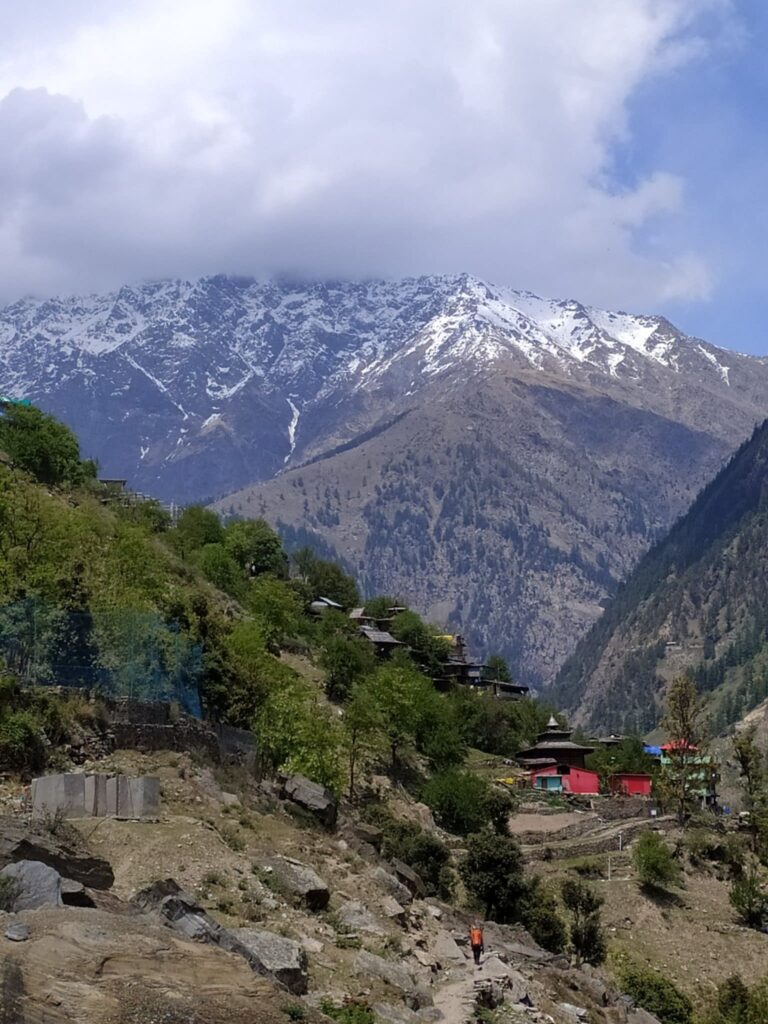
The trail changes surprisingly and on the way witness the orchards fields welcoming you for the overwhelming trek. The trail is very beautiful. Dinner and overnight stay in tents just above the village.
Day 3: Brua Village – Buran Kanda
There are two routes to reach Buran Kanda. One is via Shong village(it is close to Sangla) and the second route is via Brua village — the one we are following.
After having a fresh breakfast, start early from Brua village to the pastures of Buran Kanda. As we gain altitude, Deodar and fir forests give way to the beautiful Birch forest — found above the 3000m altitude.
Buran Kanda gives a magnificent view of the Kinner Kailash Range towering over the Baspa Valley. Dinner and overnight stay in Bura Kanda.
Day 4: Brua/Buran Kanda – Buran Pass Base Camp.
On Day #4 we cross the meadows of Bura Kanda and reach the base camp of the Buran pass, which is also known as the Burando. Dinner and overnight stay in tents. Camp under the magnificence of millions of stars.
Day 5: Pass Base Camp – Buran pass -Litham (A detour to Chandranahan lake)
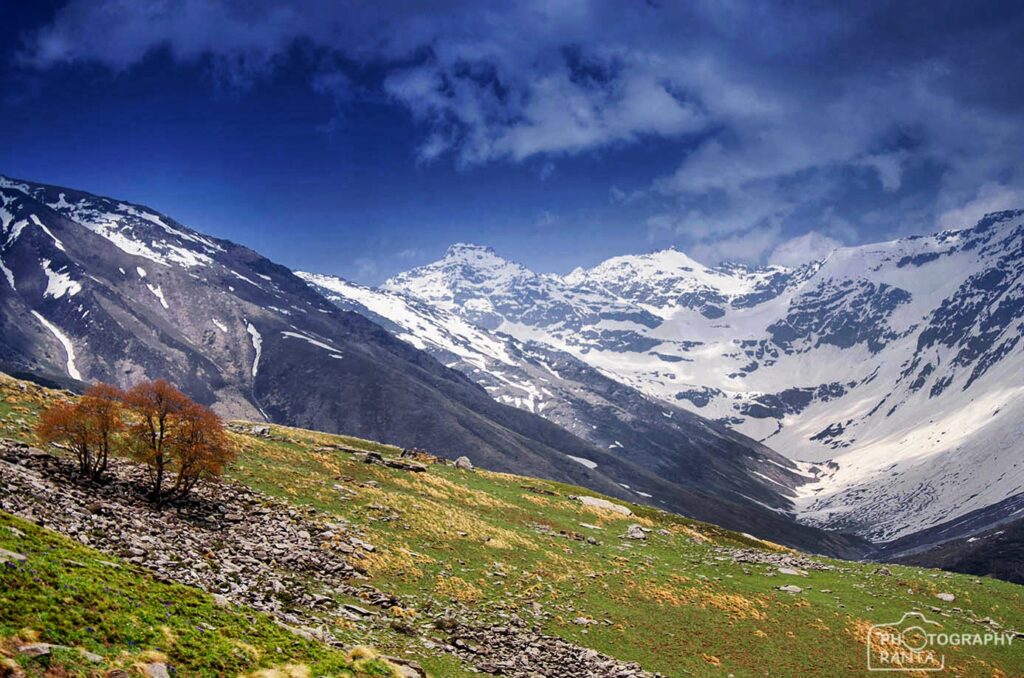
Day 05 includes crossing Buran pass (4570 m) and camping at Litham. It is an ancient route, English travelers during British rule and the Shepard from the villages often preferred this cooler route to Kinnaur to the arduous travel through the hot Sutlej valley.
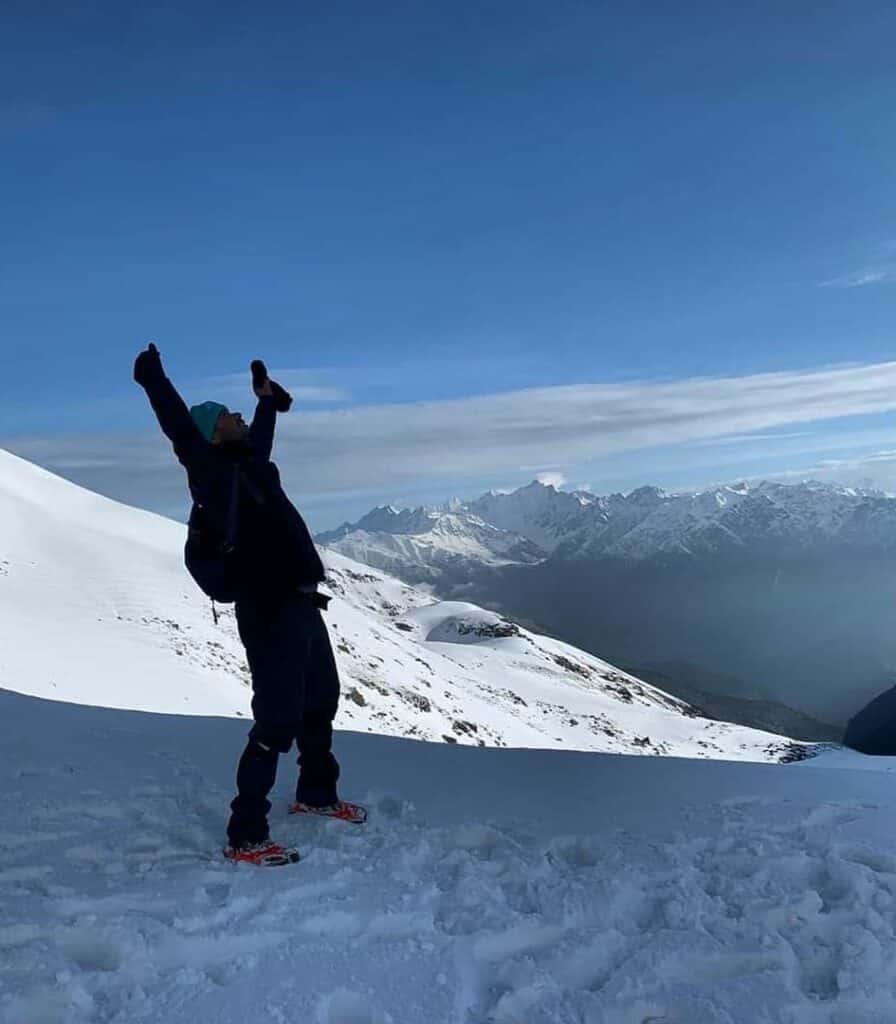
After setting up the camps at Litham Thach, we would take a detour to the Chandranahan lake. A ~1-hour hike would take us to the shore of Chandranahan lake — the source of the Pabbar river. Overnight camping at Litham.
Day 6: Litham – Dayara Thach
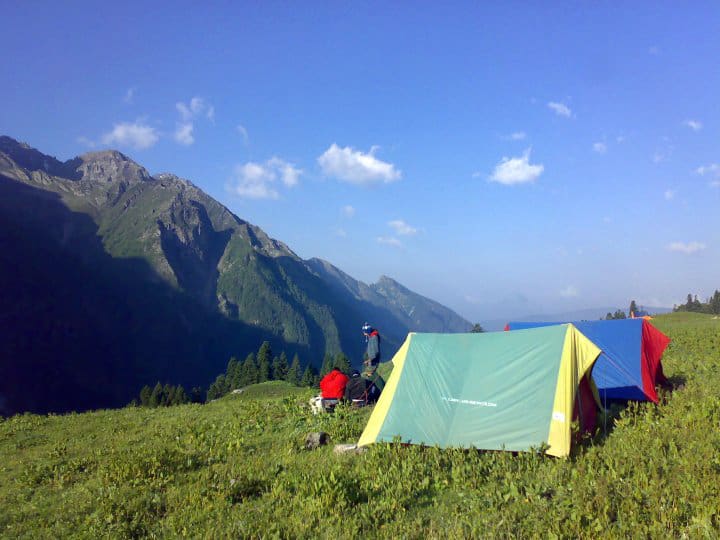
Today descends down from Litham to Dayara. The trek is moderate and the landscape is pretty good enough to overshadow the tiring journey. Get overwhelmed by the seamless green meadows and Birch-fringed pastures on the right bank of the Pabbar river. The perfect place to unwind and reflect. Overnight Tented accommodation at Dayara.
Day 7: Dayara – Janglik Village
Perched at a prominent spur, Janglikh — the last village of the Pabbar valley — is bordered by the Pabbar river on one side and its right side tributary, Tangnu on the other.
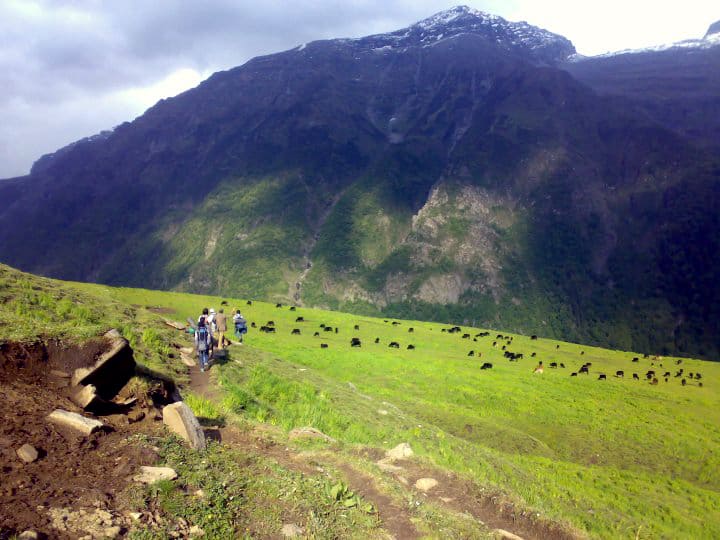
Trek down from Dayara to the village of Janglikh. Dinner and overnight stay in the village homestay/ tents.
Day 8: Janglikh village – Shimla
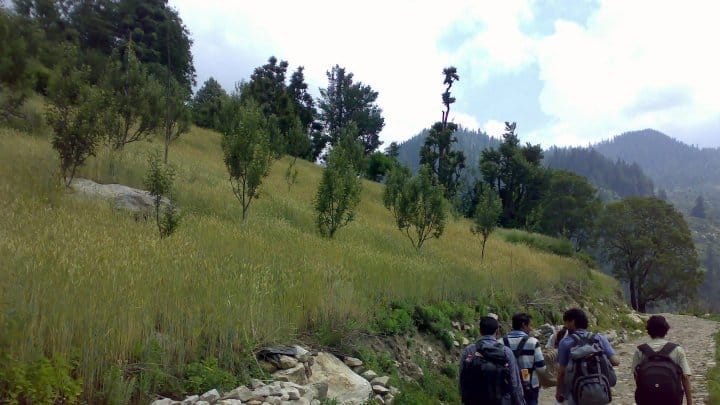
Drive back from Janglik to Shimla which takes around 5 hours.
Trek Cost Includes
- All arrangements for overnight stays during the trip.
- Camping & Climbing gear.
- All food expenses.
- Food will usually consist of morning breakfast, lunch, evening high tea, and dinner.
- All food will be vegetarian.
- Specially trained certified guides trained for emergency situations.
- Local guides and workers with in-depth knowledge about the local area.
- One luggage per person will be transported by us.
- Inner line permits (if required) and arrangements en route will be arranged by the operator.
- All stays and lodging on a twin sharing basis shall be provided..
- Any kind of personal expenses.
- Any kind of insurance.
- Anything not mentioned in the inclusion section.
- Camera fees or any other costs arising out of unforeseen circumstances or situations beyond our control.
NOTE: Trekkers are required to bring a medical certificate deeming them fit for high-altitude trekking at the start of the trek.
Backpack carrying: A porter will carry your backpack, please do not bring extra items but only the essentials needed for high altitude trek. Besides detailed planning, taking care of all the logistics, food, and good equipment, packing a backpack efficiently and carrying essential things play a key role in the success of an expedition.
Buran Ghati Trek Bare Essentials
- A pair of good quality waterproof trekking boots.
- Three pairs of socks.
- Two pairs of waterproof hiking pants.
- A pair of shorts
- Two pairs of fleece jumpers.
- Two pairs of thermal tops and bottoms
- One down jacket.
- Headgear (1 beanie/skull cap, 1 buff, and 1 trekking cap).
- A pair of thick gloves
- Personal hygiene essentials (alcohol-based gel, hand sanitizer, soap, towels, toilet papers, baby wipes, etc.)
- UV-block sunglasses.
- First aid kit.
- A water purifier and filtration bottle.
Yes. Buran Ghati trek in October month is recommended for people are into astrophotography or dawn & dusk photography. The sky during this time stays clear, and the air is ideally crisp for shooting the night sky or Milky Way.
Raacho Trekkers have a team of local guides who have trekked this region for over 10 years now. Apart from trek/terrain expertise, they offer valuable insights on the everyday life of local people, their cultures and sociocultural traits.
Buran Ghati is a moderately difficult trek. If the weather conditions are perfect, the pass can be climbed by a person (who is in good shape), who never been to the Himalayas.
Both Buran Ghati and Rupin pass are located on similar altitudes — Rupin pass is slightly higher. The terrain and landscape is also similar. In fact, the Rupin pass is placed on the same range and aerial distance between the two pass shouldn’t be more than a few kilometers. Choosing one trek over the other is a personal choice. We don’t prefer Buran over Rupin or vice-versa. You shouldn’t either.
Yes! We recommend May month to be the best time for the Buran Ghati trek. In May, you’lll witness the panoramic vistas of Himalayan ranges and lush greenery of the Pabbar valley — sans repulsive rains.
14 responses to “Buran Ghati Pass Trek”
Could you kindly share the cost per person we are 6 person
Could you please share the depature dates and per person price ?
Hello, me and my brother are looking for a trek guide for just the two of us to Bhuran Ghati. Please give me a means to communicate properly to you.
The details of Buran Ghati trek fixtures in 2023 have been emailed to you.
Cost of Buran ghati trek . 2 person.
Very well explained Buran Ghati Pass, i would also like to do this trek. I got most of the information here.keep it up the good work.
Hello, I would like to enquire about the Buran Ghati trek, we are a group of 4 people and would like to do the trek during the First Week of May. What will be the total cost of the trek and whether it is from Shimla to Shimla?
Hello Fahad! I have emailed you Buran Ghati pass trek batches scheduled for this year.
Hello, I would like to enquire about the Buran Ghati trek, we are a group of 4 people and would like to do the trek during the last week of May. What will be the total cost of the trek and whether it is from Shimla to Shimla?
I need the dates available for September and cost. What discount if I come in group. I am experienced do I can volenteer too
Could you kindly share the cost per person and maximum group size for this trek?
Hi Joy. I have mailed you the details.
RaachoTrekkers, I require the above details too. Could you share the same with me?
Hi Tejas. I have replied on the email.
Leave a Reply Cancel reply
Your email address will not be published. Required fields are marked *

The Great Pabbar Valley Trek
Buran ghati trek, via janglik, ₹14499 + 5% gst, june to october, via janglik (4575 m), ₹14499+ 5% gst, janglik to baru a, + ₹. 2142 backpack offloading + ₹. 330 outdoor insurance + ₹. 2100 single tent accommodation + ₹ 7500 shimla to janglik + ₹ 10500 barua to shimla , difficulty level - 4, himachal pradesh - 5 days - 35 kms, up to 15% off in may-jun batches for a limited period ✨, may - june & sept - october 2023.
Buran Ghati Trek is a popular trekking destination in Himachal Pradesh, India. It is known for its scenic beauty, challenging terrain, and unique cultural experiences. Here is some information about the Buran Ghati Trek:
Location : Buran Ghati Trek is located in the Kinnaur district of Himachal Pradesh. The trek starts from Janglik village, which is about 150 km from Shimla.
Trekking Season : The best time to go on Buran Ghati Trek is from mid-June to mid-October. The weather during this time is pleasant, and the trail is not covered with snow.
Trekking Difficulty : Buran Ghati Trek is a moderately challenging trek, and it requires good physical fitness and trekking experience. The trek covers a distance of about 40 km and reaches an altitude of 15,000ft.
Highlights of the Trek:
The Buran Ghati Trek offers stunning views of the Kinnaur and Kullu valleys. The trek passes through lush green forests, picturesque meadows, and beautiful waterfalls. The highlight of the trek is crossing the Buran Ghati Pass, which offers panoramic views of the Himalayan ranges. The trek also offers a unique cultural experience as it passes through several remote villages where you can interact with the locals and learn about their lifestyle and culture.
Duration: 8 days Maximum Altitude: 4,575 meters Difficulty Level: Moderate to Difficult Best Season: June to October
Buran Ghati Trek in Himachal Pradesh is famous for its scenic beauty, challenging terrain, and unique cultural experiences. Here are some reasons why it is a popular trekking destination:
1. Stunning Views: Buran Ghati Trek offers breathtaking views of the Kinnaur and Kullu valleys. The trek passes through lush green forests, picturesque meadows, and beautiful waterfalls, which provide a spectacular view of the Himalayan ranges.
2. Challenging Terrain: The Buran Ghati Trek is a moderately challenging trek that requires good physical fitness and a trekking experience. The trek covers a distance of about 40 km and reaches an altitude of 15,000 ft, which makes it a challenging but rewarding trek.
3. Cultural Experience: The trek offers a unique cultural experience as it passes through several remote villages where trekkers can interact with the locals and learn about their lifestyle and culture. Trekkers can also witness the unique architecture of the local houses, which are made of stone and wood.
4. Buran Ghati Pass: The highlight of the trek is crossing the Buran Ghati Pass, which offers panoramic views of the Himalayan ranges. The pass is located at an altitude of 15,000 ft, and the trek to the pass is a challenging climb. However, the stunning views from the top of the pass make it all worthwhile.
Overall, Buran Ghati Trek is a popular trekking destination in Himachal Pradesh that offers stunning views, challenging terrain, unique cultural experiences, and a chance to explore the beautiful landscapes of Himachal Pradesh.
Itinerary of Buran Ghati Trek
Here is a detailed itinerary for the Buran Ghati Trek:
Day 1: Shimla to Janglik Village
On Day 1 of the Buran Ghati trek, you will start from Shimla early in the morning and make your way to Janglik village, which is the starting point of the trek. The journey from Shimla to Janglik takes around 10-12 hours, covering a distance of approximately 200 km.
The drive to Janglik takes you through the beautiful Kinnaur Valley, passing through small villages and towns along the way. You will cross the Satluj River at Jeori and continue along the mountain road until you reach Janglik, which is a small village located at an altitude of 2,400 meters.
Once you reach Janglik, you will check into your guest house or homestay and rest for a while. You can explore the village and take a walk around, interact with the locals, and enjoy the stunning views of the surrounding mountains.
In the evening, your trek leader will give you a brief on the trek and the following day's plan. You will have dinner and spend the night at the guest house or homestay in Janglik. Make sure to get a good night's rest as you have a challenging trek ahead of you.
Day 2: Janglik Village to Dayara Thach
On Day 2 of the Buran Ghati trek, you will start your trek from Janglik Village and head towards Dayara Thach, which is your first campsite. The trek is about 6 km long and takes around 4-5 hours to complete.
You will begin the trek by crossing a bridge over the Rupin River and then gradually ascending through a dense forest of oak, pine, and rhododendron trees. The trail is steep and challenging in some parts, but the stunning views of the surrounding mountains make it worth the effort.
After a few hours of trekking, you will reach the picturesque Dayara Thach meadow, which is surrounded by snow-capped peaks and offers breathtaking views of the valley below. You will set up camp at Dayara Thach and spend the rest of the day exploring the area, taking in the views, and acclimatizing to the altitude.
In the evening, you will have dinner around a bonfire and retire for the night in your tents, ready for the next day's adventure.
Day 3: Dayara Thach to Litham
On Day 3 of the Buran Ghati trek, you will trek from Dayara Thach to Litham. The trek is around 6 km long and takes approximately 4-5 hours to complete.
After breakfast, you will start trekking toward Litham, which is a beautiful meadow surrounded by snow-clad peaks. The initial part of the trek is a gradual ascent through a dense forest of oak, rhododendron, and deodar trees. As you gain altitude, the vegetation becomes sparse, and the landscape transforms into a barren yet stunning terrain.
The trek becomes steeper as you approach Litham, and you will have to cross a few streams on the way. After crossing the streams, you will enter the Litham meadow, which is a vast open space with a small stream flowing through it. You will set up camp at Litham and spend the rest of the day exploring the area and acclimatizing to the altitude.
In the evening, you can enjoy a hot cup of tea or coffee while taking in the breathtaking views of the surrounding mountains. After dinner, you will retire for the night in your tents, ready for the next day's adventure.
Day 4: Litham to Chandranahan Lake and back to Litham
On Day 4 of the Buran Ghati trek, you will trek from Litham to Chandranahan Lake and back to Litham. This is the most challenging day of the trek, as you will be gaining a lot of altitude and trekking through rough terrain.
After an early breakfast, you will begin the ascent toward Chandranahan Lake. The trail initially passes through a moraine, and then the terrain becomes rocky and steep. The trek involves crossing a few glaciers and streams, and you will have to navigate through boulder fields and steep ascents.
After a challenging climb, you will finally reach the beautiful Chandranahan Lake, which is located at an altitude of 4,200 meters. The lake is a sacred site for the locals, and it is surrounded by snow-capped mountains and glaciers. You can spend some time taking in the stunning views and exploring the area before starting the descent back to Litham.
The descent is equally challenging, as you will have to navigate through the rough terrain and boulder fields. It takes around 3-4 hours to reach Litham from Chandranahan Lake. Once you reach Litham, you can rest and relax in your tents, and enjoy a hot meal before retiring for the night.
Day 5: Litham to Buran Ghati Base Camp
On Day 5 of the Buran Ghati trek, you will trek from Litham to Buran Ghati Base Camp. This is a moderate day of the trek, with a gradual ascent through beautiful m eadows and forests.
After an early breakfast, you will begin the trek toward Buran Ghati Base Camp. The trail initially passes through the Litham meadow, and then you will cross a stream and enter a dense forest. The forest is full of oak, pine, and deodar trees, and the trail winds through the forest with occasional glimpses of the surrounding mountains.
After trekking for a few hours, you will reach the picturesque Buran Ghati Base Camp, which is located at an altitude of 3,800 meters. The campsite is located in a beautiful meadow, surrounded by mountains on all sides. You can rest and relax in your tents, and explore the area around the campsite. The base camp offers stunning views of the surrounding peaks, and you can witness the sunset over the mountains.
In the evening, you will be served a hot meal, followed by a briefing about the next day's trek. You can retire to your tents early to get some rest and prepare for the next day's challenging trek.
Day 6: Buran Ghati Base Camp to Buran Ghati Pass to River Camp
On Day 6 of the Buran Ghati trek, you will cross the Buran Ghati Pass and trek down to the River Camp.
You will start the day early, as this is the most challenging day of the trek. The trail starts with a steep climb toward the Buran Ghati Pass, which is located at an altitude of 4,550 meters. The climb is steep and involves crossing boulder fields, and you need to be careful while navigating the trail. As you ascend, the views of the surrounding peaks become more and more breathtaking.
Once you reach the top of the pass, you will be rewarded with stunning views of the surrounding mountains and the valley below. From here, the trail descends steeply towards the River Camp, which is located at an altitude of 3,500 meters. The descent is steep and involves crossing scree slopes, so you need to be cautious while trekking down.
After trekking for a few hours, you will reach the River Camp, which is located next to a beautiful river. You can relax and enjoy the natural surroundings, and take a dip in the river if you wish. In the evening, you will be served a hot meal, and you can enjoy the warmth of the campfire while listening to the sound of the river. You can retire to your tents early to get some rest and prepare for the next day's trek.
Day 7: River Camp to Barua Village and back to Shimla
On Day 7 of the Buran Ghati trek, you will trek from the River Camp to Barua Village and then drive back to Shimla.
You will start early in the morning, trekking through the lush green forests and crossing the river a few times. The trail gradually descends towards Barua Village, which is located at an altitude of 2,700 meters. As you trek down, you will pass through beautiful meadows, dense forests, and small streams.
After reaching Barua Village, you will board a vehicle and drive back to Shimla. The drive takes around 7-8 hours, and you will reach Shimla by evening. You can spend the evening exploring Shimla, shopping for souvenirs, and enjoying a hot meal at a local restaurant.
This marks the end of your Buran Ghati trek. You will take back memories of the beautiful Himalayan landscapes, the challenging trails, and the warm hospitality of the locals.
What is included in package?
Food as per menu on the trek
Forest Permits/Camping Charges, if any (upto the amount charged for Indian nationals)
Tents, Sleeping bags, Sleeping mats
Safety Equipment includes static rescue rope, seat harness, carabiners, pulleys
Trek guide, cook, helpers, and porters for carrying common supplies
Mountaineering course certified Trek Leader with Wilderness Emergency Responder & Rescue. course from NIM Uttarkashi
What is not included in package?
Meals during road journeys
Offloading of personal bags
Any kind of Insurance
Any expense of personal nature
Any expense not specified in the inclusion list
How difficult is the Buran Ghati Trek?
The Buran Ghati Trek is considered a challenging trek and is recommended for experienced trekkers who are physically fit and have prior experience in high-altitude treks. The trail includes steep ascents and descents, rocky terrain, narrow trails, and some technical sections, including a snow bridge crossing. The altitude gain is significant, with the highest point being the Buran Ghati Pass at an elevation of 15,000 feet (4,572 meters). The trek involves long hours of walking and can take up to 7-8 hours per day. Proper acclimatization and physical fitness are essential for completing this trek.
What is the best time to do the Buran Ghati Trek?
The best time to do the Buran Ghati Trek is during the summer months of May to June and September to October. During these months, the weather is pleasant with clear skies and mild temperatures, making it an ideal time for trekking. The monsoon season from July to August is not recommended for trekking due to the heavy rainfall and the possibility of landslides and flooding. The winter season from Novem ber to April is also not recommended as the trekking route is covered with snow, and the temperatures can drop to sub-zero levels, making it difficult to trek.
What is the altitude of the Buran Ghati Pass?
The altitude of the Buran Ghati Pass is approximately 15,000 feet (4,572 meters) above sea level. It is one of the highest mountain passes in the Indian state of Himachal Pradesh and offers spectacular views of the surrounding peaks and valleys. The trek to the Buran Ghati Pass is a challenging one, with steep ascents and descents, and requires a good level of physical fitness and acclimatization to the high altitude. However, the stunning views and the sense of accomplishment after completing the trek make it a truly unforgettable experience.
Is there any mobile network connectivity during the Buran Ghati Trek?
The mobile network connectivity during the Buran Ghati Trek is limited and often non-existent in some areas. While you may get some network coverage in the towns and villages before the start of the trek, as you ascend higher into the mountains, the signal strength may become weaker or completely unavailable. Therefore, it's advisable to inform your family and friends beforehand about your itinerary and expected return date and to carry a satellite phone or a walkie-talkie for emergencies. Some of the mobile network providers that have limited connectivity in the region include BSNL, Airtel, and Jio.
What is the cost of the Buran Ghati Trek?
The cost of the Buran Ghati Trek can vary depending on the tour operator, season, and the inclusions in the package. On average, the cost can range from 15,000 to 25,000 Indian Rupees per person for a 7-8 day trek. This usually includes transportation, accommodation, meals, permits, and guide fees. However, additional costs such as equipment rentals, travel insurance, and personal expenses are not included in the package. It is recommended to compare prices and services offered by different trekking companies before booking.
What is the duration of the Buran Ghati Trek?
The Buran Ghati Trek usually takes 8 days and 7 nights to complete. However, the duration may vary depending on the itinerary chosen and the pace of the trekker.
What is the total distance covered during the Buran Ghati Trek?
The total distance covered during the Buran Ghati Trek is approximately 47 kilometers, starting from Janglik Village and ending at Barua Village. The distance may vary slightly depending on the specific route taken by the trekking group.
What kind of weather can one expect during the Buran Ghati Trek?
The weather during the Buran Ghati Trek can be unpredictable due to the high altitude and mountainous terrain. The trek is usually done during the summer months from May to June and September to October when the weather is relatively stable. During these months, the weather is usually sunny with clear skies, cool temperatures during the day, and chilly nights. However, it is important to be prepared for sudden changes in weather, including rain, snow, and strong winds, which can occur at any time. It is recommended to check the weather forecast before starting the trek and to carry appropriate gear to stay warm and dry in case of unexpected weather conditions.
What kind of accommodation is available during the Buran Ghati Trek?
During the Buran Ghati Trek, trekkers usually stay in tents or camping sites. The tour operators generally provide all necessary camping equipment such as tents, sleeping bags, and sleeping mats. In some places like Janglik Village and Barua Village, homestays and guesthouses are also available for accommodation. These options may vary depending on the tour operator and the itinerary chosen. It's best to check with the tour operator beforehand for more specific details on the accommodation arrangements during the trek.
What are the highlights of the Buran Ghati Trek?
The Buran Ghati Trek is a beautiful and adventurous trek in the Himachal region of India. Here are some of the highlights of the trek:
1. Chandranahan Lake: This glacial lake is one of the most stunning features of the trek. The lake is situated at an altitude of 4,200 meters and is surrounded by snow-capped peaks.
2. Buran Ghati Pass: The Buran Ghati Pass is the highest point of the trek at an altitude of 4,550 meters. The pass offers breathtaking views of th e surrounding mountains and valleys.
3. River Camp: The river camp is situated at the banks of the Pabbar River and is a beautiful place to rest and relax after a long day of trekking.
4. Forests and Meadows: The Buran Ghati Trek takes you through dense forests and beautiful meadows filled with wildflowers, offering scenic views at every turn.
5. Local Villages: The trek also takes you through local villages, giving you a glimpse into the local culture and lifestyle of the people living in the remote regions of Himachal Pradesh.
6. Wildlife: The trek offers an opportunity to spot a variety of wildlife including musk deer, Himalayan black bear, and snow leopard (rarely seen).
Overall, the Buran Ghati Trek offers a perfect combination of adventure, natural beauty, and cultural experience.

- Trekking & Travel Events
- Travel Organizations
- Himalayan Treks
- Maharashtra Treks
- Karnataka Treks
- Travel Guides
- Weekend Getaways
- Trekking Tips & Advice
Buran Ghati Trek: A Thrilling Mountain Escape
- Trekking Destinations
Are you an adventurous soul seeking to immerse yourself in the breathtaking landscapes of the Himalayas? If so, the Buran Ghati Trek should be on your bucket list.
This captivating trek takes you through picturesque valleys, dense forests, and snow-covered mountain passes, offering an unforgettable experience for both seasoned trekkers and beginners.
In this article, we will delve into the details of the Buran Ghati Trek, highlighting its stunning vistas, challenging terrains, and the joy of conquering nature’s marvels.
- Max Altitude: 15,000 Ft. (4,572M)
- Average Trekking Fees: INR 13000 – INR 15,000
- Distance: 40 – 45 kms
- Difficulty: Moderate-Difficult
- Duration: 7-9 days
- Ideal For: Experienced Trekkers Only
- Best Season: April – June & September – October
- Region: Himachal Pradesh
Table of Contents
Overview of the Buran Ghati Trek
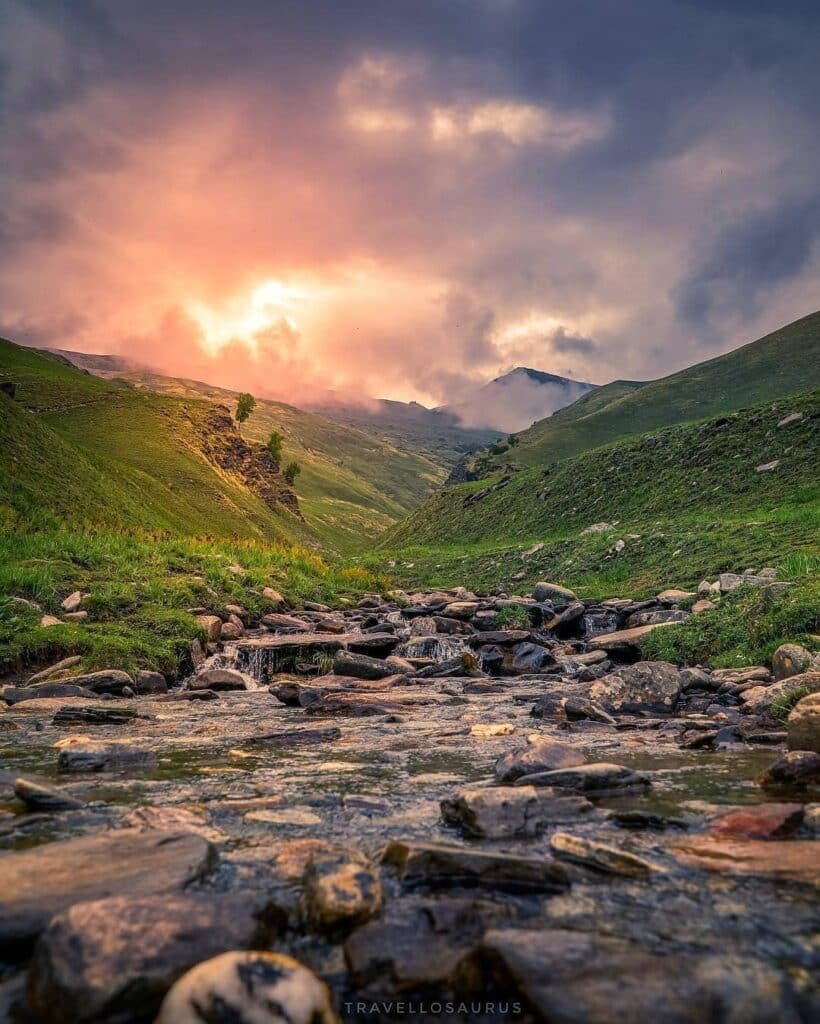
Nestled in the magnificent Himalayas, the Buran Ghati Trek is a 9-day expedition that takes you to an altitude of approximately 15,000 feet . The trek covers a distance of approximately 45 kilometres , offering a fantastic blend of adventure, natural beauty, and cultural exploration.
The trek begins at Janglik village and takes you through dense forests, charming meadows, and remote Himalayan villages. The highlight of the Buran Ghati trek is crossing the Buran Pass, which stands at an impressive altitude of around 4,572 meters . The pass is often adorned with snow, making the journey even more breathtaking.
As you ascend, you will witness stunning panoramic views of towering peaks, including the majestic Dhauladhar and Kinnaur ranges. The trek also takes you alongside gushing streams, sparkling waterfalls, and pristine alpine lakes, adding to the scenic allure of the trail.
The Buran Ghati trek is known for its adventurous aspects, including traversing challenging terrains, climbing steep slopes, and camping at remote locations. It requires a moderate level of fitness and prior trekking experience. The trek also offers indulging opportunities like rock climbing and rappelling.
Along the way, you’ll have the chance to interact with the locals and learn about their unique culture and way of life. The trek concludes at Barua village, leaving you with lasting memories of the Himalayan wilderness and a sense of accomplishment. The Buran Ghati trek is a true gem for adventure enthusiasts and nature lovers seeking an unforgettable mountain experience.
Additional Information for the Buran Ghati Trek
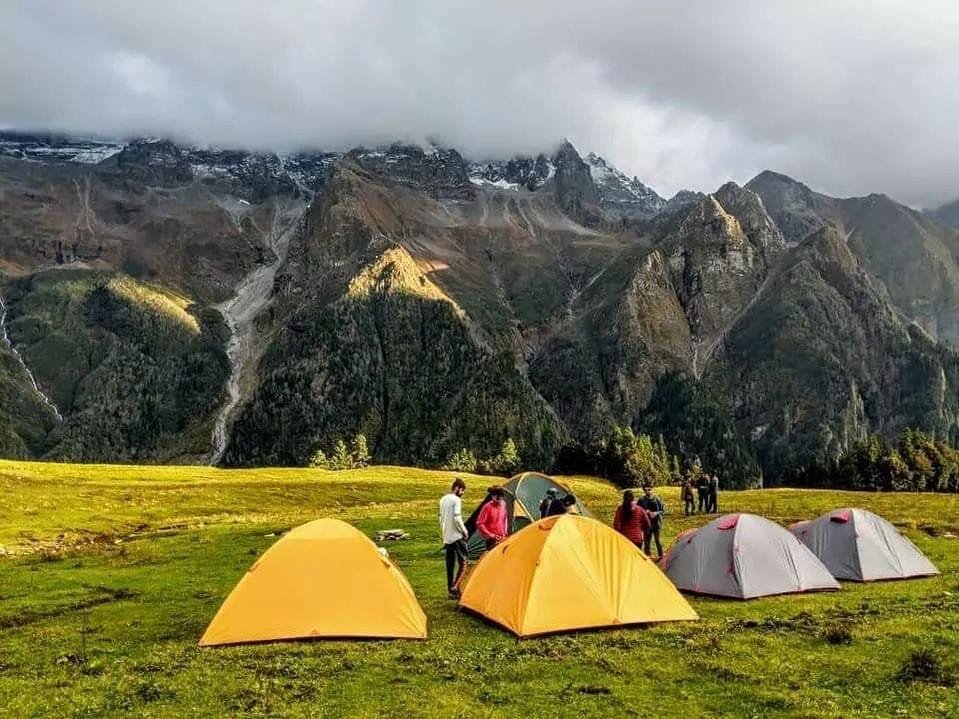
Trek Difficulty & Duration
The Buran Ghati Trek is considered a moderate to difficult level trek , suitable for experienced trekkers with a good fitness level. It involves steep ascents, challenging terrains, and camping at high altitudes. The trek typically takes around 6 to 8 days to complete , covering a distance of approximately 45 kilometres , including the ascent and descent of the Buran Pass.
Getting Prepared for the Trek
Before embarking on the Buran Ghati Trek, proper preparation is essential to ensure a safe and enjoyable experience. Here are a few key factors to consider:
Physical Fitness and Training
To fully enjoy the trek, it is crucial to be physically fit. Regular cardiovascular exercises like jogging or cycling can help improve stamina. Strength and endurance training exercises, such as hiking or stair climbing, can also prepare your muscles for the trek’s demanding terrains.
Acclimatisation
Acclimatisation becomes vital to prevent altitude sickness as you ascend to higher altitudes. Plan your itinerary to allow gradual altitude gain, ensuring your body has enough time to adjust to the changing conditions. Stay hydrated, avoid alcohol, and listen to your body’s signals.
Best Time for the Buran Ghati Trek
The best time to undertake the Buran Ghati trek is from April to June and September to October.
April to June is considered the pre-monsoon season , offering pleasant weather with clear skies and moderate temperatures. The days are usually sunny, and the trekking trails are in good condition. The meadows and forests come alive with vibrant flowers and lush greenery, creating a picturesque landscape. However, it’s important to note that the chances of encountering snow at higher altitudes increase as the season progresses.
September to October is the post-monsoon season, characterised by stable weather conditions and less rainfall. During this time, the skies are relatively straightforward, and the temperatures are mild, making it comfortable for trekking. The autumn season adds a touch of beauty to the surroundings as the foliage changes colour, creating a stunning tapestry of reds and yellows.
It’s advisable to avoid the monsoon season (July and August) as heavy rainfall can make the trails slippery and increase the risk of landslides. Similarly, the winter months (November to March) are freezing and receive heavy snowfall, making the trek challenging and hazardous.
By planning your Buran Ghati trek during the recommended periods, you can maximise your chances of enjoying pleasant weather, clear views of the mountains, and a safe and memorable trekking experience.
Costing & Budgeting
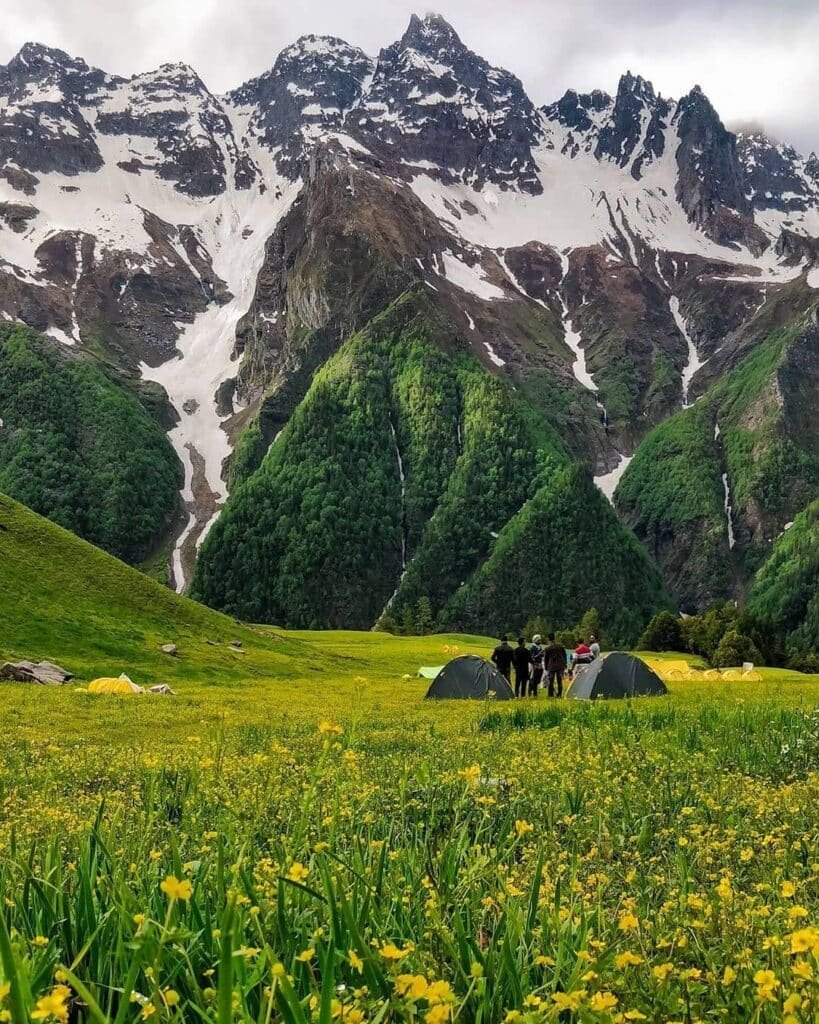
The cost and budgeting for the Buran Ghati Trek can vary depending on various factors, such as the trekking season, mode of transportation, accommodation choices, and additional expenses. Here is a general overview to help you plan:
- Trekking Organisation Fees : If you opt for a guided trekking group, it typically includes services like accommodation, meals, a guide, a porter, camping equipment, permits, and transportation to and from the base camp. The cost can range from approximately INR 13,500 to INR 17,000 per person for a 6-8 day trek.
- Transportation: Transportation to the trek’s starting point, usually Janglik village, is an additional expense. Depending on your location, consider the cost of flights, buses, or taxis to reach the nearest city or town.
- If you need to get your own trekking gear, you may need to rent or purchase equipment such as trekking shoes, backpacks, sleeping bags, and jackets. These costs can vary based on your requirements.
- To save on costs, consider renting trekking gear such as sleeping bags, backpacks, and jackets from local shops or trekking agencies instead of purchasing them outright.
- Miscellaneous Expenses: It’s advisable to keep some extra cash for unforeseen expenses, snacks, drinks, tips for guides and porters, and any additional activities you may want to indulge in during the trek.
How To Reach?
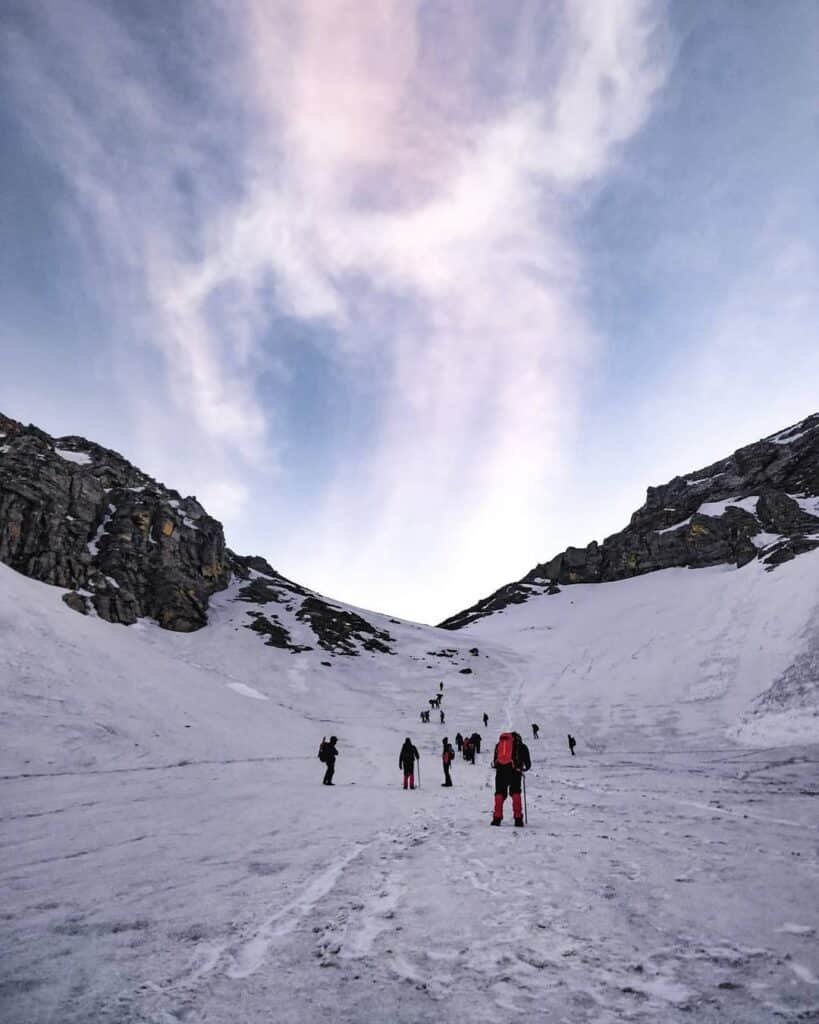
Reaching Shimla can be conveniently done by combining flights or trains to Delhi or Chandigarh, followed by an overnight bus journey to Shimla.
- For flights, Delhi & Chandigarh are the nearest major airports. From there, you can board a comfortable overnight bus to Shimla, which takes around 8-9 hours & 4-5 hours, respectively.
- Alternatively, you can take a train to either Delhi or Chandigarh. You can board a comfortable overnight bus from Delhi to Shimla, which takes around 8-9 hours. From Chandigarh, you can also find overnight bus services to Shimla with a travel time of around 4-5 hours.
- For train travel, Delhi and Chandigarh have well-connected railway stations with regular trains from major cities in India. From there, you can proceed with the overnight bus journey to Shimla.
Flight and train options offer convenient connections to Shimla, and the overnight bus journey provides a comfortable and cost-effective way to reach the pick-up point for most trekking organisations.
Buran Ghati Trek Itinerary
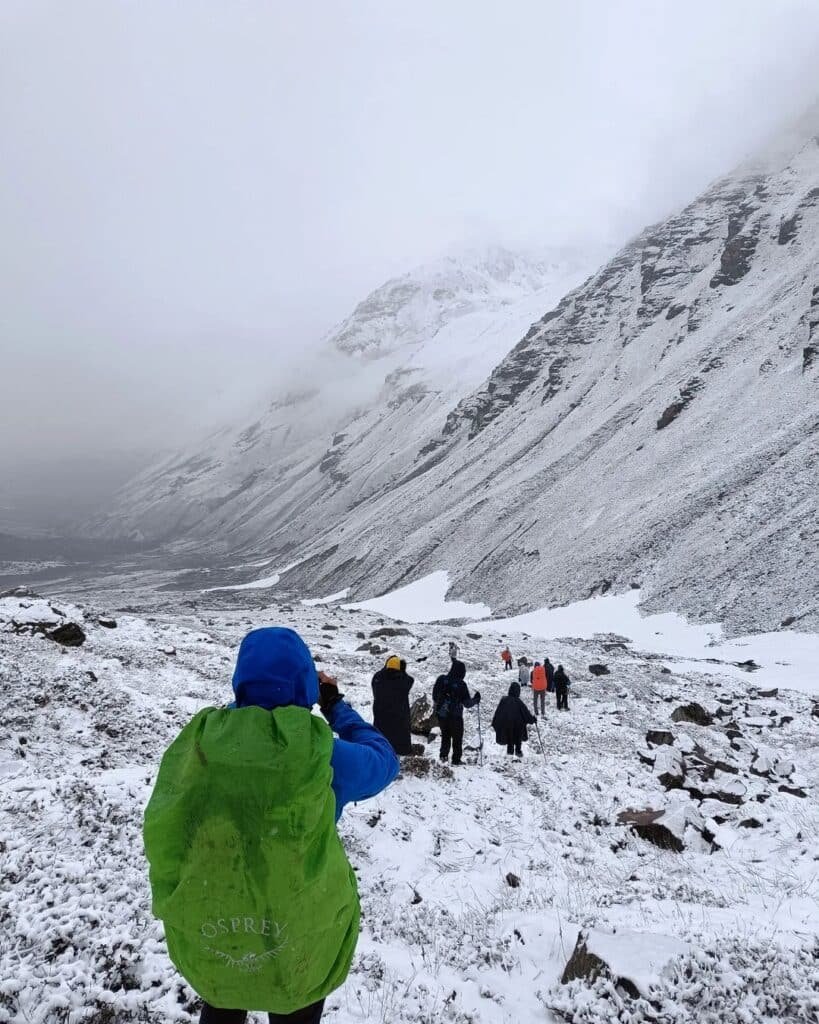
Day 1: Arrival in Shimla
Your adventure begins as you arrive in Shimla, the capital city of Himachal Pradesh. Shimla, known for its colonial architecture and scenic beauty, is the gateway to the Buran Ghati Trek. Take some time to explore the city’s attractions, such as the Mall Road and Christ Church, while acclimatising to the altitude.
Day 2: Shimla to Janglik – 150 KM Drive
After a hearty breakfast, embark on a picturesque drive from Shimla to Janglik, a small mountain village. The journey offers stunning views of the surrounding landscapes and introduces you to the serenity of the Himalayas. Reach Janglik and spend the night in a cosy guesthouse, preparing for the exciting trek ahead.
Day 3: Janglik to Dayara – 7.5 KM | 5-6 Hours
The trek officially begins today. Start your day with a nourishing breakfast and set off on the trail to Dayara. As you traverse through dense forests of oak and pine, be captivated by the symphony of nature’s sounds. The enchanting beauty of Dayara welcomes you with open arms as you reach the campsite. Settle in for a peaceful night surrounded by nature’s tranquillity.
Day 4: Dayara to Litham – 5.9 KM | 3-4 Hours
Awake to the crisp mountain air and embark on the trail from Dayara to Lytham. This leg of the trek offers mesmerising vistas of snow-capped peaks and vibrant meadows. As you ascend higher, you may encounter patches of snow, adding to the thrill of the adventure. Reach Litham, a beautiful campsite near a gushing river, and rest well.
Day 5: Litham to Chandranahan & back- 6.9 KM | 4-5 Hours
Today’s trek takes you to Chandranahan, a glacial lake renowned for its mystical beauty. The trail presents a challenging climb, but the rewards are unparalleled. Witness the surreal turquoise waters of Chandranahan and be awe-struck by the surrounding panoramic views. Spend the night camping near the lake, revelling in the serenity of the Himalayas.
Day 6: Litham to Dhunda – 4.6 KM | 4-5 Hours
The trail takes you through rocky terrains, testing your endurance and agility. Marvel at the grandeur of the surrounding peaks as you ascend higher. Reach Dhunda, a high-altitude campsite offering majestic views, and rest for the night amidst nature’s wonders.
Day 7: Dhunda to Buran Ghati and Munirang – 8 KM | 9-10 Hours
Today’s adventure is the highlight of the trek—the crossing of the Buran Ghati Pass. Be prepared for a challenging climb and snow-covered landscapes. At approximately 15,000 feet, the pass rewards you with breathtaking views of the Himalayan ranges. Descend from Buran Ghati and continue trekking to Munirang, a mesmerising meadow serving as your night’s campsite.
Day 8: Munirang to Barua Village – 5.7 KM | 2-3 Hours
As you bid adieu to the enchanting Munirang, the trail leads you to Barua Village. Descend through lush green meadows and quaint villages, immersing yourself in the local culture and traditions. Interact with the friendly villagers and learn about their way of life. Reach Barua Village, where you’ll spend the night and savour the warmth of the community.
Day 9: Barua Village to Shimla – 250 KM Drive
After a memorable adventure in the mountains, it’s time to bid farewell to Barua Village and make your way back to Shimla. The journey takes you through scenic valleys and winding roads, offering one last chance to immerse yourself in the region’s beauty. Reach Shimla, where you can reflect on incredible experiences and create lasting memories.
Please Note: This is a general itinerary, followed by most of the trekking groups in India. However, there might be slight differences in the itinerary depending on the trekking group you opt to go with.
Highlights of the Buran Ghati Trek
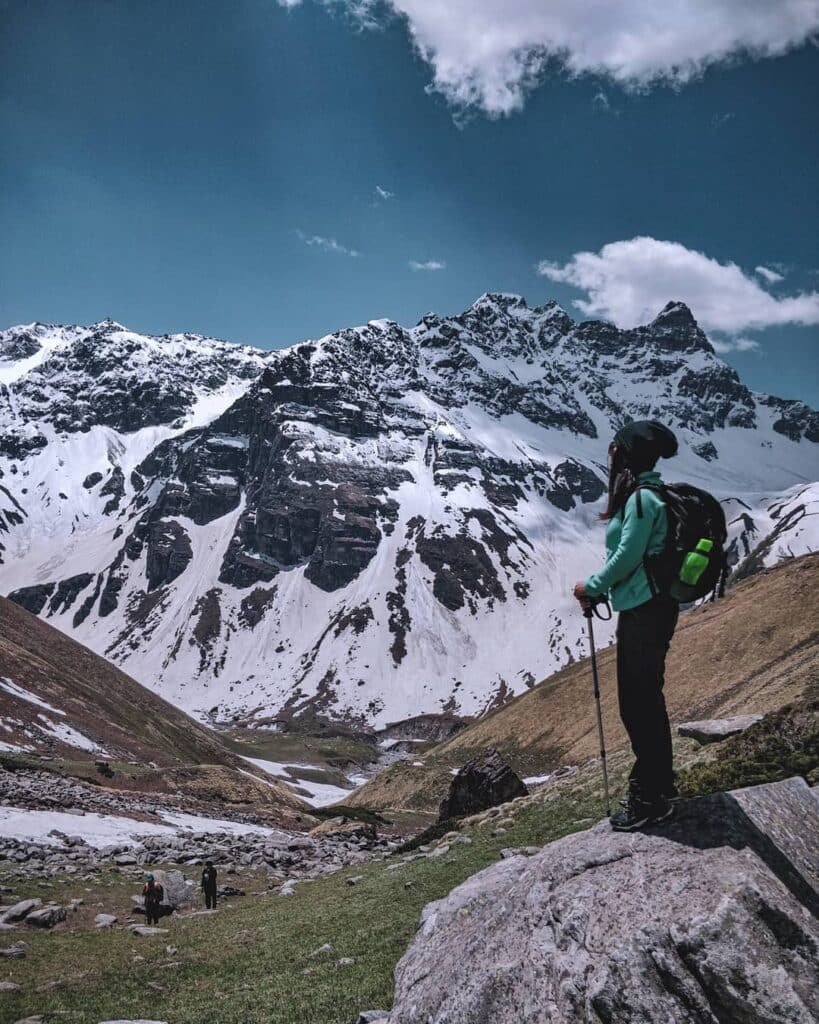
The Buran Ghati trek is a mesmerising adventure that offers a plethora of highlights, making it a must-visit for trekking enthusiasts. Here are the key highlights of the Buran Ghati trek:
- Buran Pass: The trek reaches its pinnacle at the Buran Pass, at an impressive altitude of around 4,500 meters. Crossing the pass provides an exhilarating experience and rewards trekkers with breathtaking panoramic views of snow-clad peaks.
- Scenic Landscapes: Throughout the trek, you’ll be treated to stunning landscapes comprising dense forests, picturesque meadows, sparkling streams, and charming Himalayan villages. The beauty of the Dhauladhar and Kinnaur ranges adds to the allure of the surroundings.
- Chandranahan Lake: Located at approximately 4,300 meters, this glacial lake captivates trekkers with its crystal-clear waters and surrounding snow-capped peaks. The tranquil ambience and the scenic beauty of Chandranahan Lake make it a mesmerising sight and a perfect spot for trekkers to unwind and soak in the serenity of the Himalayas.
- Cultural Immersion: Interact with the local villagers and learn about their unique culture and way of life. Experience their warm hospitality, taste local cuisine, and witness traditional rituals, enhancing your cultural understanding of the region.
- Adventure Elements: The Buran Ghati trek offers thrilling aspects such as climbing steep slopes, crossing snowfields, and camping at remote locations. It presents opportunities for activities like rock climbing and rappelling, adding an adventurous element to the trek.
The Buran Ghati trek offers a perfect blend of natural beauty, cultural immersion, adventure, and serenity, leaving trekkers with unforgettable memories of the stunning Himalayan wilderness.
Essential Gear and Packing List
Packaging the right gear and equipment ensures a safe and comfortable trek. Here’s a checklist to help you:
- Sturdy trekking shoes
- Layered clothing for varying temperatures
- Warm jackets and thermals
- Trekking pants
- Socks and gloves
- Sunglasses and sunscreen
- Sleeping bag suitable for cold weather
- Water bottles and water purification tablets
- Headlamp or flashlight
- Trekking pole for stability
- First aid kit
Safety Measures and Tips
While embarking on the Buran Ghati Trek, prioritise safety and maximise your experience. Here are some essential safety measures and tips to keep in mind:
- Acclimatise properly and listen to your body.
- Stay hydrated and carry an adequate supply of water.
- Follow the instructions of your trek leader and guides.
- Pack light and carry only the essentials.
- Respect the environment and practice responsible trekking.
- Stay updated on weather conditions and be prepared for changes.
- Carry extra food supplies and energy bars for emergencies.
- Keep significant contact numbers and emergency contacts handy.
The Buran Ghati Trek is an incredible journey that allows you to explore the pristine beauty of the Himalayas. From snow-covered mountain passes to glacial lakes and charming villages, this trek offers diverse experiences. Immerse yourself in the awe-inspiring landscapes, challenge your limits, and create memories that will last a lifetime.
The Buran Ghati Trek is moderate to difficult, requiring prior trekking experience and good fitness. It involves steep ascents, challenging terrains, and camping at high altitudes.
The Buran Ghati Trek is not recommended for beginners due to its moderate to difficult difficulty. It is better suited for trekkers with prior experience in high-altitude trekking and a good fitness level.
The Buran Ghati Trek spans approximately 45 kilometres in total. It covers a significant distance, taking trekkers through forests, meadows, and villages and eventually reaching the Buran Pass at around 4,500 meters.
The best months for the Buran Ghati Trek are April to June and September to October. These months offer pleasant weather, clear skies, and favourable trekking conditions, maximising the chances of a safe and enjoyable experience.
Kuari Pass , Bhrigu Lake , Brahmatal Trek , Sar Pass Trek , Shrikhand Mahadev Trek , Bali Pass Trek , Kareri Lake Trek , Rupin Pass , Tarsar Marsar Trek
- trekking guides
- No comments yet.
Add a comment
Leave a reply · cancel reply.
Your email address will not be published. Required fields are marked *
This site uses Akismet to reduce spam. Learn how your comment data is processed .
- Share via...

Buran Ghati Trek
Himachal Pradesh
Moderate to Difficult
Maximum Altitude
INR 17500/- per person Shimla to Shimla
Available Date
8th June to 15th June 2024

About Buran Ghati Trek
The Buran Ghati trek is a popular trekking route in the Himachal Pradesh region of India. Here are some general details about the Buran Ghati trek:
The trek is situated in the Shimla district of Himachal Pradesh, India.
The base camp for the Buran Ghati trek is often set in a village called Janglik, which is accessible from Shimla.
The trek typically takes around 7 to 8 days to complete, including the ascent and descent.
Difficulty Level:
The Buran Ghati trek is considered a moderately difficult trek. It involves challenging terrains, river crossings, and snow patches, especially during certain seasons.
The maximum altitude reached during the trek is around 15,000 feet (approximately 4,572 meters).
Highlights:
The trek is known for its scenic beauty, with landscapes ranging from lush green meadows to snow-covered trails.
Buran Ghati Pass is a key highlight, offering panoramic views of the surrounding peaks.
The trek takes you through dense forests, beautiful meadows, and remote villages.
The trek usually involves a specific itinerary that includes acclimatization days and camping at different locations along the route.
Best Time to Trek:
The ideal trekking season for Buran Ghati is usually from late June to early October, when the weather is relatively stable.

Shimla to Janglik (2,800m/7,900ft) 160km, 8-9hrs Drive
The drive from Shimla to Janglik is long but scenic. Settle in at the base camp at homestay,The base camp of the Janglik is a beautiful small Village altitude of 2804 Meters. There are small shops and some homestays, Witness unique wooden houses made of Deodar wood. and undergo a thorough briefing and registration to be completed by every member.
Janglik (2,800 m) to Dayara Thatch (3,370 m) 8km 5-6 hrs Trek
Today we will be crossing through the village homes for half an hour Initial trail is a bit steep, then enters the forest and turns gradual. Walking under the shade of trees after a steep climb is a welcome change. The views along the trail are captivating. The trail enters & comes out of the forest a couple of times till we finally arrive Dayara Thatch. Overnight stay at camp.
Dayara Thatch (3370m) to Litham (3,578m) 6km 4-5 hrs
We begin the trek with a gradual ascent through forests, meadows & streams, towards the Gunas Pass. After crossing the stream, one gets amazing views of the Dhauladhar range. Then entering the forests of Silver Birch, we come across another stream and get first view of Litham. After walking through the meadows we cross the Chandranahan Stream and arrive at our campsite, Litham, which is a beautiful campsite. Overnight stay at camp.
Litham (3578m) to Chandranahan Lake (4030m) and back to Litham 8km 6 hrs
Today is a acclimatization day where we will be heading to Chandranahan lake. Chandranahan Lake is a glacial lake by snow melts of mountains that surround it. Small but beautiful lake, is an exciting experience and extremely fulfilling to explore it. Continuing upstream on the trail to the top of the ridge, we walk towards the snout of the waterfall. Relax some time at the lake and click some good pictures we turn back to the campsite.
Litham to Dunda (4025m) 4 km 3-4 hrs
Today is a short day and we will be leaving the Tree Line behind and will be entering the adventurous boulder zone along the Pabbar River which originates from the slopes of the Buran Ghati. We will cross Khubrini Thach and enter Dunda Thach, located at the foot of the Buran Ghati pass.
Dunda to Manerang (3338 M) via Buran Ghati Pass (4575 M) 8 kms, 10 hrs
From Dunda camp we will be walking on the ridge through the boulders. From the base of the Buran pass, the climb to the top takes about one hour. Take halt at the pass & absorb the mesmerizing view. The path on the other side of the Buran pass is a steep downhill. Our Trek Leader will guide the entire team to rappel down using rope. Then enters a snow field from where it is easy to slide down. Decent is fast & we lose altitude quickly. Overnight stay at camp.
Buffer day (Note:- Buffer day is kept mainly for the weather issues. So the buffer day is generally used if it rains too heavily. Otherwise the buffer day is not utilized, depending upon the weather conditions and trail conditions, decision is to be made by the Trek Leader).
Manerang to Barua (2510 M) then drive to Shimla, Trek :- 6 km. 2-3 hrs and drive 250 km.
Descend down the valley ,the trail is well marked from river campsite. The trail passes through grasslands & forest of pine trees. Arrive at Kahrcham by the afternoon and board your vehicles for the return journey. The vehicles will drop you in Shimla. The Buran Ghati trek ends here. Take only sweet Himalayan Memories, leave only footprints.
"What included"
Cost of transportation from Shimla to Shimla Cost of Fooding while on trek (Morning and evening Tea, Breakfast, Lunch, and Dinner- meals will be provided. Breakfast-Roti, Sabji/Maggi, etc., Lunch/Dinner-Rice/Roti, Sabji, Dal, Achar, etc.).(Day 1:- Evening Tea to Day 8:- Breakfast) Technical Camping equipments:- Tents(sharing basis), Sleeping Bag, Mattress, Utensils, Microspikes, Technical climbing equipments Guide,Support staff,cook, Supporting crew. Cost of Permit fees.
"What not included"
Cost of Personal expenses. Cost of emergency due to bad weather conditions. Cost of personal porter for offloading Meals during transit i.e. meals while on road or travelling will not be provided. Only breakfast will be provided in Last day (Day 8) Anything which is not mentioned in the inclusion. Cost of stay in Shimla Extra Stays.
Things to carry on a trek.

Have a question in your mind?
call us/whatsapp
+91-9748955458 +91-9674715111
Click the whatsapp icon to start whatsapp chat
to know our office location and more details
Booking Policy:
To book your trek, you need to pay 30% of the trek fees as advance. Rest 70% to be paid in cash when you reach the basecamp, to be collected by the team leader.
One can pay the amount online(Net Banking, GPay, UPI ID).
Details to be shared on request.
Cancellation Policy:
30 days before the trek date, full refund of the paid amount
15 days before the trek date, 50% refund of the paid amount.
Cancellation less than 15days to the start date of the trek, no refund possible
In case Himalayan Passion cancels the trek or trip, full refund will be paid.
One has option to send another person on their behalf.
One has option to adjust the paid amount on any other trek, if a person cannot join the trek he/she paid for.
Search Here
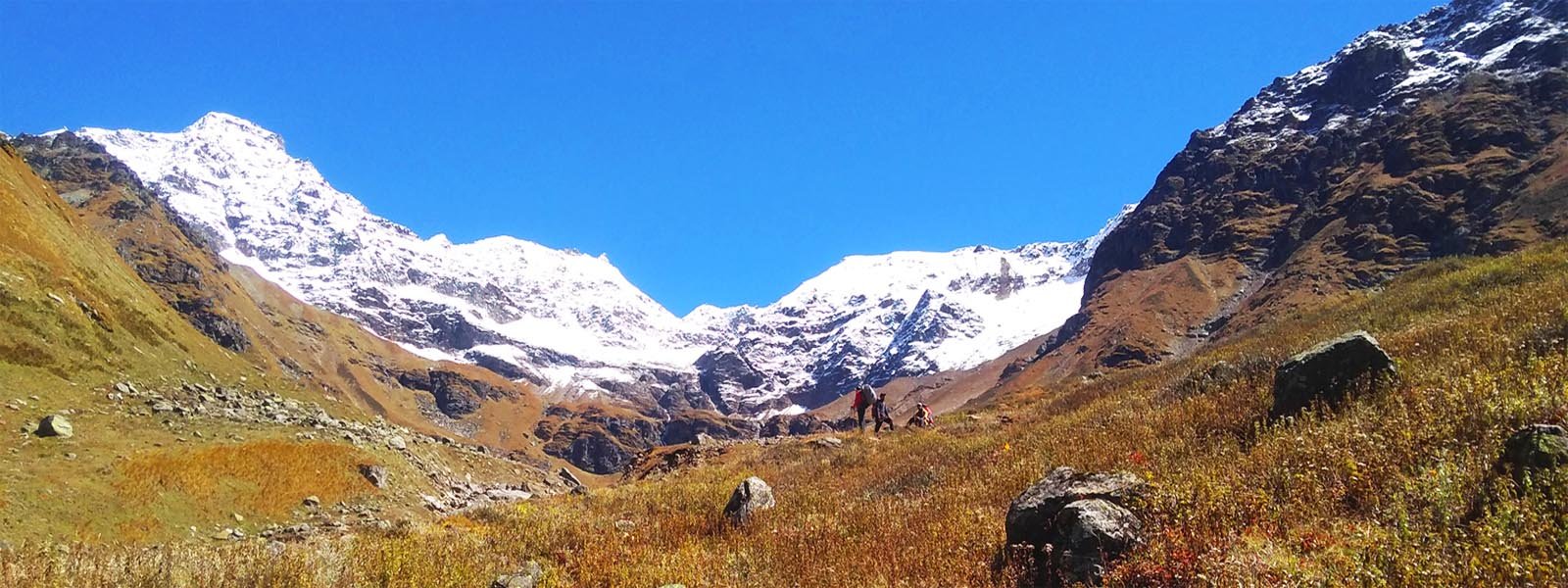
Buran Ghati Trek
Himachal pradesh,himachal pradesh (362+ reviews).
Starting From
15499 Download PDF Book Now
Price On Demand
Buran ghati: majesty of mountain passes.
Buran Ghati Trek , nestled in the picturesque state of Himachal Pradesh, is a true gem for nature enthusiasts and adventure seekers alike. This exhilarating trek offers a mesmerizing journey through some of the most stunning landscapes the Himalayas have to offer.
You will be mesmerized as soon as you step foot on Buran Ghati's uncharted routes by the stunning views of snow-capped peaks and green valleys. The walk passes past quiet alpine lakes that mirror the beauty of the mountains around, bringing peace to the environment.
The post-monsoon season adorns the valley with a kaleidoscope of colors as the meadows come alive with an abundance of wildflowers. It's a sight to behold and a photographer's paradise.
The Buran Ghati Trek is particularly appealing since it is suitable for both seasoned and new hikers. With experienced guides leading the way, you can explore the region's rich flora and fauna while ensuring your safety throughout the journey.
The highlight of the trek is crossing the Buran Ghati pass at an altitude of approximately 4,550 meters, an adrenaline-pumping experience that rewards you with breathtaking panoramic views.
The Buran Ghati Trek provides a really remarkable experience packed with breathtaking natural beauty, exciting challenges, and priceless memories for those looking for an amazing adventure amidst Himalayan nature.
Set off on a memorable journey amidst the stunning scenery of the Buran Ghati Trek! Located in the mesmerizing state of Himachal Pradesh, this trek offers an exhilarating experience for all nature enthusiasts and thrill-seekers. The Buran Ghati Trek is a haven for hikers looking for a balance of scenic beauty and heart-pounding challenges as it takes you through stunning valleys, lush meadows, and tranquil alpine lakes.
Our luxury Buran Ghati Trek Package is expertly planned to guarantee that your experience will be seamless and unforgettable. In order to see the breathtaking vistas of snow-capped mountains and lush forests, our skilled guides will lead you along undiscovered trails. During the post-monsoon season, enjoy the mesmerizing display of wildflowers as the valley blooms with vibrant colors.
The Buran Ghati Trek price is budget-friendly, offering you great value for your money while ensuring a safe and enjoyable trekking experience. Whether you're a seasoned trekker or a first-timer, our expert team will cater to your needs, making your journey comfortable and memorable.
So, pack your bags and get ready to conquer the Buran Ghati Trek – an adventure that will leave you with lasting memories of majestic mountains and the thrill of conquering new heights. Book your Buran Ghati Trek package now and be prepared to be mesmerized by the unparalleled beauty of the Himalayas!
Trail Type : A crossover trail through passes
Rail Head : Kalka is the nearest railhead to Shimla
Airport : Jubbarhatti airport, which is 22Km away from Shimla
Base Camp : Janglik
Best Season : May , June & September , October
Service From : Janglik to Barua
Meals : Meals while on trek ( Veg and Egg)
Stay : Homestay/ Camping
Region : Himachal Pradesh
Duration : 7 days
Grade : Moderate
Maximum Altitude : 15000 Ft
Approx Trekking KM : 37 Km
1. Meals while on trek (Veg. + Egg).
2. All necessary entry fees and permits.
3. Accommodation: - Guest house, Home stay, camping during Trek.
4. Mountaineering qualified & professional trek Leader, guide, cook and Support staff.
5. First aid medical kits, stretcher and oxygen cylinder.
6.Trek equipment: Sleeping bag, mattress, tent, kitchen & dinning tent, toilet tent, utensils and crampon (if required)
7. Staff Insurance.
8. Porters/mules to carry central equipment.
1. Any kind of personal expenses.
2. Food during the transit.
3. Mules or porter to carry personal luggage.
4. Insurance.
5. Transport
6. Any kind of emergency evacuation charges
8. Anything not specifically mentioned under the head.
What to carry
- Trekking shoes: A good pair of trekking shoes is essential for a comfortable and safe trek. Look for shoes that are sturdy, provide good ankle support, and have a good grip on different types of terrain.
- Backpack with rain cover (50-60 ltr): A backpack is necessary to carry all your gear. Make sure it's the right size for your trek, and comes with a rain cover to keep your belongings dry in case of rain.
- Thermals (upper and lower): Thermals are lightweight and comfortable base layers that help regulate your body temperature in cold weather. Bring both upper and lower thermals to keep warm.
- 3 T-shirts (advisable quick dry): Choose quick-drying T-shirts made from breathable and moisture-wicking materials. This will help keep you cool and dry during your trek.
- 2 trek pants: Choose lightweight and comfortable trek pants that are easy to move in and can dry quickly if wet.
- Jacket (-10 degree): A warm jacket is essential for cold weather. Choose a jacket that is waterproof and windproof, and provides good insulation.
- Fleece or hood (2): Fleece jackets or hoodies are great mid-layer options to keep warm. Bring at least two, as they can also be used as an extra layer at night.
- Sunglasses (UV protected): Protect your eyes from the sun's harmful UV rays with sunglasses that are designed for outdoor activities.
- Sun cap: A sun cap or hat with a brim will protect your face and neck from the sun.
- Hand gloves: Bring a pair of lightweight gloves to keep your hands warm and protected from wind and sunburn.
- Woollen cap: A woollen cap will keep your head and ears warm at night or in cold weather.
- Socks (3 pairs min): Bring at least three pairs of good quality socks that are moisture-wicking and provide good cushioning and support for your feet.
- Headlamp: A headlamp will come in handy if you're hiking in low-light conditions or need to find your way in the dark.
- Trekking pole (if needed): Trekking poles can help reduce strain on your legs and provide additional support on steep terrain.
- Rain cover\poncho: A rain cover or poncho will keep you and your gear dry during unexpected rain showers.
- Day pack (if you plan to offload your bag): If you plan to offload your backpack during the trek, bring a smaller day pack to carry essentials like water, snacks, and a first aid kit.
- A toiletry kit: Bring a small kit with personal hygiene items, such as a toothbrush and toothpaste, wet wipes, hand sanitizer, and toilet paper.
- Lunchbox, cup, spoon: If you plan to bring your own food, bring a lunchbox, cup, and spoon to carry and eat your meals.
- 2 one-litter bottles: Staying hydrated is crucial, so bring at least two one-liter bottles to carry water.
- 2-3 plastic covers to keep your wet or used clothes: Plastic bags are useful for keeping wet or dirty clothes separate from the rest of your belongings. They can also be used to pack out any trash or waste you generate during the trek.
How to reach
The starting point of Buran Ghati Trek is Janglik, which can be reached by road from Shimla or Chandigarh. Here are some options for reaching Janglik:
- By air : The nearest airport to Janglik is the Jubbarhatti Airport in Shimla, which is about 190 km away. From the airport, you can hire a taxi or take a bus to Janglik.
- By train : The nearest railway station to Janglik is the Shimla Railway Station, which is about 167 km away. From here, you can take a taxi or a bus to Janglik.
- By road : Janglik is well connected by road to Shimla, which is about 175 km away. You can take a bus or hire a taxi from Shimla to reach Janglik. Alternatively, you can also reach Janglik from Chandigarh, which is about 295 km away.
Cancellation policy
Life is unpredictable and we understand sometimes you have to cancel or change your trip dates and it is our endeavour to make it as easy possible for you. However, please understand we plan everything including guide fees, permits, accommodation and ration in advance. Therefore any cancellation means inconvenience and certain losses to the people involved in various stages of programme. Keeping that in mind, our cancellation charges are as below-
Cancellation prior to 30 days from start of the event: Get monetary refund with 15% of cancellation charges on trek fee.
Cancellation between 30 days and 15 days to the start of event: 50% on trek fee is non refundable and the remaining 50 % will be given as cash voucher which is valid for 1 year.
Cancellation less than 15 days to the start of event: No refund.
Please note cancellation will be only accepted by email.
Note: The Himalayan Daredevils reserves the right to cancel a programme before departure in the event of logistical problems arriving due to natural calamities, strikes, wars on any other circumstances that makes the event inadvisable. In this case, we will refund 50% of the event fees.
Itinerary changes & trip delays:
We plan itineraries based on the information at the time of planning and in rare circumstances, there are subject to change. In the event that the itinerary is changes or delayed due to unforeseen circumstances such as bad weather conditions, transportation delays, government intervention, landslides etc. We will always aim to give you the best experience possible. However The Himalayan Daredevils are not be held responsible for the cost of delay or changes.
Calendar View
Available Dates :
June 2024 September 2024 October 2024
Note:- For booking click on the dates available in green color
Modal title
Why Choose Us
Our Best Performance
50,000+ travelers, pan india tour, 250+ bike trips, 4,000+ successful trips, medical and mechanical backup, organized travel itineraries.
Related Blogs
Read and get more about our treks
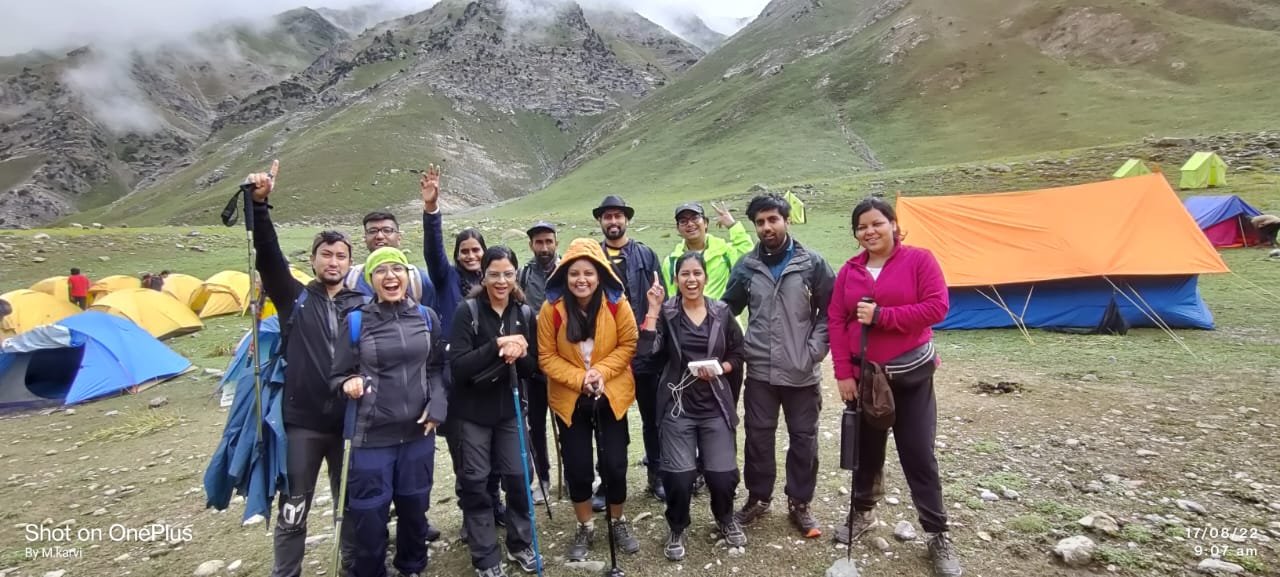
The Beauty of Sar Pass Trek - A Visual Journey Through the Himalayas

Difficulties Of Kashmir Great Lakes Trek | Himalayan Daredevils
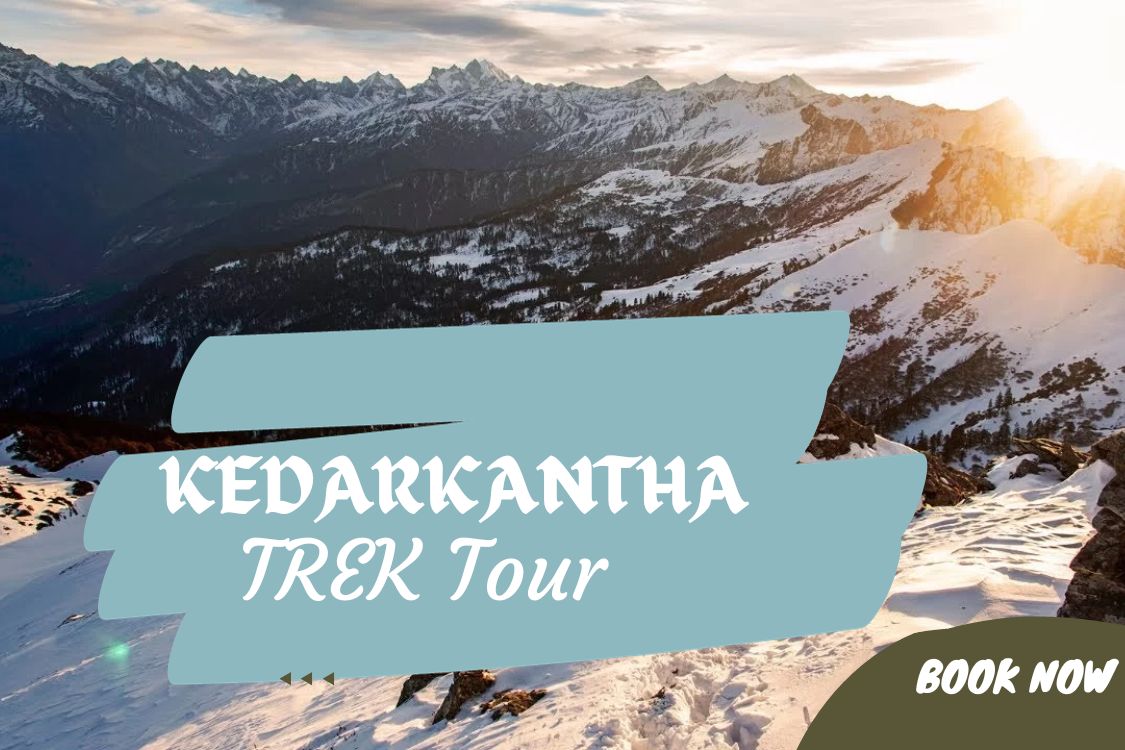
How To Plan A Kedarkantha Trek Tour Within Your Budget
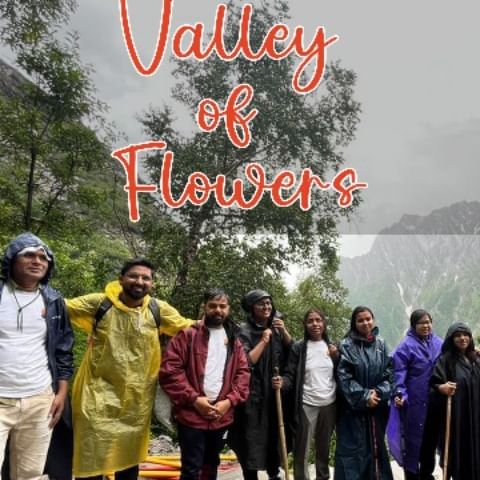
Explore the Beautiful Valley Of Flower Trek
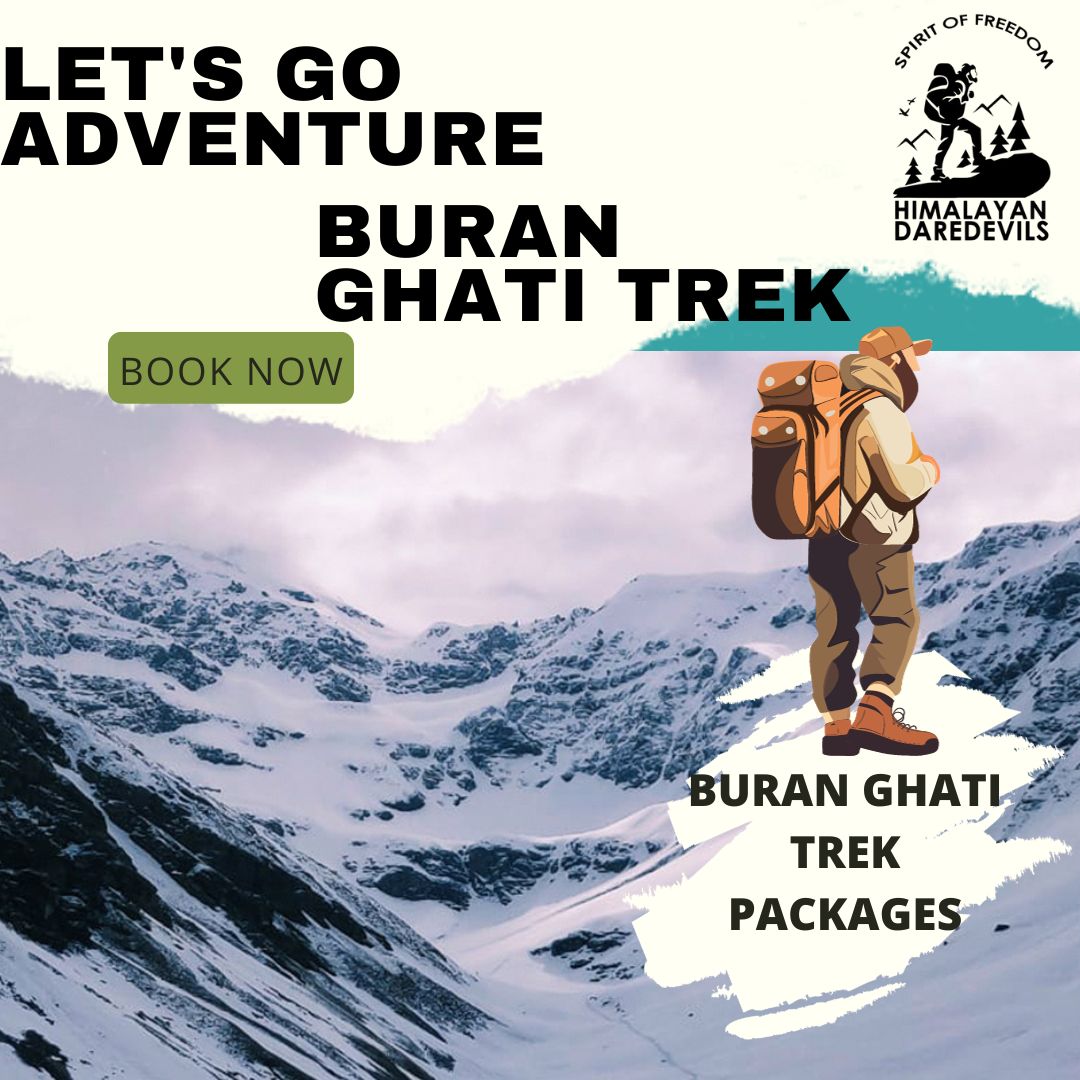
Buran Ghati Trek - A Hidden Gem - Complete Guide

Explore The Valley Of Flowers National Park & Hemkund Sahib Trek
.jpg)
How To Choose Your First Himalayan Trek
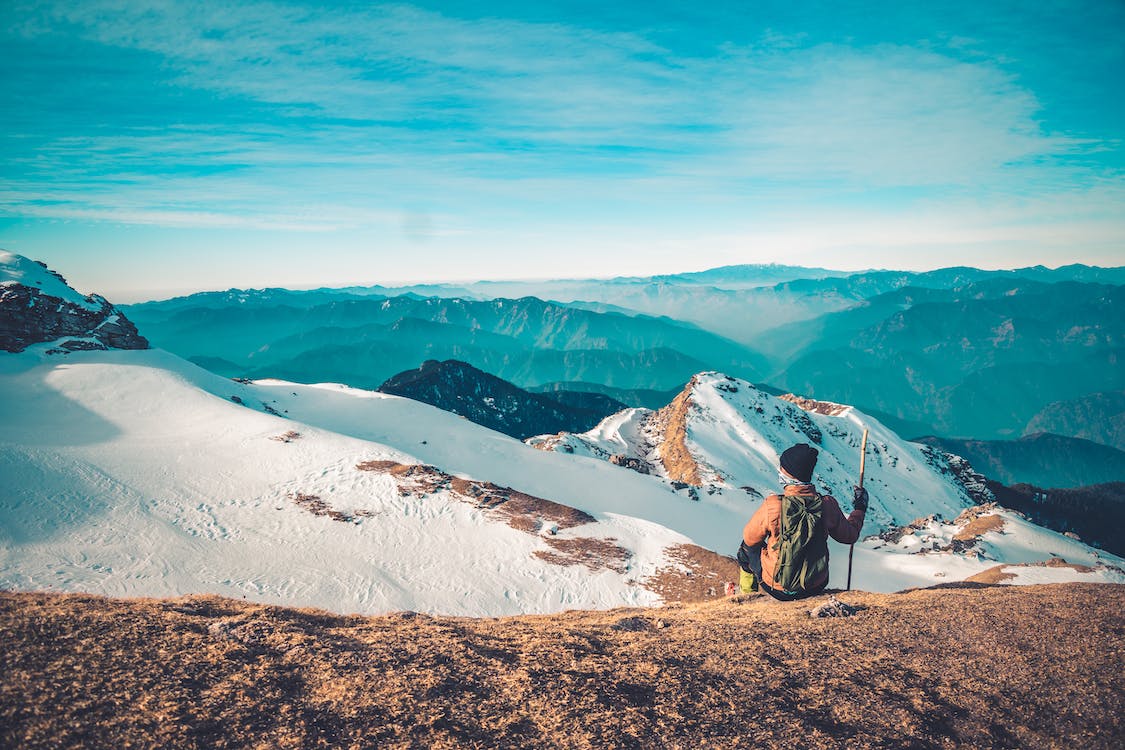
Kedarkantha Trek & Tour Package - A Complete Guide
.jpg)
10 of the Best Himalayan Treks You Must Do
.jpg)
Experience Beauty of Hampta Pass Trekking: A Complete Trek Guide
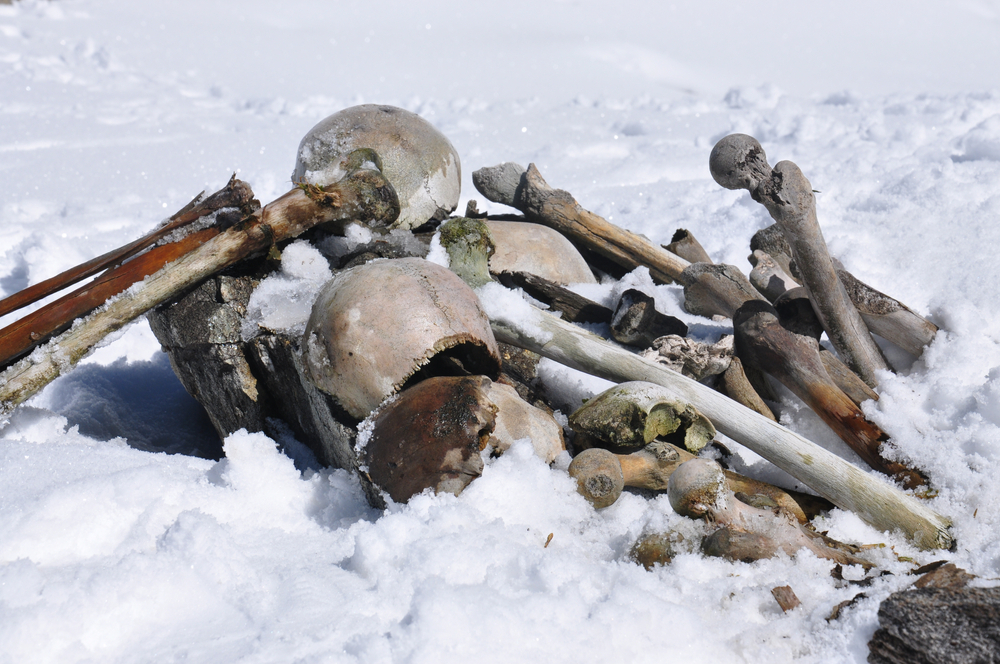
Exploring The Mysterious Skeleton Lake In Uttarakhand

Valley Of Flowers Trek Route : Complete Guide All You Need To Know About The Trek
.jpg)
Bali Pass Trek| A Complete Guide to Bali Pass Trekking Route & Cost

Comprehensive Guide About Beautiful Hampta Pass Trekking
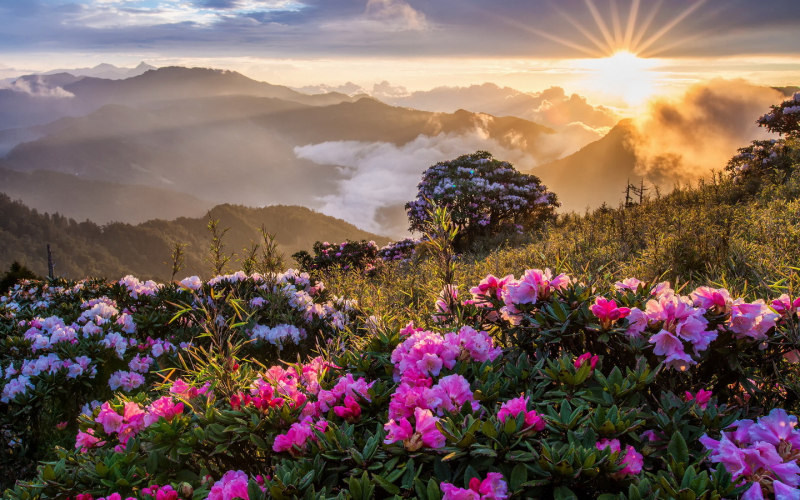
Best Time to Visit Valley of Flowers
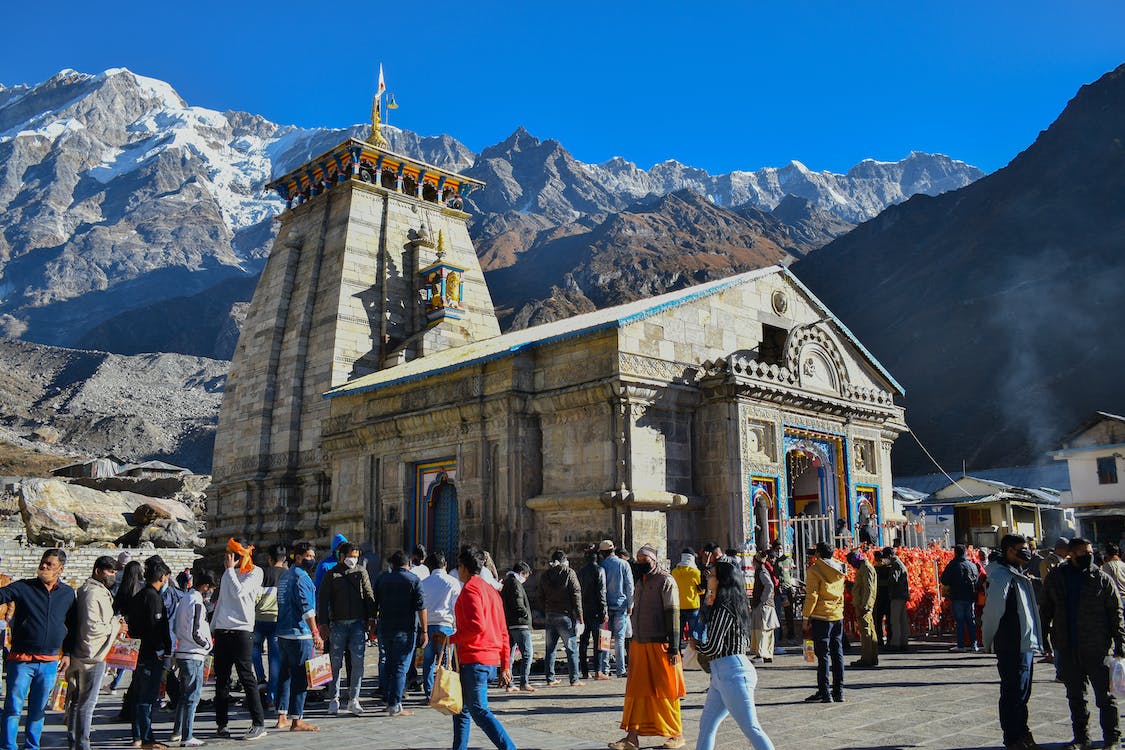
A Spiritual and Adventurous Journey in the Himalayas of Uttarakhand

Trekking In Uttarakhand: Exploring The Majestic Himalayas
Customer care.
+91 7895207206,
+91 6398989097
Need Live support ?
Company Menu
- Privacy Policy
- Terms & Conditions
Best Destination
- Kedarkantha Trek
- Har Ki Dun Trek
- Bali Pass Trek
Affiliated and Recognised by

© 2024 Himalayan daredevils All rights reserved.

Buran Ghati Trek
Trek with the most thrilling rappelling experience
Available Batches
September 2024, october 2024.
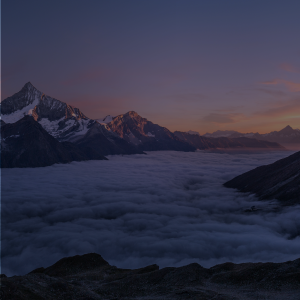
Brief Description
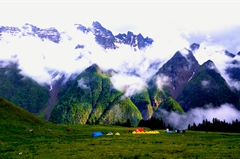
Brief Itinerary
Detailed itinerary.
Shimla to Janglik (2804 M)
Distance: 150 kms
Duration: 8-9 hours
Assemble in Shimla early morning (by 8 AM) and board your vehicles for the drive to Janglik. We drive along Pabbar River through the mixed forest. Villages with beautiful Himachal homes & step fields of wheat adorn the sides of the road. From Chirgaon onwards the road condition is bad. The road crosses the Pabbar river at Tonglu & then climbs to Janglik. The entire drive takes about 8-9 hours.
Janglik to Dayara (3366 M) (Click to View GPS data)
Distance: 7.7 kms
Duration: 5-6 hours
We cross through the village homes. Within half an hour we are past the village. The trail is steep initially. After you have climbed considerably, halt to get a good view of the valley. Spot Janglik, Tonglu & other nearby villages from here. The trail enters the forest and turns gradual. Walking under the shade of trees after a steep climb is a welcome change. The views along the trail are captivating. The trail enters & comes out of the forest a couple of times till we finally arrive at our destination for the day. Overnight camping.
Dayara to Litham (3533 M) (Click to View GPS data)
Distance: 5.6 kms
Duration: 3-4 hours
Get up early to catch the view of golden rays of sun falling on the grass in the meadow. Enjoy the view with a hot cup of tea. Today's trail majorly constitutes of forests, meadows & gushing streams of water. We walk through the meadows towards the Gunas Pass. After we cross a steam, the view of the Dhauladhar range is captivating. A few minutes after we enter the forest of Bhoj trees (Silver Birch). After a while, we come across another stream. Cross it & get your first view of Litham. We would walk in a gorgeous meadow again. Across the meadow, we cross the Chandranahan Stream and arrive at our campsite for the day. Litham is a beautiful campsite. Notice the Chandranahan waterfalls beyond which lies the famous Chandranahan Lake. Buran Ghati lies behind the mountain in front of us. Get ready for a great adventure starting tomorrow.
Litham to Chandranahan Lakes (4029 M) & back to Litham, (Click to View GPS data)
Distance: 8.3 kms
The Chandranahan is a glacial lake that is fed by snow melts of mountains that surround it. It is a small lake, However getting to it is an exciting experience and extremely fulfilling. We cross the stream that we saw just before the Litham campsite. We continue upstream on the trail to the top of the ridge. Then we walk towards the snout of the waterfall. After spending some time at the lake we turn back to the campsite. This short excursion will help you acclimatize for the trek ahead.
Litham to Dunda (4025 M), (Click to View GPS data)
Distance: 4.3 kms
Continue north-east along the Pabbar River which originates from the slopes of the Buran Ghati. Pass through Khubrini Thach and leaving the tree line behind climb steeply through boulders to enter Dunda Thach, located at the foot of the pass.
Dunda to Manerang (3338 M) via Buran Pass (4575 M), (Click to View GPS data)
Distance: 8 kms
Duration: 9-10 hours
In post-monsoon season the climb to the pass is easier due to lesser or no snow. From Dunda camp walk on the ridge through the boulders. From the base of the Buran pass, the climb to the top takes about one hour. Take halt at the pass & absorb the mesmerizing view. The path on the other side of the Buran pass is a steep drop. Use of rope is highly recommended here. The steep drop gives way to a snow field from where it is easy to slide down. Decent is fast & we lose altitude quickly. We will set camp next to the river and cross it a little further down the valley the next morning.
Manerang to Barua (2510 M), (Click to View GPS data) Onward to Shimla
Distance: 5.7 kms + 250 kms drive
Duration: 2-3 hours
Today, we descend down the valley to a stream that we hop through. The trail is well marked from river campsite. Take the lower trail descending into the valley. The trail passes through grasslands & forest of pine trees. Arrive at kahrcham by the afternoon and board your vehicles for the return journey. The vehicles will drop you in Shimla. The Buran Ghati trek ends here.
This will only get used if unexpected and unforeseeable conditions present themselves at the last minute preventing us from reaching our destination as planned. You are advised to keep a buffer day in your travel plan. If the buffer day is used, you have to pay Rs. 2,500 per day (INR). The amount will be collected by the Trek Leader.
What's Included
- Food as per menu on the trek
- Forest Permits/Camping Charges, if any (upto the amount charged for Indian nationals)
- Tents, Sleeping bags, Sleeping mats
- Safety Equipment includes static rescue rope, seat harness, carabiners, pulleys
- Trek guide, cook, helpers, and porters for carrying common supplies
- Mountaineering course certified Trek Leader with Wilderness Emergency Responder & Rescue. course from NIM Uttarkashi
What's Not Included
- Portage of personal bags during the trek
- Cost of any kind of Travel Insurance.
- Any Expense of personal nature.
- Any Expense not specified in the inclusions list.
- Meals during road journeys
Are you Eligible for this Adventure?
Max Altitude


BRS Level Required
Buran Ghati Trek is a level 4 adventure on the Bikat Rating Scale.
This makes it mandatory for you to have high-altitude experience of preferably multiple treks marked at level 5 on the BRS. The altitude, the terrain and the nature of the climb demand a certain level of skill and a need for you to be aware of how your body reacts to the various features of high altitude environment.
If you do not know what level of BRS trek would suit you best, worry not! Fill out this Form:

we will send you a progression chart to help you comfortably get out of your comfort zone in order to level up and ultimately reach your highest potential in the big, bad world of outdoor adventure.
The trail comprises of the dense forest of Oak & Pine trees. The sacred Chandranahan Lake is another attraction of Buran Ghati Trek. The glacial lake remains frozen for the most part of the year. The flowers & herbs are in plenty along the trail. The beauty of numerous glistening streams of water will keep you amazed. The fruit trees are in abundance near Barua village. The fruits grown in this part are apples, pears, apricot & peaches. Buran Pass altitude is 15059 ft. The panoramic view from Buran Pass is one of the best you can get. The trail after the pass is a straight wall where you have to slide for the most part of it. This bit can be technical at times & rope may be required for ascending down the considerably straight face of ice. The trek is recommended for people who have done at least one multi-day Himalayan trek.
Prequisite Skills
The trek demands a few mountain skills:

fitness benchmark
If you can do the following, physically you are ready to take on this trek:
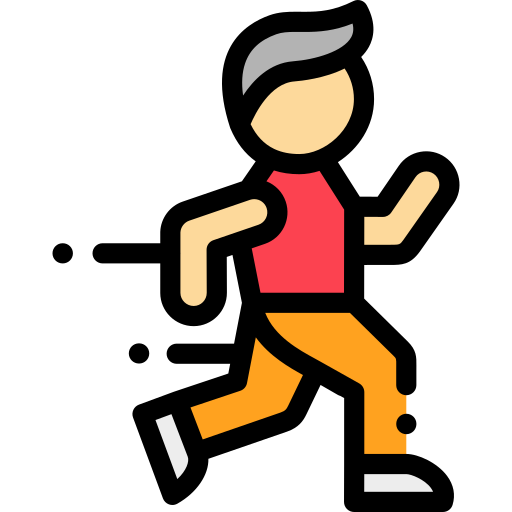
Packing List
This is a list of essential items for individuals doing the trek with Bikat Adventures. This list contains only those items which the participants are required to bring with them. The list excludes those items which are provided by Bikat Adventures on the trek. We have divided the items into five categories. All the items in the list are essential except for those marked as optional.
Trekking Gear
- Ruck sack bag with rain cover. Qty -1
- Day Pack Bag - Recommended for treks with summit day
- Head Torch with spare Batteries. Qty -1
- U V protection sunglasses. Qty -1 Here is how you can choose the best sunglasses for trekking.
- Water Bottles: 2 bottles of 1 liter each
- Non-skid, deep treaded, high-ankle trekking shoes Qty -1
- Pair of light weight Slipper/Sandals Qty -1
- Quick Dry Warm lower or Track Pants. Qty - 2
- Full sleeves T-shirts/ Sweatshirts. 1 for every 2 days of trekking
- Pair of thick woolen socks. 1 pair for every two days of trekking
- Thermal Body warmer Upper & Lower. Qty-1
- Undergarments. Qty - 1 for every day of trekking
- Warm jacket closed at wrist & neck .Qty-1
- Full sleeves sweater. Qty -1
- Rain wear ( Jacket & Pants ) . Qty-1
- Pair of waterproof, warm gloves. Qty-1
- Woolen cap. Qty-1
- Sun shielding Hat. Qty -1
- Personal toiletries kit (Small Towel, Toilet paper, paper soap, Bar soap, toothbrush, toothpaste, cold cream, etc.)
- Sun screen lotion small pack. Qty -1 Here is your Sun Protection 101 to stay safe in the bright sunny outdoors.
- Lip Balm small pack. Qty-1
- Small size, Light weight & Leak proof lunch box. Qty-1
- Plate. Qty- 1
- Spoon.Qty-1
- Tea/Coffee (plastic) Mug.Qty-1
Miscellaneous
- Camera (Optional)
- Carry your medicines in plenty in case you have any specific ailment. Consult your doctor before joining the trek.
- Dry fruits, Nuts, Chocolate bars (Optional)
Frequently Asked Questions
Eligibility, is this adventure good for me, what’s a good fitness benchmark for this adventure, what skills do i need to complete this adventure, what is the minimum and maximum age limit, about the activity, where is it located, what are some of its highlights, what are some of its challenges, what is the best season for this, what is the accommodation type, what is the temperature like here, is it technically challenging, connectivity, how do i reach the starting point, is there cellular network available throughout, where is the nearest atm, if i choose to travel to the base with you, what is the pick-up point, what time is the drop-off on the last day, what are the nearby attractions that i can explore, equipment & gear, what equipment is provided to us, what can i rent from you, where will i receive the rented items, where do i have to return the rented items, what gear do i need to bring, are there local shops to rent/buy equipment, facilities & additional services, can i offload my bag, can i leave any extra luggage i carry at the base of this adventure, what are the meals like, what are the washroom/ toilet facilities like, what should i do if i get my period on this adventure, what are the medical facilities available to me on this adventure, are there any electricity charging points on this adventure, mandatory documents, what documents do i need to carry, do i need insurance for this, do i need a permit for this, certification, do you provide a certificate of completion, when and how will i get the certificate of completion, international travel, will i need a visa, when should i apply for the visa, what kinds of insurance do i need to travel here, what is the specialty of this when compared to other mountain ranges, till which month can i make a booking for this, what is the qualification of the outdoor leader provided to us, how do you choose your outdoor leaders, is it safe for women, what is the ratio of outdoor leader to participants, what do you do in case of an emergency, what are the rescue options on this adventure, how do you choose your equipment, can i attempt this adventure if i have a specific medical condition, sustainability, what kind of camping do you practice on your outdoor adventures, why are you against fixed camping in the outdoors, how do you manage overcrowding on certain trails, what are some things to remember when using a dry toilet, why should i avoid wet wipes in the outdoors, where should i dispose of my sanitary waste if i am on my period, why should i carry my own utensils on an outdoor adventure, booking process, what happens after i make the payment, do you create a whatsapp group of participants before the start date of the activity, do i need to submit a medical certificate, do i need to submit an undertaking form.
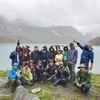
Small Group Size
Our batch sizes are capped at 15 for smaller treks with the trek leader and trekker ratio of 1:8. This ratio, in our years of experience, has proven to deliver the best trekking experience for individuals as well as groups. Capping the size of the group ensures individual attention to each trekker so that no signs of distress or need during the trek go unnoticed. It also helps to form a more cohesive cohort with better group energy which helps define the rhythm and pace of days on the trek. As you go higher up on the BRS scale, since the stakes are higher, expeditions have an even smaller group size with the ratio of expedition leader to climber set at 1:2.
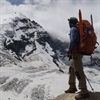
Qualified Trek Leaders
We follow a rigorous regime of hiring and training our experts in the field. Each trek leader is a certified mountaineer with years of experience in the field. In addition to their qualification, they also go through practical and situational training to tackle any and all kinds of sudden conditions that may present themselves on the ground. Being unpredictable is the core nature of the mountains but being ready for any circumstance as best as possible is a controllable asset that we try to nurture. Our field experts are also trained in basic medicine and first-aid response. Watch: Forerunners - The Making of A Trek Leader At Bikat Adventures
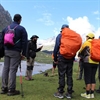
Guided Progression
Since Bikat Adventures is a learning-based organization, we help you climb up the ladder of difficulty within the sphere of outdoor adventure systematically. Our on-ground training modules are designed to handhold you through the upskilling process so that you are ready to take on bigger challenges.
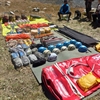
Equipment Quality and Check
All the gear used on our treks and expeditions is tried and tested, maintained for good quality, and is overall top-notch in quality and condition. We are continually looking to obtain the best of everything there is in the market so as to ensure optimum safety.
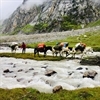
Support Systems
Along with the staff you see on-ground, we have a team of superheroes working in the background to give you the best experience possible. Our background team also comprises local staff from each area who know the region best. Having local support helps with studying the area, pre-planning, execution, and in receiving timely support in case of emergencies in these remote locations.
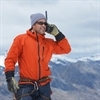
Communication
Our on-field staff is in constant contact with our teams based in primary locations so as to eliminate any avoidable delay in reaching additional help and support when required. We try to use the best tools for communication available, including satellite phones, in regions where they are not restricted.
What our customers Say

Cancellation Policy
Cash refund
Cancellations up to 30 days prior to departure date
5% deduction
Cancellations between 30 days to 15 days prior to departure date
50% deduction
Cancellations within 15 days prior to departure date
Voucher refund
Cancellations up to 5 days prior to departure date
No Deduction
Cancellations within 5 days prior to departure date
- Cash refund is applicable only in case of bookings made without using any promotional offer code or vouchers
- This is only a brief of cancellation terms. For finer details please refer Detailed Cancellation Policy.
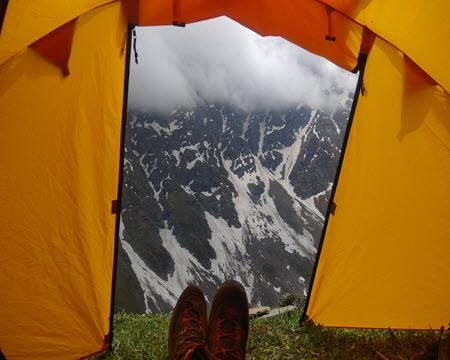
Subscribe for latest updates & offers
Similar adventures.
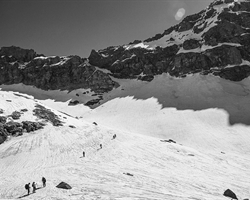
Rupin Pass Trek
The grandest cross-over trek of india.

Hampta Pass Trek
An enchanting cross-over from manali to spiti.
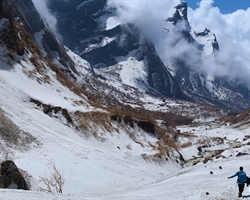
Annapurna Base Camp Trek
The perfect mesh of adventure, culture and natural splendor, enter your email, events by categories.

Mountaineering

Scuba Diving
Events by months.
- January July
- February August
- March September
- April October
- May November
- June December
Events By Nights
- 5 & More Night
- Environmental Policy
- Privacy Policy
- Term & Conditions
- Work With Us
- Address: 303, 3rd Floor, Tower B4, Spaze Itech Park, Sector 49. Gurgaon
- Pre Sale - 8448680062 , Post Sale - 8588878499, 9667639126
Bikat Adventures
- Cancellation & Refunds
- Content Sharing
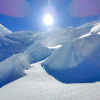
© 2024 Bikat Adventures - All Rights Reserved
Powered by: novel knett software solutions, submit enquiry.
Trekkingandhiking.com
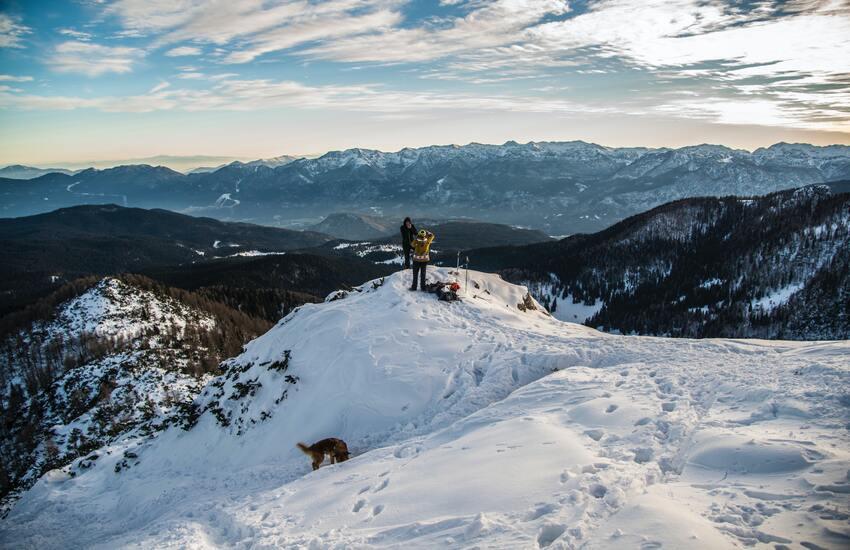
Buran Ghati Trek – Everything You Need to Know
Are you an adventure enthusiast seeking an unforgettable trekking experience? Look no further than the Buran Ghati Trek! Nestled amidst the majestic Himalayas, this trek offers breathtaking landscapes, thrilling challenges, and a glimpse into the untamed beauty of nature. In this comprehensive guide, we will take you through every aspect of the Buran Ghati Trek, providing you with the information you need to embark on this remarkable journey.
Table of Contents

Introduction to Buran Ghati Trek
The Buran Ghati Trek is a popular trekking route located in the picturesque state of Himachal Pradesh, India. It takes you through remote villages, dense forests, gushing rivers, and high-altitude meadows. The highlight of this trek is crossing the Buran Ghati Pass at an elevation of 15,000 feet, which offers mesmerizing panoramic views of the surrounding snow-clad peaks.
Preparing for Buran Ghati Trek
Before embarking on the Buran Ghati Trek, it is crucial to make adequate preparations. Here are some essential considerations:
Physical Fitness and Acclimatization : The trek involves traversing varied terrains and ascending to high altitudes. Prior physical fitness and acclimatization are essential to tackle the challenges posed by this trek. Engaging in regular cardio exercises and endurance training will help you build stamina and prepare your body for the demanding journey.
Essential Gear and Equipment : Investing in high-quality trekking gear and equipment is essential for a safe and comfortable trek. Some of the must-have items include trekking shoes, backpack, sleeping bag, trekking poles, headlamp, and warm clothing. It is advisable to carry lightweight and durable gear to minimize the burden on your shoulders.
Packing Tips and Recommendations : When packing for the Buran Ghati Trek, pack strategically and efficiently. Opt for layering your clothing to adapt to changing weather conditions. Carry sufficient food supplies, water bottles, and a first aid kit. It is important to pack responsibly, minimizing waste and respecting the environment.
The Itinerary of Buran Ghati Trek
The Buran Ghati Trek typically spans over seven days, providing ample time to soak in the natural beauty and overcome the challenges of the trail. Here is a day-wise breakdown of the itinerary:
Day 1: Shimla to Janglik
The trek commences from Shimla, with a scenic drive to Janglik, a small village located at an altitude of 8,900 feet. Set up camp and acclimatize to the surroundings.
Day 2: Janglik to Dayara Thach
Embark on a moderate trek to Dayara Thach, a beautiful meadow adorned with vibrant flowers. The trail offers mesmerizing views of the Dhauladhar and Kinnaur mountain ranges.
Day 3: Dayara Thach to Litham
Continue your ascent to Litham, situated at an elevation of 11,500 feet. En route, witness the enchanting Rupin River and lush green forests.
Day 4: Litham to Dhunda
Today’s trek takes you to Dhunda, located at an altitude of 13,500 feet. Traverse through rocky terrains and enjoy panoramic views of the surrounding peaks.
Day 5: Dhunda to Munirang
Embark on a challenging hike to Munirang, situated at an elevation of 14,500 feet. The trail involves crossing a glacier, adding an element of excitement to the trek.
Day 6: Munirang to Buran Ghati and Ronti Gad
The most exhilarating part of the trek awaits as you cross the Buran Ghati Pass at 15,000 feet. Witness the awe-inspiring beauty of the Himalayas before descending to Ronti Gad.
Day 7: Ronti Gad to Barua Village and Drive to Shimla
Bid farewell to the mountains as you descend to Barua Village. From there, drive back to Shimla, cherishing the memories and experiences of the Buran Ghati Trek.
Highlights of the Trek
The Buran Ghati Trek offers an array of incredible experiences and sights. Here are some of the highlights that make this trek truly special:
Jaw-dropping Scenic Beauty : At every step, you will be captivated by the stunning vistas surrounding the trek. From snow-capped peaks to lush green meadows, the beauty of the Himalayas will leave you spellbound.
Thrilling River Crossings : The trek involves crossing several rivers and streams, adding an element of thrill and adventure. The crystal-clear waters and the sound of rushing water make for an exhilarating experience.
Challenging Mountain Passes : The Buran Ghati Pass is the highlight of the trek, testing your physical endurance and mental strength. Conquering this challenging mountain pass will fill you with a sense of accomplishment.
Lush Green Meadows : Throughout the trek, you will come across vast meadows carpeted with blooming flowers. These picturesque landscapes offer a perfect setting for rejuvenation and relaxation.
Picturesque Campsites : Camping amidst the serene beauty of the mountains is an experience like no other. The trek offers various picturesque campsites where you can unwind and immerse yourself in nature.
Best Time to Visit Buran Ghati Trek
The best time to undertake the Buran Ghati Trek is during the summer months of May to June and September to October. During these periods, the weather is pleasant, and the trails are clear, allowing for a safe and enjoyable trekking experience.
Difficulty Level
The Buran Ghati Trek is considered a moderately difficult trek, suitable for experienced trekkers and adventure enthusiasts. The steep ascents, tricky descents, and high-altitude crossings require a certain level of physical fitness and mental preparedness.
Safety Tips and Guidelines
To ensure a safe and enjoyable trek, keep the following safety tips in mind:
- Acclimatize properly to high altitudes to minimize the risk of altitude sickness. Take rest days and ascend gradually.
- Stay hydrated by drinking plenty of water throughout the trek.
- Follow the instructions of your trekking guide or leader at all times.
- Dress in layers to regulate your body temperature according to the changing weather conditions.
- Use sunscreen, wear a hat, and protect yourself from the sun’s harmful rays.
- Stay on designated trails and avoid straying off the path.
- Carry a basic first aid kit and any necessary medications.
- Respect the local culture, customs, and wildlife.
- Be mindful of your waste and practice responsible eco-trekking by disposing of litter properly.
By adhering to these safety guidelines, you can ensure a smooth and secure trekking experience in the Buran Ghati region.
Environmental Considerations
Preserving the fragile ecosystem of the Himalayas is of utmost importance. Here are some environmental considerations to keep in mind during the Buran Ghati Trek:
- Minimize waste and carry all non-biodegradable items back with you.
- Do not disturb or harm wildlife or plant species.
- Avoid using single-use plastics and carry a refillable water bottle.
- Use eco-friendly toiletries and personal care products.
- Support local communities and engage in responsible tourism practices.
By being responsible travelers, we can contribute to the conservation of the pristine beauty of the Himalayas and ensure its preservation for future generations.
Leave a Reply Cancel reply
Your email address will not be published. Required fields are marked *
Save my name, email, and website in this browser for the next time I comment.
WhatsApp us
.png?w=auto&h=400)
Buran Ghati Trek
Buran ghati trek overview.
The trek of Buran Ghati, a well-known hike in the world of trekking, is home to many breathtaking sights. The variety of vistas this walk offers will astound you as you stroll through this trek. You will find the deeper, dense forests of Oak and Pine to be rather artistic which are some of the major attractions of this trek.
Among other attractions are the huge green meadows, jagged peaks at great altitudes, little streams, brooks, and lovely villages that will be some good places to stop by during the journey. Undoubtedly one of the main attractions of this trek is the high-altitude Chandernahan lake which is revered by many locals. If you take this trail in June, there will be a lot of snow on the ground which is also quite pleasing for your eyes. The entire voyage will take on a completely new appearance as a result. On the final stretch of the pass, you would require support of the ropes as you will need to exert yourself because it is an uphill journey. The Dhauladhar range will astound you with its distant peaks rising above one another to reveal glimpses of magnificent perspectives. A broad view of the Kinner-Kailash peaks can also be seen from the past' crest, a place you will find during the trek. Those seeking a thrilling adventure might consider Buran Ghati as an excellent hike.
Book Buran Ghati Trek Package
Buran ghati trek, himachal pradesh, quick facts of buran ghati trek.

Maximum altitude: 15000 ft
Duration: 7 Days
Trekking distance: 39KMs
Trail type: Moderate
Airport: Chandigarh
Snow Season: June
Service from: Janglik
Base camp: Janglik
Best season: May to July & September to October
Region: North- west india
Who can participate: Physically fit individuals with moderate trekking experience.
Short Itinerary for Buran Ghati Trek
Day 1: Head to Janglik Base Camp (9200 ft)
Day 2: Janglik/ Diude to Dayara Thach (9200 ft to 11075 ft)
Day 3: Dayara to Litham (11075 ft to 11737 ft)
Day 4: Excursion to Chandranahan lake (11737 ft to 13900 ft and back)
Day 5: Litham to Nalabansh (11737 ft to 13365 ft)
Day 6: Nalabansh to Munirang (13365 ft to 11800 ft via Buran Ghati)
Day 7: Munirang to Brua Village(11800 ft to 6700 ft)
Buran Ghati Trek Detailed Itinerary

Heading to the Janglik Base Camp
Altitude - 9,200 ft
Begin from Shimla at 06:30 AM and have a 6 hrs amazing journey to the Buran Ghati trek .
There will be pick up vehicles available for you to leave from Shimla.
Transportation will also be available at an extra price if needed.
Diude is the closest road to the first base camp that is Janglik.
You will also get the amazing view of the beautiful Pabbar river on the way from Rohru to Diude.
Watch the square wheat fields and the attractive Himachali homes on the way along the Pabbar river. The road climbs alongside pretty villages and mixed forests until it gets to the pine forests.
You will have to go through the picturesque road at Tikri. After Chirgaon, the road turns left and becomes an absolute dirt track for the remaining path.

Diude/Janglik to Dayara Thach
Altitude - 11,075 ft
Make your way to a steady ascent through a woodland for approximately 30 minutes, then a gentle fall in the meadows for about an hour, and finally a moderate ascent.As you leave Janglik, you will see exquisitely designed wheat fields that are bordered by elegant wooden farmhouses.The final huts of the small settlement will be left in your wake after fifteen minutes. The elevations will thereafter begin to rise quickly.You will eventually reach a ledge where you can step on it to give your eyes magnificent views of Janglik, Tonglu, and other settlements in an hour.

Dayara to Litham
Altitude - 11,737 ft
The hike today begins with a brief, gentle elevation, followed by a creek crossing.
After an hour or so of ascent through a pine forest and meadows, there will be a gradual descent through a silver birch woodland and meadows.
If you bring 2 liters of water from Dayara, you won't need a refill today. On the walk, look for creeks.
As you hike 740 feet in 3 hours from Dayara to Litham, you'll pass through some deep forests, expansive green meadows, flowing streams, and brooks.
As it approaches Gunas Pass, the trail passes through meadows.
Within fifteen minutes of leaving the Dayara campsite, a trail that slowly ascends leads into another patch of pine woodland.

Excursion to Chandranahan lake and back
Altitude - 13900 ft
The day begins with an excursion to Chandernahan Lake which is a glacial tarn that receives year-round water from the surrounding mountains' snow-covered slopes.
Just before you reach the Litham campsite, cross a brook for some thrill.
Follow the shepherd's track upstream until you reach a ridgetop.
Stride in the direction of the waterfall's snout, where the stream originates.
The waterfall's snout is marked by attractive stone cairns and is reachable in roughly an hour and a half.
Once you reach the flat at the base of the waterfall, the path to the lake takes a challenging curve.
The valley bottom has some snow in late June, but it is not too tough to walk on.

Litham to Nalabansh
Altitude - 13,365 ft
Depending on where you set up camp for the approaching attack, the Buran Pass hike can be simple or challenging.
At 13,000 feet, Nalabansh is an ideal starting point for a two-hour ascent to the pass.
The Gunas pass is perched prettily atop the snow-covered sides of the grey mountains of the Dhauladhar range, which towers over the trail.
Grey and white dominate the scene in front, with green Litham grasslands to the left and rocks enclosing the Rupin Valley to the right.
You will have an unforgettable experience if you climb this challenging terrain that is coated with snow.

Nalabansh to Munirang via Buran Ghati
To get to the base of the pass, follow the ridge and hop over boulders.
It takes an hour to hike up from the base, primarily on snow.
At precisely 15,000 feet, Buran Ghati is a fantastic climb.
The top is a ledge that is somewhat small.
On the other side, there is a steep and abrupt descent.
Even with an ice ax, the descent can be dangerous without the rope.
Your first goal is to descend to the first snow field, which is 100 meters below the pass.
After that, there are other slides down smaller ledges in a series of descents.
The Buran Ghati trek's descent is swift, and you quickly lose all the altitude you've gained.

Munirang to Brua Village
Altitude - 6700 ft
The descent to the Barua settlement is notable for the diversity and variety of plants.
Follow the Barua Khud on the way.
Follow the busiest, widest trail possible.
The high altitude pines give way to a variety of different trees as the trail quickly descends through them.
The track descends to a sizable flowing stream where it meets the Barua Khud an hour and a half later.
The only way across is a mud-lined juniper and juniper-lined temporary bridge.
More varied foliage greets the route as it emerges from the stream.
The first apple orchards and indications of civilization are waiting for the hikers an hour later.
What to Pack for Buran Ghati Trek?

Things to Carry
A set of sturdy, waterproof hiking boots.
socks in three pairs.
Two sets of hiking pants that are waterproof.
1 set of shorts
Two sets of fleece-lined sweaters.
Thermal shirts and bottoms in two pairs.
one jacket with down.
Headgear (one buff, one trekking cap, and one beanie/skull cap).
a couple of heavy gloves
Personal care necessities (alcohol-based gel, hand sanitizer, soap, towels, toilet papers, baby wipes, etc.)
UV-protective eyewear.
Know Before You Go to Buran Ghati Trek

Keep your load light.
Smoking and drinking are prohibited.
The journey leader's choice is final and enforceable.
Weather-related delays could happen.
It is not recommended for anyone to participate in this excursion if they have health issues like asthma, etc. However, they do it at their own peril if they choose to.
Don't stray off by yourself.
Please be mindful of your luggage.
Please drink plenty of water throughout the hike and fuel up on some energy bars, protein bars, or other snacks to keep your energy levels up.
Engage in some physical activity, such as leaping, running, or stretching, as this will improve your body's endurance and strength.
It is recommended that anybody with any physical conditions stay home during the hike.

By Air: Shimla is 22 kilometers away from the Jubbarhatti airport. There are good connections from Jubbarhati Airport to all other Indian cities. As a result, traveling to Shimla by flight is not difficult. The Chandigarh airport and the Delhi airport are two more airports close to Shimla, which makes getting to Shimla simple.
By Train: The closest train station is Kalka, according to railways. There are a good number of trains available from cities like Delhi, Kolkata, etc. Shimla and Kalka, which are connected by a toy railroad and are separated by around 96 kilometers, can be reached by this method (roughly 7 hours).

The greatest time to go hiking in Buran Ghati is from June to October, when the snow is nearly completely gone and the pathways are covered in stunning greenery. However, during the rainy season, the roads that go to Janglik are in terrible shape. Furthermore, due to the considerable snowfall in December as well, the majority of the sites are called to be closed. Trekking is therefore extremely challenging. In addition, there would be a lot of truck traffic on the roadways during apple harvesting seasons. The best times are between May and June and September and October, when the weather is nice and there aren't any extra problems.
General Trivia About Buran Ghati Trek

There are several wonderful views in Buran Ghati just waiting to be found. This beautiful valley is located about 6 hours from Shimla and can be explored over this eight-day trekking tour.Beginning at Guide, the trip passes via the communities of Guide, Janglik, Dayara, Lytham, Chandranahan Lake, Dhunda, Buran Ghati, and Barua. This particular package takes care of all your needs and provides you with food, lodging in tents and huts, and a variety of enjoyable activities throughout the thrilling adventure.
A traditional Sheppard route linking the Pabbar valley in Shimla with the Baspa valley in Kinnaur, Himachal Pradesh, is the Buran Ghati trek (height 4572 m).
You May Also Book
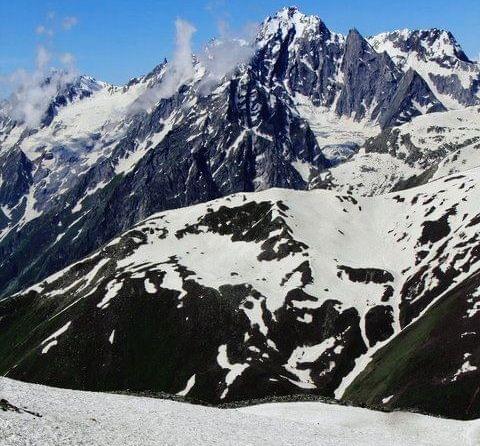
FAQ's of Buran Ghati Trek
How difficult is the buran ghati trek.
You must be physically fit to take part in this particular trek, which ranges in intensity from moderate to challenging. To get your body and mind ready for the walk, following simple exercises are recommended: jogging, stair climbing, sit-ups, push-ups, pull-ups, and squats. Try these few exercises to stop blackouts and fainting. At least one week before the start of the walk, start adding them to your itinerary. Because it needs a lot of endurance and energy, the Buran Ghati walk is somewhat challenging. With an average daily hiking time of 5 to 6 hours, you gain 5,800 feet over the course of eight days. The first two days of the hike are somewhat simpler. The first day sees you ascend over 2000 feet, and the second day adds another 700 feet.
Where Is Buran Ghati located?
Buran Ghati is a mountain byskip placed withinside the lesser (or middle) Himalayan variety. The byskip is a crossover among Janglikh village of Pabbar valley and Brua village of the Baspa valley of Kinnaur.
Can I do Buran Ghati trek In May?
Yes! We advocate May month to be the quality time for the Buran Ghati trek. In May, you'll witness the panoramic vistas of Himalayan levels and luxurious greenery of the Pabbar valley — sans repulsive rains.
Which trek is better: Buran Ghati or Rupin Pass?
Both Buran Ghati and Rupin Pass are placed on comparable altitudes — Rupin pass is barely better. The terrain and panorama is likewise comparable. In fact, the Rupin pass is positioned at the equal variety and aerial distance among these is not much. Choosing one trek over the alternative is a non-public choice. We don’t decide on Buran over Rupin or vice-versa. You shouldn't do both.
Can I do Buran Ghati trek in October?
Yes, Buran Ghati trek in October month is suggested for human beings who are into astrophotography or dawn & nightfall photography. The sky at some point of this time remains clean and the air is preferably crisp for taking pictures of the night time sky or Milky Way.
Treks in Himachal
Treks in uttarakhand, treks in ladakh, treks in nepal, treks in north-east, treks in kashmir.
.png?w=auto&h=400)
The content and images used on this site are copyright protected and copyrights vests with the respective owners.
© 2024 www.heyhimalayas.com All rights reserved.
Travel Around The World Blog
Buran Ghati Trek Guide: Your Ultimate Adventure Companion

The Buran Ghati Trek , located in the Kinnaur district of Himachal Pradesh, India, is an exhilarating journey through diverse landscapes. Spanning over eight days and reaching an altitude of 15,000 feet, this trek offers everything from dense forests and lush meadows to gushing streams and challenging snow-covered passes. It’s a perfect blend of adventure and natural beauty, making it a must-do for any trekking enthusiast.
Historical and Cultural Significance
Buran Ghati has been a traditional route for shepherds and traders for centuries. The trek offers a glimpse into the region’s rich cultural heritage, with ancient temples, rustic villages, and traditional lifestyles of the inhabitants. This blend of history and culture adds a unique dimension to the trekking experience.
Why Choose Buran Ghati?
With its varied terrain and stunning landscapes, the Buran Ghati Trek is an ideal choice for those looking to experience the Himalayas in all their glory. The mix of moderate to challenging trails suits both experienced trekkers and enthusiastic beginners. The trek promises majestic views, diverse flora and fauna, and an adventure in your memory forever.
Best Time to Trek
1. seasonal overview.
The best time to undertake the Buran Ghati Trek is during the pre-monsoon months of May to June and the post-monsoon months of September to October. These periods offer stable weather and clear views, enhancing the trekking experience.
2. Weather Conditions
The weather is generally pleasant during the pre-monsoon months, with daytime temperatures ranging from 10-15°C and nighttime temperatures dropping to 0-5°C. The post-monsoon season can be colder, with temperatures occasionally dropping below freezing at higher altitudes. This time, expect crisp air, clear skies, and vibrant autumn colours.
3. Ideal Months for Trekking
- May to June: Pleasant weather, blooming flora, and accessible trails.
- September to October: Crisp air, clear skies, and vibrant autumn colours.
Trek Preparation
1. physical fitness and training.
The Buran Ghati Trek requires a good level of physical fitness. Start preparing at least 2-3 months in advance with a regimen that includes cardiovascular exercises, strength training, and endurance-building activities. Hiking with a loaded backpack on varied terrains can be particularly beneficial.
2. Essential Gear and Equipment
- Clothing: Layered clothing to adapt to changing temperatures, waterproof jacket, thermal wear for the cold nights.
- Footwear: Sturdy trekking boots with good ankle support and extra socks.
- Accessories: Trekking poles, gloves, hats, sunglasses, and sunscreen.
- Backpack with rain cover
- Sleeping bag (rated for cold temperatures)
- First aid kit (including altitude sickness medication)
- Water bottles and purification tablets
- Energy bars and snacks
- Headlamp with extra batteries
- Personal hygiene items and toiletries
Detailed Itinerary
Day 1: arrival in janglik.
Your journey begins in the charming village of Janglik, accessible via a scenic drive from Shimla. Spend the night here acclimatising and exploring the local surroundings. Janglik is the perfect starting point, offering picturesque views and a taste of the local culture.
Day 2: Janglik to Dayara Thatch
Start your trek with a gentle ascent through forests and meadows, reaching the picturesque Dayara Thatch by evening. The trail offers beautiful views of the valley and surrounding peaks. Overnight camping at Dayara Thatch.
Day 3: Dayara Thatch to Litham
Continue your trek through rolling hills and streams, arriving at Lytham by late afternoon. Stunning mountain views surround the campsite, offering a serene environment for rest and acclimatisation.
Day 4: Acclimatisation at Lytham
Spend a day at Lytham to acclimatise to the altitude. Explore nearby trails and enjoy the panoramic views. This day is crucial for adjusting to the higher altitudes and preparing your body for the upcoming challenges.
Day 5: Litham to Dhunda
Ascend towards Dhunda, a high-altitude campsite offering panoramic views of the surrounding peaks. This part of the trek is more challenging, with steeper ascents, preparing you for the pass crossing. Overnight camping at Dhunda.
Day 6: Dhunda to River Camp via Buran Pass
The highlight of the trek, crossing the Buran Pass, is both exhilarating and demanding. The climb to the pass is steep and challenging but rewards you with breathtaking views. Descend carefully to the River Camp, where you’ll spend the night.
Day 7: River Camp to Barua Village
A relatively straightforward descent through forests and fields leads you to the quaint Barua Village. Celebrate the completion of your trek with the warm hospitality of the locals. Enjoy a traditional meal and rest in the village.
Day 8: Departure from Barua Village
Bid farewell to the mountains and depart from Barua Village, carrying memories of an unforgettable adventure. Arrange for transportation back to your starting point or onward journey.
Trek Highlights
1. majestic views and landscapes.
From the lush meadows of Dayara Thatch to the snow-clad Buran Pass, every step of the trek offers spectacular vistas. The ever-changing scenery keeps the trek exciting and visually rewarding.
2. Flora and Fauna
You can encounter diverse flora and fauna, including Himalayan blue poppies, rhododendrons, and various bird species. The region’s biodiversity is one of its highlights, offering nature enthusiasts plenty to observe and appreciate.
3. Unique Features of the Trek
The Buran Ghati Trek stands out for its blend of forest, meadow, and high-altitude landscapes, making it a microcosm of the Himalayan trekking experience. The crossing of the Buran Pass is particularly memorable, providing a sense of achievement and awe.
Challenges and Safety Tips
Common challenges faced by trekkers.
- Steep ascents and descents
- High-altitude acclimatisation
- Unpredictable weather conditions
Altitude Sickness and How to Manage It
To minimise the risk of altitude sickness, stay hydrated, ascend slowly, and take necessary acclimatisation breaks. Familiarise yourself with the symptoms and take immediate action if they appear.
Safety Precautions
- Always trek with a group or guide.
- Carry a detailed map and navigation tools.
- Inform someone about your trekking plans and expected return.
Local Culture and Traditions
1. villages and inhabitants.
The trek passes through several remote villages where you can interact with the locals and learn about their way of life. The villagers are often welcoming and eager to share their stories and traditions.
2. Customs and Practices
Respect local customs and practices. Dress modestly and seek permission before photographing people or their homes. Showing respect for the local culture enhances your experience and fosters goodwill.
3. Interaction with Locals
Engage with the locals to gain insights into the region’s culture, traditions, and stories. This interaction can be one of the most enriching parts of your trek, providing a deeper understanding of the Himalayan way of life.
Environmental Responsibility
Leave no trace principles.
- Pack out all the trash.
- Minimise campfire impact.
- Respect wildlife and local flora.
Sustainable Trekking Practices
- Use biodegradable products.
- Support local businesses and guides.
- Limit water usage and pollution.
Wildlife Conservation
Avoid disturbing wildlife and stick to designated trails to minimise impact on the natural habitat. Responsible trekking ensures that the environment remains pristine for future generations.
Booking and Costs
How to book your trek.
- Research and choose a reputable trekking agency.
- Book in advance, especially during peak seasons.
- Ensure the package includes permits, accommodation, and meals.
Cost Breakdown
- Trekking package: $300-$500
- Personal gear and equipment: $100-$200
- Miscellaneous expenses: $50-$100
Budgeting Tips
- Compare packages from different agencies.
- Opt for group treks to reduce costs.
- Plan and book early to avail of discounts.
FAQs: Frequently Asked Questions
Q: what is the difficulty level of the buran ghati trek.
A: The trek is moderate to challenging and suitable for trekkers with prior experience.
Q: Do I need any permits for the trek?
A: Yes, specific permits are required, which are usually arranged by the trekking agency.
Q: Is it safe to trek solo?
A: It’s recommended to trek with a group or a guide for safety.
Additional Resources
- Recommended books and maps
- Links to trekking forums and communities
- Contact details for local trekking agencies
More Stories

First Class Travel With Comfort and Fun Guaranteed

Delhi to Patna Flight with MyFlightTrip: A Comprehensive Guide

Best Time to Hike Inca Trail to Machu Picchu – When to Go?
You may have missed.

How To Create A Wikipedia Page For Solo Travel Destinations?

10 Must See Places To Visit In Dammam
- Buran Ghati Trek
- GETTING THERE
- DETAILED ITINERARY
- COST INCLUSIONS
- CANCELLATIONS
- Easy Grade Treks in Himalayas
- Monsoon Trek
- One Week Trek
- Spring Treks
- Summer Treks
Buran Ghati Trek:
Upcoming Buran Ghati trek starting on 12th april 2024 morning from Shimla as per itinerary (8 days, Shimla to Shimla).
Buran Ghati trek is a very pretty and scenic trail connecting Pabbar river valley to Baspa valley. Location Wise the trail lies in the south-eastern flank of Himachal Pradesh, within upper reaches of Shimla and Kinnaur district. Not only the beauty of the valley and the expanse of breathtaking Dayara meadows but the trail also gives an opportunity to visit the glacial Chandranahan lake. Crossing the Buran pass (also referred to as Barua Pass) needs some maneuvering, a steep descent on ice and snow at 15000 ft. Ancient forests, apple orchards, old world villages of Janglik and Barua only add more to this delightful trail.
Day 0: Arrive Chandigarh and reach Shimla 110 Km, 4/5 hours. Hotel/Lodge. Accommodation on your own. Day 1: Drive to Janglik ((9,200 ft) – 150 Km – 8 to 10 hours. Homestay/lodge. Day 2: Trek from Janglik to Dayara Thatch (11,000 ft)- 4/5 hours. Camp. Day 3: Trek from Dayara Thatch to Litham (11,800 ft) – 3/4 hours. Camp. Day 4: Litham to Chandranahan Lake (13,900 ft) & back to Litham, 5/6 hours ( 3+3 Km?). Camp. Day 5: Trek from Litham to Dhunda (13,300 ft) – 4/5 hours. Camp. Day 6: Trek from Dhunda to Munirang (River camp/11,800 ft) via Buran Ghati Pass (15,000 ft) – 9/10 hours. Camp. Day 7: Trek from River Camp to Barua village (6,600 ft) – 4/5 hours (5 Km?) – reach by 1 pm. Trek ends here. Now take a car from Barua to Shimla via Karcham and Rampur – 185 Km – 7/8 hours. You should reach Shimla late in the evening, around 10/11 pm. Pre book your accommodation. Day 8: Mandatory Buffer day for trek. In case if you don’t use it during the trek, you can spend the day in or around Shimla. Day 9: Drive from Shimla to Chandigarh – 110 Km – 4/5 hours or any other place as suitable.
Important Note:
- You need to reach Shimla on Day 0 , i.e. a day prior to the Tour Starting Date as published/listed on the website. Stay @ Shimla that night.
- Shimla to Shimla in 8 days , including a buffer day. Usually Chandigarh to Chandigarh duration will be 10 days. Delhi is another 250 Km from Chandigarh, 5/6 hours by busses.
- Transportation costs from Shimla to trek base Janglik and return from trek end point Barua to Shimla are NOT INCLUDED in the TREK FEE. Either you can reach independently or we can arrange a cab which is usually shared by other trek members. You pay directly to the driver/transporter, sharing equally.
Buran Ghati trek – Altitude and Distance profile graph:
Below is a graphical representation of the altitude and distance of major points on Buran Ghati trek trail.
When it is best to visit Buran Ghati?
As all high altitude treks in the Himalayas (apart from few trans Himalayan treks), Buran Ghati trek also can be done best in two seasons. One being in summer before monsoon and the later being post monsoon in autumn/fall.
Summer (May/June): Starting from mid May to end of June. Because of the residual snow of winter expect moderate to heavy snow above 4000 m/13000 ft during this time. Due to the snow, steep descent from the pass to Barua side may require basic use of rope and ice axe to anchor. Its fun to rappel on this gradient.
Post monsoon/Autumn (Sep/Oct): Traditionally this is the best window for any high altitude pass on the Himalayas. After monsoon the weather becomes clear and haze free. September is typically greener and you will get the meadows (called Thatch in local language) at their best. From October the grass will turn into golden and it will become colder. Also there will be chance of fresh snowfall on high altitude above 14000 ft during October.
Access to Buran Ghati trek base (Janglik):
Based upon your request we will arrange a pick up and drop from Shimla to Janglik. This will be shared equally by the team members on actual basis. A Tata Sumo/similar vehicle charges ₹ 7500 one way. You pay directly to the driver/transporter. This can accommodate 5/6 people. Aprroximately ₹ 3000 per person , Shimla to Janglik and return, when shared with the other trekkers. This is NOT included in the TREK FEE.
Return from Barua (trek end point) to Shimla/Chandigarh/Delhi:
Buran Ghati trek ends at Barua vilalge near to Karcham in Kinnaur. You should reach here on Day 7 around 1 pm. (or Day 8, if the buffer day is utlised). Usally we arrange a car which takes 9/10 hours to reach Shimla, i.e. you reach late, around 10/11 pm.
In case we don’t use the reserve day during the trek, you have an additional day in Shimla. Its nice to relax a day around this hill city after your trek.
From Shimla you may take a bus to Chandigarh, which usually takes around 4 to 5 hours. From Chandigarh you can catch a direct flight back or via Delhi (another 5/6 hours journey on road, 250 Km).
If you have more holidays, it may be a nice idea to explore Sangla, Chitkul etc on Baspa River or to nearby Kalpa.
Available Dates:
Duration: 6 days of trekking from Janglik to Barua. 8 days from Shimla to Shimla. Add at least two days to reach and exit via Chandigarh or more from Delhi.
Prerequisite: One or two prior Himalayan trekking experience is advised. Heavy to moderate snow in pre monsoon. Trekkers must be in good physical condition.
Grade: Moderate
Physicality: 6.5/10
Trail Length: ~ 35 Km
Highest Point: Buran Ghati Pass/Barua Pass ~ 4475 m/15000 ft.
Seasons: May/June (summer/pre monsoon) & September/October (Post Monsoon/Fall)
Further Option: There are other trekking passes like Rupin Pass or Nalgan Ghati in the same region.
Access: Trek starting point (trek base) is Janglik, 150 Km from Shimla.
Rail station: Chandigarh (Station Code: CDG), Kalka (Code: KLK)
Airport: Chandigarh; Nearest airport at Shimla, although irregular flights get cancelled frequently. Delhi is 250 Km from Chandigarh and connected by frequent busses and train services.
Upcoming scheduled dates for Har Ki Dun trek:
- You can check the scheduled Fixed Departure dates in the calendar available inside Booking Form or inside REGISTER NOW form. Tour starting Dates are highlighted as per our itinerary ( Day 1 of 7 days itinerary ).
- At present BOOK NOW functionality is disabled . You can get all the information in your email by submitting the REGISTER NOW form.
- If you are a group of people and available dates are not matching then you may select Custom date mode (by clicking the Select your custom date) and fill in the displayed form.
- You can also check all the available dates at a glance in our TREK CALENDAR .
- Trekkers need to reach Dehradun on Day 1 morning (latest by 8 am) or the previous night. Return to Dehradun on Day 7 evening by 7 pm. Arrange your tickets for inward journey and return accordingly.
How to reach Janglik (The trek base):
You need to reach Shimla on your own. From Shimla we will arrange a pick up to Janglik, if needed.
Nearest Rail station: Chandigarh (Station Code: CDG) or Kalka (Code: KLK)
Nearest Airport: Chandigarh (Airport Code: IXC) which is 250 from Delhi (5/6 hours by bus/train). There is an airport near to Shimla (Code: SLV) but irregular flights with frequent cancellations.
Based upon your request we will arrange a pick up and drop from Shimla to Janglik and return from Barua to Shimla.. This will be shared equally by the team members on actual basis. You pay directly to the driver/transporter. The fare is approximately ₹ 7500 one way for a Tata Sumo/similar vehicle. This can accommodate 5 to 6 people.
It comes around ₹ 3000 per person Shimla to base camp and retuwn, when shared with other trekkers.
Drive to Dhaula: 200 Km – 10/12 hours
Pickup in the morning from Dehradun and reach Dhaula (~ 1550m, 5100 ft) . Distance around 200 Km and can take up to 12 hours with lunch break in between. The road is one of the most scenic in Garhwal region while we go up to the classy hill station of Mussorie at the beginning, turquoise Yamuna river in the middle and conifer forests and meandering Tons river at the later half of the journey. The major points are Mussorie, Yamuna Pool, Damta, Nawgaon, Purola, Mori and Netwar. Mori is the last place where you get a guaranteed mobile network! From Netwar onward we are inside Govind National Park area and at the Forest Check Post entries are made. We cross the Tons River and enter into Rupin valley. Dhaula is a small village with handful of homes and few home-stays for shelter. We camp for the night beside Rupin.
Trek to Sewa: 10 Km – 5/6 hours
Our trek starts today. From campsite we take the wide trail and cross the Rupin for the first time. (Hence onward we will cross Rupin on few occasions till the base of Waterfall) . After crossing the bridge Rupin stays for the day on our right side. The walk is gentle along the river valley with very low gradient. Rupin runs in the gorge some 500 ft below. One moderate climb of 30 mins takes us to the village of Datadhar. Then we traverse and encircle the mountains for couple of hours gently along Rupin to reach the village of Sewa (~ 2000m, 6550ft). The village is a small one with a tea shop and a small lodge. Wooden crafted temple in the village depicts the influence of Kinnaur culture. The Distance is 10 Km and may take up to 6 hours. There is a nice camping ground just another kilometer after the village on the bank of Rupin. After crossing a short jungle stretch we descent to the river bed and cross a side stream called Aligad. The bridge marks the boundary of Uttarakhand and Himachal. The campsite of Aligad (~ 1900m/6230 ft) is on the true right of Rupin in the state of Himachal Pradesh. It may take up to 6 ours.
Trek to Har Ki Dun: 11 Km – 5/6 hours
We start in the morning on the stoned trail and reach the suspension bridge at Seema. The trail straight ahead goes to Ruinsara Tal and further to Bali Pass or Dhumdharkandi Pass. Cross the Tamosa river and climb up to reach the trail which is going along the river upstream. From now onward the river will be on our right (“True Right” of the river) and we gradually go up to reach a vast green expanse which is a huge clearing for farming by the people of Osla. From here the peaks facing north and north east opens up and the views of Banderpunch group and Swargarohini group are breathtaking along with Black Peak (Kalanag). We gradually skirt the mountain for another hour to reach the base of the steady climb to Kalkatti Dhar. From here we can see the Ruinsara valley takes a right turn , while we take a left turn. Har Ki Dun Nallah and Ruinsara Nallah meets below Kalkatti Dhar to form Tamosa river. It is normally windy while we climb to Kalkatti Dhar. After reaching the the highest point on the shoulder of the mountain we turn left and gradually go down. First time after Seema we again enter into the forest and descend steadily to a side stream. In winter the waterfall remains frozen. This is a good place to have lunch. From here we gradually climb in to a forest canopy of Silver Fir , Cedar and Oak. Crossing the forest we enter in to the wider valley with occasional Birch ( Bhurja Patra in Hindi) and Rhododendrons. The valley is teemed with bird life. Buntings, Flycatchers and Mountain Fiches are abundant. Himalayan Langur and Blue Sheep are common in this valley. There are reported sightings of elusive Snow Leopard in this region. Now the river bed is almost at the same level and Har Ki Dun valley approaches. The camping ground is near the river and several tents can be pitched. Walk another 10 mins to cross the Har Ki Dun Nallah over a small wooden bridge. Forest Rest house (FRH) is a minutes walk from here. GMVN TRH is another 10 mins ahead. It is mandatory in winter to book in advance for any of these huts. Caretaker only comes along with the keys for a prior booking. During summer food is available in GMVN TRH. There are two rooms at FRH and one dormitory at GMVN which can be booked. It is better to come with own tent and provisions in season to avoid any hassle. Total distance is 11 Km and may take 5/6 hours. Average height of the valley is ~ 3500 m/11500 ft. Camp for the night.
Exploration Day towards Marinda Tal or Jamdar Glacier: 8/10 Km – 4/5 hours
Wake up early in the morning to see the sunrise on Swargarohini group of peaks. Changing colour is magnificent to watch and unforgettable. The Forest Rest House (FRH) is located some what centrally in this vast expanse of the valley. Heading straight from FRH is Har Ki Dun peak. On the right towering Swargarohini and to the left is Hata peak. Two streams are coming from two different directions, one from Jaundar glacier and other from Borasu pass watershed to Har Ki Dun and forming the Har Ki Dun Nallah. Har Ki Dun is a big enough valley sitting in the middle with forking of trails in different directions. Treeline recedes here in all directions. Today is an exploration day amidst snow or simply one can sit back at the campsite and relax while sipping a cup of coffee. After breakfast one can either go to explore the Jaundar glacier or to Maninda Tal area, which are on different directions. The snout of Janudar glacier is 8 Km from Har Ki Dun. The trail is not defined and on snow, boulder and moraine, involving descent and ascent. It is pretty difficult to reach the snout of the glacier and return to the campsite in a single push. A camping is required in between. It is advisable to venture and advance in this direction only till noon and retrace back by 3 pm. On the other hand, Maninda Tal is about 2 hours walk from Har Ki Dun and is in the route towards Borasu Pass trail which connects this valley to Baspa valley in Kinnaur, Himachal Pradesh. The area is a shallow formation of clogged water resulting from a flattened bed of the stream. The valley heading upward looks splendid from here. Lammergeier and Himalayan Griffons encircle the valley surrounded by rocky cliffs. Pug marks of Snow Leopard following a flock of Bharal (Blue Sheep) is common. Return to Har Ki Dun by lunch time and take the hot lunch prepared freshly. From the FRH cross the wooden bridge on the Har Ki Dun Nallah walk toward the camping ground in the afternoon. Kedarkanta peak is clearly visible and the highest point in this direction. Sunset is mesmerising , reflecting the last rays of sun on Har Ki Dun Nallah and peak. Changing golden hue makes any trekker a spellbound spectator. It is a good idea to collect firewood to setup a fire in the night. This is already a fragile ecosystem, so ONLY collect branches and twigs which are already fallen from the trees. The FRH has a fireplace inside. Nights are pretty cold here and the temperature can plummet to -10 deg C outside the night in winters. Night stay in tent.
Trek to Osla/Seema: 11 Km – 5 hours
Today after breakfast we start our return journey toward Seema. It is a gentle descent along downstream till we reach the waterfall which remains frozen in winter. From here we climb up to Kalkatti Dhar and descend gradually to the vast crop field. Approaching the Seema bridge, we take the trail straight heading toward the village Osla, instead of directly going down to Seema. It is a memorable experience to visit a village like Osla, nestled on the lap of mountain. The houses are mostly build of wooden structure with slate as the roof. Houses are two storied, lower being the cattle shelter and firewood/fodder store, upper being the residence of the family. Though few satellite TV dishes are present on top of few houses but the village lacks very basic facilities. A satellite phone is available to connect to the outer world. One can make a phone call to home by paying nominal charge, if a connection is available. The village is spread along the slope of the mountain and a temple is the heart of the village. Wood crafted temple is more than a century old. It is a legend that Duryodhan, the eldest brother of the Kauravas is worshipped in this temple. The deity of the temple resides at different temples of the villages of this valley, turn by turn. The rule being same across the Himalaya, summer is higher, and winter is lower. It is a chance to meet local children and people, knowing their livelihood, custom and culture, social structure. It is worthwhile to spend some time with joyful kids in the village. After spending some time in the village we take the trail down toward the Seema bridge and by crossing the suspension bridge we reach Seema. Night accommodation in tent.
Trek to Taluka: 14 Km – 6/7 hours; Drive to Sankri: 1 hour
We retrace our trail back to Taluka. From here take the car to reach the trek end point Sankri. Night stay in lodge/homestay.
Drive to Dehradun: 200 Km – 10 hours
In the morning we start our return journey and reach Dehradun by 7 pm. Trip ends here.
P.S.: Distances and altitudes are approximate and may not be exact.
TREK FEE: ₹ 15,500 (Janglik to Barua) + 5% GST
Book for 5 persons or more and get 10% Group Discount on TREK FEE.
Inclusions:
1 night’s accommodation at Janglik (Day 1) in homestay/lodge on sharing basis and dinner.
All meals during the trek (starting from Dinner at Janglik and ending at packed lunch at Barua. Regular Indian style nutritious vegetarian food during the trek (including occasional serving of eggs), breakfast packed/hot lunch (depending upon the time you reach a campsite), snacks, dinner along with coffee/tea/soup.
Excellent Trekking Guide, who will be a local to this particular area and has profound knowledge of the trekking trails around.
Specialised Cook, Support staff, Porters for carrying the central logistics of the trek.
Stay in tents on double sharing basis during the trek. We will provide separate tents for male and female in our fixed group departures.
Camping equipment like Sleeping bag, Carry mattress, Gaiters, Micro spikes/Crampon. (Bring your own sleeping if you have a high altitude specific personal Sleeping Bag. This is always better for hygienic reasons.)
Kitchen tent, dinning tent and toilet tent as required during the trek.
All permit fee, camping charges, forest levy required for the trek.
Basic Medical & First Aid kit.
Travel and medical insurance covering illness on high altitude (AMS). This is included for Indian nationals up to 60 years.
Exclusions:
Transportation from Shimla to Janglik and return from Barua to Shimla. Uslally it comes approcimately ₹ 3000 per person, to and from when shared in a vehicle like Tata Sumo with other trekkers. We may arrange the car, you pay directly to the driver, sharing equally.
We assume that you will carry your personal Rucksack/Backpack with all your personal belongings. If you want to offload your Rucksack and be carried by our horse/porter then you need to pay additional ₹ 2000 for the entire duration of the trek. The Rucksack should not weigh more than 10 Kg.
Cost of the buffer day. If we utilise this during the trek, you need to pay ₹ 2500 per person for the same.
Any tip/gratuity to the HT supports staff.
Anything is is NOT mentioned in the “Inclusions” or personal in nature.
- We assume that you have read and understood our “Terms & Conditions” ( https:// greenvalleyhimalayas .com/terms-and-conditions ) before Booking a trek/tour.
- To reserve your place in a scheduled Fixed Departure trek or a Customised/Private trek pay 25% of the TREK/TOUR FEE as the initial “Booking Deposit” . You can pay by Net banking/Draft/Cheque/Credit/Debit/AMEX cards. This will ensure your participation in the desired trek and we will reserve your place in the scheduled date. You need to pay the remaining amount at least 15 days before Trek Starting Date .
- If you book a Trek/Tour before 14 days or less from Trek/Tour Starting Date, you need to pay the full TREK/TOUR FEE .
Cancellations:
- “Booking Amount” i.e. 25% of the TREK/TOUR FEE is Non-Refundable at any stage.
- If in case you are not able to make it due to unavoidable reason(s), we provide you a very flexible choice of Shifting to another trek within next one year . One year is counted from the starting date of the trek/tour you booked initially with us.
- In case you postpone your trip you need to inform minimum of 15 days before the trek/tour starting date. (Though we suggest to inform us earlier if known)
- In case you postpone a trek/tour before 15 days of the scheduled Trek/Tour Starting date or prior , you may shift to another group of the same trek/tour scheduled in the same season or within next one year. You may shift to another suitable route also. For changing any, you need our approval first. Your request must be in written communication through your registered email with us.
- If you cancel/postpone a trek/tour from 14 days to 8 days before tour starting date , your Booking Amount is Non-Refundable. We will not take any request of shifting dates. We will charge 50% of the amount as Cancellation Charges and process refund of remaining 50%. You may also shift to another group within next year but 25% Booking Amount will be deemed as Cancellation Charge and the rest amount will be transferred to the shifted group.
- If you cancel a trek/tour 7 days (i.e. a week) before Trek/Tour Starting Date or later , there will be NO REFUND.
- In case of any unforeseen incident including but not limited to natural calamities like flood, earthquake, landslide, forest fire or any political unrest, if we are compelled to cancel the trek/trip, you will be entitled to redeem the full amount for the same/similar kind of trek/trip within next one year.
If you need more clarifications write in to [email protected]

Leave a Review
Cancel reply.
Save my name, email, and website in this browser for the next time I comment.
Tour Reviews
There are no reviews yet.
You May Also Like
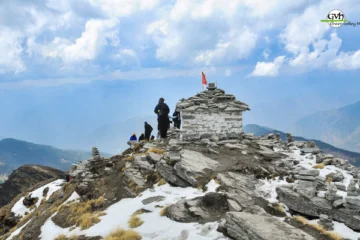
Deoriatal Chandrashila Trek

HAMPTA PASS TREK
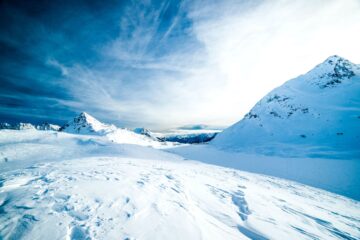
Gidara Bugyal Trek
Get best quote.
Fill this will get in touch for further details

Buran Ghati Trek
Home » Shop » Buran Ghati Trek
- getting there
- detailed itinerary
- Cost inclusions
- Cancellations
- Himachal Pradesh
- Kinnaur Treks
- Moderate Grade Treks in Himalayas
- Summer Treks
- Up to 2 weeks trek
Buran Ghati Trek:
Upcoming Buran Ghati trek starting on 12th June 2022 morning from Shimla as per itinerary (8 days, Shimla to Shimla).
Buran Ghati trek is a very pretty and scenic trail connecting Pabbar river valley to Baspa valley. Location Wise the trail lies in the south-eastern flank of Himachal Pradesh, within upper reaches of Shimla and Kinnaur district. Not only the beauty of the valley and the expanse of breathtaking Dayara meadows but the trail also gives an opportunity to visit the glacial Chandranahan lake. Crossing the Buran pass (also referred to as Barua Pass) needs some maneuvering, a steep descent on ice and snow at 15000 ft. Ancient forests, apple orchards, old world villages of Janglik and Barua only add more to this delightful trail.
Day 0: Arrive Chandigarh and reach Shimla 110 Km, 4/5 hours. Hotel/Lodge. Accommodation on your own. Day 1: Drive to Janglik ((9,200 ft) – 150 Km – 8 to 10 hours. Homestay/lodge. Day 2: Trek from Janglik to Dayara Thatch (11,000 ft)- 4/5 hours. Camp. Day 3: Trek from Dayara Thatch to Litham (11,800 ft) – 3/4 hours. Camp. Day 4: Litham to Chandranahan Lake (13,900 ft) & back to Litham, 5/6 hours ( 3+3 Km?). Camp. Day 5: Trek from Litham to Dhunda (13,300 ft) – 4/5 hours. Camp. Day 6: Trek from Dhunda to Munirang (River camp/11,800 ft) via Buran Ghati Pass (15,000 ft) – 9/10 hours. Camp. Day 7: Trek from River Camp to Barua village (6,600 ft) – 4/5 hours (5 Km?) – reach by 1 pm. Trek ends here. Now take a car from Barua to Shimla via Karcham and Rampur – 185 Km – 7/8 hours. You should reach Shimla late in the evening, around 10/11 pm. Pre book your accommodation. Day 8: Mandatory Buffer day for trek. In case if you don’t use it during the trek, you can spend the day in or around Shimla. Day 9: Drive from Shimla to Chandigarh – 110 Km – 4/5 hours or any other place as suitable.
Important Note:
- You need to reach Shimla on Day 0 , i.e. a day prior to the Tour Starting Date as published/listed on the website. Stay @ Shimla that night.
- Shimla to Shimla in 8 days , including a buffer day. Usually Chandigarh to Chandigarh duration will be 10 days. Delhi is another 250 Km from Chandigarh, 5/6 hours by busses.
- Transportation costs from Shimla to trek base Janglik and return from trek end point Barua to Shimla are NOT INCLUDED in the TREK FEE. Either you can reach independently or we can arrange a cab which is usually shared by other trek members. You pay directly to the driver/transporter, sharing equally.
Buran Ghati trek – Altitude and Distance profile graph:
Below is a graphical representation of the altitude and distance of major points on Buran Ghati trek trail.
When it is best to visit Buran Ghati?
As all high altitude treks in the Himalayas (apart from few trans Himalayan treks), Buran Ghati trek also can be done best in two seasons. One being in summer before monsoon and the later being post monsoon in autumn/fall.
Summer (May/June): Starting from mid May to end of June. Because of the residual snow of winter expect moderate to heavy snow above 4000 m/13000 ft during this time. Due to the snow, steep descent from the pass to Barua side may require basic use of rope and ice axe to anchor. Its fun to rappel on this gradient.
Post monsoon/Autumn (Sep/Oct): Traditionally this is the best window for any high altitude pass on the Himalayas. After monsoon the weather becomes clear and haze free. September is typically greener and you will get the meadows (called Thatch in local language) at their best. From October the grass will turn into golden and it will become colder. Also there will be chance of fresh snowfall on high altitude above 14000 ft during October.
Access to Buran Ghati trek base (Janglik):
Based upon your request we will arrange a pick up and drop from Shimla to Janglik. This will be shared equally by the team members on actual basis. A Tata Sumo/similar vehicle charges ₹ 7500 one way. You pay directly to the driver/transporter. This can accommodate 5/6 people. Aprroximately ₹ 3000 per person , Shimla to Janglik and return, when shared with the other trekkers. This is NOT included in the TREK FEE.
Return from Barua (trek end point) to Shimla/Chandigarh/Delhi:
Buran Ghati trek ends at Barua vilalge near to Karcham in Kinnaur. You should reach here on Day 7 around 1 pm. (or Day 8, if the buffer day is utlised). Usally we arrange a car which takes 9/10 hours to reach Shimla, i.e. you reach late, around 10/11 pm.
In case we don’t use the reserve day during the trek, you have an additional day in Shimla. Its nice to relax a day around this hill city after your trek.
From Shimla you may take a bus to Chandigarh, which usually takes around 4 to 5 hours. From Chandigarh you can catch a direct flight back or via Delhi (another 5/6 hours journey on road, 250 Km).
If you have more holidays, it may be a nice idea to explore Sangla, Chitkul etc on Baspa River or to nearby Kalpa.
Click here to view the List of Things to carry in Buran Ghati trek
Why treks with ht.
Duration: 6 days of trekking from Janglik to Barua. 8 days from Shimla to Shimla. Add at least two days to reach and exit via Chandigarh or more from Delhi.
Prerequisite: One or two prior Himalayan trekking experience is advised. Heavy to moderate snow in pre monsoon. Trekkers must be in good physical condition.
Grade: Moderate
Physicality: 6.5/10
Trail Length: ~ 35 Km
Highest Point: Buran Ghati Pass/Barua Pass ~ 4475 m/15000 ft.
Seasons: May/June (summer/pre monsoon) & September/October (Post Monsoon/Fall)
Further Option: There are other trekking passes like Rupin Pass or Nalgan Ghati in the same region.
Access: Trek starting point (trek base) is Janglik, 150 Km from Shimla.
Rail station: Chandigarh (Station Code: CDG), Kalka (Code: KLK)
Airport: Chandigarh; Nearest airport at Shimla, although irregular flights get cancelled frequently. Delhi is 250 Km from Chandigarh and connected by frequent busses and train services.
Upcoming scheduled dates for Rupin Pass trek:
- You can check the scheduled Fixed Departure dates in the calendar available inside Booking Form or inside REGISTER NOW form. Tour starting Dates are highlighted as per our itinerary ( Day 1 of 8 days itinerary, Shimla to Shimla including a buffer day ).
- At present BOOK NOW functionality is disabled . You can get all the information in your email by submitting the REGISTER NOW form.
- If you are a group of people and available dates are not matching then you may select Custom date mode (by clicking the Select your custom date) and fill in the displayed form.
- You can also check all the available dates at a glance in our TREK CALENDAR .
- Trekkers need to reach Shimla on Day 0, a day prior to Tour Starting Date. Return to Shimla on Day 7 or Day 8 (in case we use the buffer day), late in the evening around 10/11 pm. Arrange your tickets for inward journey and return from Shimla accordingly.
How to reach Janglik (The trek base):
You need to reach Shimla on your own. From Shimla we will arrange a pick up to Janglik, if needed.
Nearest Rail station: Chandigarh (Station Code: CDG) or Kalka (Code: KLK)
Nearest Airport: Chandigarh (Airport Code: IXC) which is 250 from Delhi (5/6 hours by bus/train). There is an airport near to Shimla (Code: SLV) but irregular flights with frequent cancellations.
Based upon your request we will arrange a pick up and drop from Shimla to Janglik and return from Barua to Shimla.. This will be shared equally by the team members on actual basis. You pay directly to the driver/transporter. The fare is approximately ₹ 7500 one way for a Tata Sumo/similar vehicle. This can accommodate 5 to 6 people.
It comes around ₹ 3000 per person Shimla to base camp and retuwn, when shared with other trekkers.
Drive to Dhaula: 200 Km - 10/12 hours
Trek to sewa: 10 km - 5/6 hours, trek to jhaka: 12 km - 6/7 hours, trek to suruwas thatch: 7 km - 4/5 hours, trek to dhanderas thatch (lower waterfall): 6 km - 4 hours, trek to ratapheri: 5 km - 4/5 hours, trek to sangla kanda over rupin pass: 12 km - 8/9 hours, trek to sangla: 4 km - 2 hours.
P.S.: Distances and altitudes are approximate and may not be exact.
CLICK HERE For List of Things to Carry in Rupin Pass Trek OR DOWNLOAD PDF BROCHURE .
trek fee: ₹ 15,500 (janglik to barua) + 5% gst .
Book for 5 persons or more and get 10% Group Discount on TREK FEE.
Inclusions:
1 night’s accommodation at Janglik (Day 1) in homestay/lodge on sharing basis and dinner.
All meals during the trek (starting from Dinner at Janglik and ending at packed lunch at Barua. Regular Indian style nutritious vegetarian food during the trek (including occasional serving of eggs), breakfast packed/hot lunch (depending upon the time you reach a campsite), snacks, dinner along with coffee/tea/soup.
Excellent Trekking Guide, who will be a local to this particular area and has profound knowledge of the trekking trails around.
Specialised Cook, Support staff, Porters for carrying the central logistics of the trek.
Stay in tents on double sharing basis during the trek. We will provide separate tents for male and female in our fixed group departures.
Camping equipment like Sleeping bag, Carry mattress, Gaiters, Micro spikes/Crampon. (Bring your own sleeping if you have a high altitude specific personal Sleeping Bag. This is always better for hygienic reasons.)
Kitchen tent, dinning tent and toilet tent as required during the trek.
All permit fee, camping charges, forest levy required for the trek.
Basic Medical & First Aid kit.
Travel and medical insurance covering illness on high altitude (AMS). This is included for Indian nationals up to 60 years.
Exclusions:
Transportation from Shimla to Janglik and return from Barua to Shimla. Uslally it comes approcimately ₹ 3000 per person, to and from when shared in a vehicle like Tata Sumo with other trekkers. We may arrange the car, you pay directly to the driver, sharing equally.
We assume that you will carry your personal Rucksack/Backpack with all your personal belongings. If you want to offload your Rucksack and be carried by our horse/porter then you need to pay additional ₹ 2000 for the entire duration of the trek. The Rucksack should not weigh more than 10 Kg.
Cost of the buffer day. If we utilise this during the trek, you need to pay ₹ 2500 per person for the same.
Any tip/gratuity to the HT supports staff.
Anything is is NOT mentioned in the “Inclusions” or personal in nature.
- We assume that you have read and understood our “Terms & Conditions” ( https://himalayatrekker.com/terms-and-conditions ) before Booking a trek/tour.
- To reserve your place in a scheduled Fixed Departure trek or a Customised/Private trek pay 25% of the TREK/TOUR FEE as the initial “Booking Deposit” . You can pay by Net banking/Draft/Cheque/Credit/Debit/AMEX cards. This will ensure your participation in the desired trek and we will reserve your place in the scheduled date. You need to pay the remaining amount at least 15 days before Trek Starting Date .
- If you book a Trek/Tour before 14 days or less from Trek/Tour Starting Date, you need to pay the full TREK/TOUR FEE .
Cancellations:
- “Booking Amount” i.e. 25% of the TREK/TOUR FEE is Non-Refundable at any stage.
- If in case you are not able to make it due to unavoidable reason(s), we provide you a very flexible choice of Shifting to another trek within next one year . One year is counted from the starting date of the trek/tour you booked initially with us.
- In case you postpone your trip you need to inform minimum of 15 days before the trek/tour starting date. (Though we suggest to inform us earlier if known)
- In case you postpone a trek/tour before 15 days of the scheduled Trek/Tour Starting date or prior , you may shift to another group of the same trek/tour scheduled in the same season or within next one year. You may shift to another suitable route also. For changing any, you need our approval first. Your request must be in written communication through your registered email with us.
- If you cancel/postpone a trek/tour from 14 days to 8 days before tour starting date , your Booking Amount is Non-Refundable. We will not take any request of shifting dates. We will charge 50% of the amount as Cancellation Charges and process refund of remaining 50%. You may also shift to another group within next year but 25% Booking Amount will be deemed as Cancellation Charge and the rest amount will be transferred to the shifted group.
- If you cancel a trek/tour 7 days (i.e. a week) before Trek/Tour Starting Date or later , there will be NO REFUND.
- In case of any unforeseen incident including but not limited to natural calamities like flood, earthquake, landslide, forest fire or any political unrest, if we are compelled to cancel the trek/trip, you will be entitled to redeem the full amount for the same/similar kind of trek/trip within next one year.
If you need more clarifications write in to [email protected]

Tour Reviews
There are no reviews yet.
Leave a Review
Cancel reply.
You must be logged in to post a comment.
You May Also Like
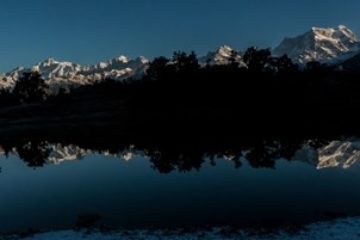
Deoriatal Chandrashila Trek
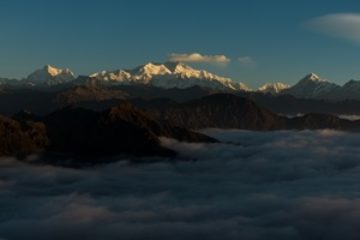
Singalila Phoktey Dara Trek
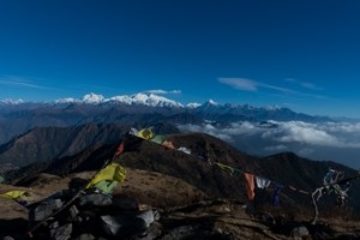
Singalila Phalut Trek
Submit this form that we can email you all the necessary details and call you to discuss., tour starting date: green boxed dates indicate starting of a scheduled fixed departure tour (day 1 of our tour itinerary). please check the calendar and choose a suitable fixed departure date (green boxed) unless dates are not matching or you are looking for a customised/private trip., i accept the terms & conditions.

- Destinations

Solo Travel Adventures: Tips for Safe and Rewarding Exploration
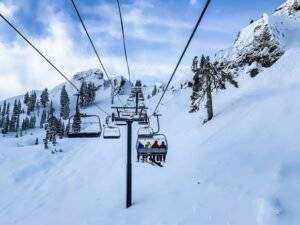
The Best Active Luxury Adventures for Solo Travellers 2024

Best Places for Solo Female Travel in India: Complete Guide 2024
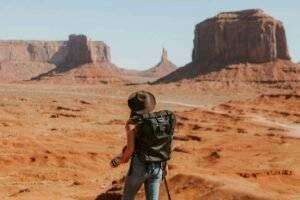
Discover The Top 10 Best Places for Solo Female Travelers in the USA
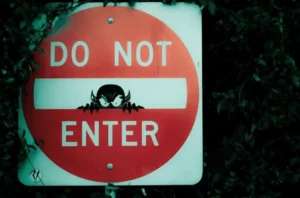
Travel Safety Tips | How to Travel Safer and Mitigate Risk
Business Travel to China a Comprehensive Guide 2024
Best Nashville Party Tractor: A Ride You Won’t Want to Miss
Best Female Friendly Activities in Miami
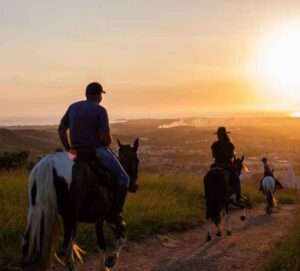
Top Experiences for Adventure Seekers in Kenya

10 Top Places to Visit in Italy on Your Next Visit
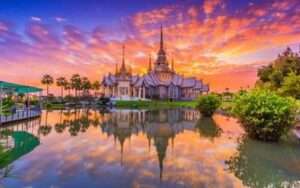
Have a Mesmerizing Experience in Southeast Asia
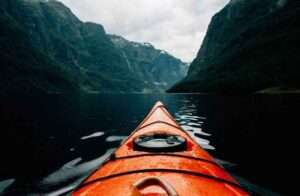
Golden Escapades: Embracing Adventure in the Prime of Life
Best Budget-Friendly Trip To Kashmir & Ladakh 2024
How to Travel on a Budget Without Compromising the Experience 2024
Top 10 Budget Friendly Trips to Europe
32 Clever Budget Travel Tips For Saving Money on Your Trip

Conquering the Alps in Style: Luxurious Taxi Transfers for Unforgettable Experiences
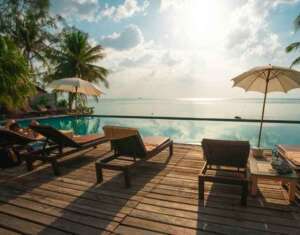
The Rise of Luxury Travel: Exploring Exclusive Destinations and Experiences
What is the Most Luxurious Destinations in the World – Top 7
The Ultimate Guide to the Luxury Travel Experiences
- Travel Shop

Discover Buran Ghati Trek: Exploring its Beauty in 2024
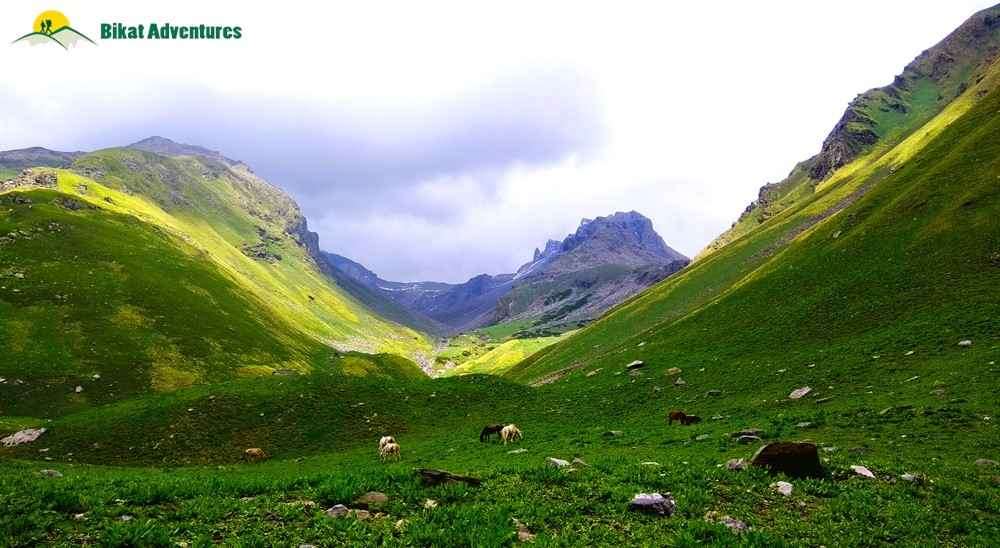
Are you ready for an amazing adventure? Let’s explore the Buran Ghati Trek together! This trek takes you through beautiful mountains and valleys in Himachal Pradesh, India. Imagine walking among tall mountains, seeing snow on their tops, and hearing the sound of waterfalls. The Buran Ghati Trek has all of this and more!
Our goal is to give you all the information you need to get excited and ready for this adventure . Whether you’re new to trekking or you’ve done it before, we’re here to help you prepare for an amazing journey ahead. So, let’s get started and discover the wonders of the Buran Ghati Trek!
Table of Contents
Understanding The Buran Ghati Trek
Let’s learn more about the Buran Ghati Trek:
1. Location and Geography:
- Buran Ghati Trek is located in Himachal Pradesh, India.
- It winds through the stunning landscapes of the Himalayas, offering breathtaking views of mountains, valleys, and forests.
2. Trek Route Overview:
- The trek typically starts from the charming village of Janglik and ends at Barua village.
- It usually takes around 6 to 8 days to complete, depending on the itinerary.
- The trek is known for its moderate to challenging difficulty level, with steep ascents and descents.
3. Key Landmarks and Natural Wonders:
- Along the trek, you’ll encounter mesmerising sights such as lush meadows, dense forests, and pristine waterfalls.
- One of the highlights is crossing the Buran Ghati Pass at an altitude of around 15,000 feet, offering panoramic views of the surrounding mountains.
- Other notable landmarks include Chandernahan Lake, a serene alpine lake, and the picturesque villages of Dayara and Lytham.
Understanding these aspects of the Buran Ghati Trek will help you better prepare for this unforgettable adventure!
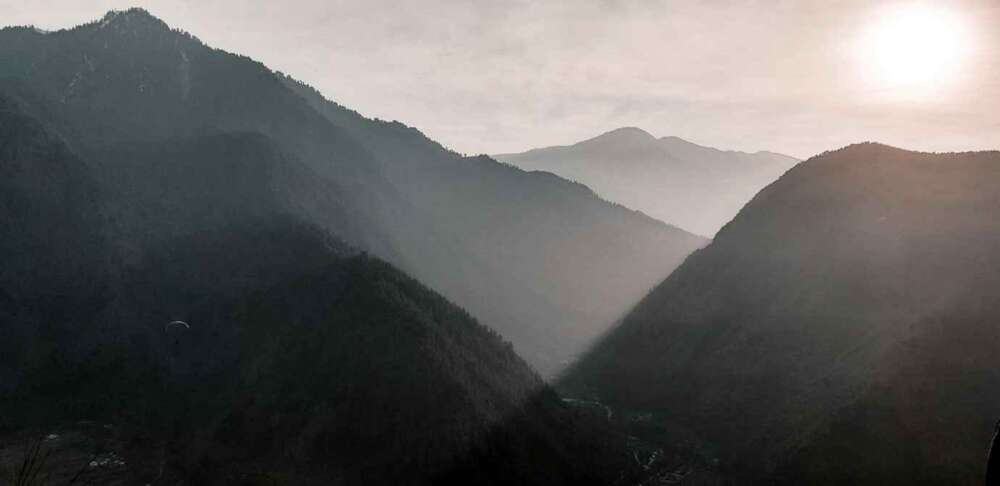
Planning Your Buran Ghati Adventure
Let’s get ready for your Buran Ghati Trek:
- Preparing for the Trek: Essential gear and equipment: List of items you’ll need, such as trekking shoes, backpack, clothing layers, sleeping bag, and camping gear.
- Fitness and Training Tips: Ensure that you’re physically prepared for the trek, including cardiovascular exercises, strength training, and hiking practice.
- Logistics: The starting point of the Buran Ghati Trek is the charming village of Janglik. Here’s how you can reach there:
- The nearest airport to Janglik is Bhuntar Airport in Kullu, Himachal Pradesh, located approximately 200 kilometres away.
- From Bhuntar Airport, you can hire a taxi or take a bus to reach Janglik. The journey takes around 8-10 hours.
- The nearest railway station to Janglik is Shimla Railway Station, situated approximately 215 kilometres away.
- From Shimla Railway Station, you can hire a taxi or take a bus to reach Janglik. The journey takes around 9-11 hours.
- Janglik is well-connected by road from major cities like Shimla, Chandigarh, and Manali.
- You can either drive to Janglik or take a bus from nearby towns and cities. Private taxis and shared jeeps are also available.
Accommodation Options: Once you reach Janglik, you’ll find several accommodation options to suit your preferences and budget:
Guesthouses and Homestays:
- Janglik village and nearby areas offer guesthouses and homestays, providing a cosy and authentic stay experience.
- You can expect basic amenities such as comfortable rooms, home-cooked meals, and warm hospitality from the hosts.
Camping Sites:
- For those seeking a closer connection with nature, camping sites are available in and around Janglik village.
- Pitch your tent amidst the picturesque surroundings and enjoy a night under the starlit sky.
Permits and Regulations: it’s essential to have the necessary permits and adhere to the regulations:
- Permits are required for trekking in the region and can be obtained from the local authorities or tour operators.
- Make sure to carry valid identification documents and permits with you during the trek.
Regulations:
- Respect the culture and local traditions of the region.
- Follow Leave No Trace principles to minimize your environmental impact.
- Stay on designated trekking trails and avoid venturing into restricted areas.
- Observe wildlife from a distance.
- Refrain from feeding or disturbing them.
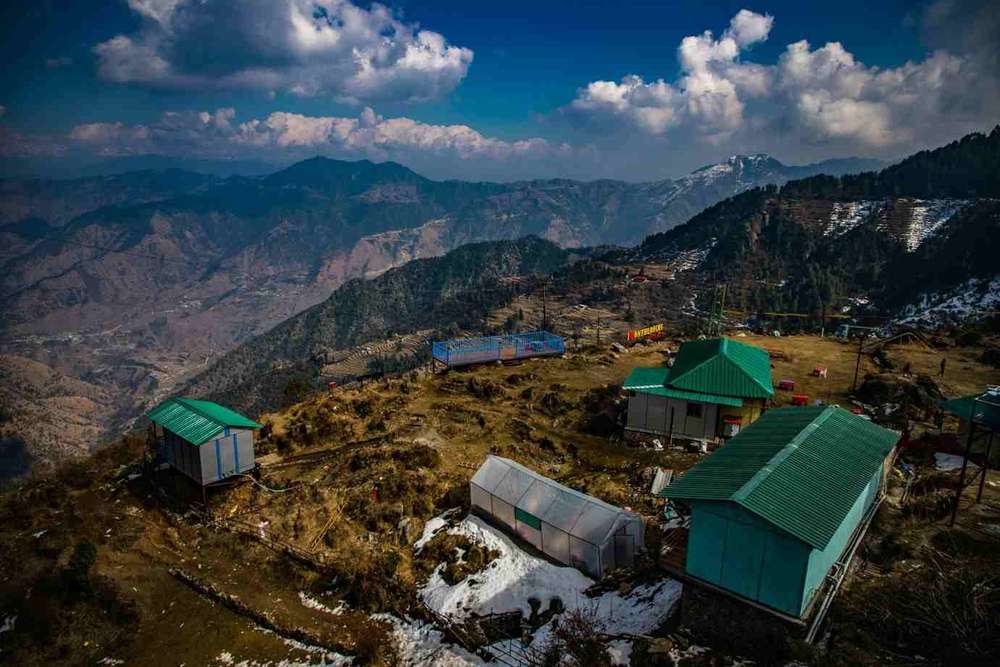
Weather and Seasonal Variations: Mother Nature’s Mood Swings on the Buran Ghati Catwalk
Navigating through the Himalayas on the Buran Ghati Trek isn’t just about puffing your chest out at those majestic mountains; it’s a full-blown telenovela with nature’s mood swings. Let me give you the seasonal scoop—because who doesn’t love a little drama with their scenic views?
Spring: The Drama Queen Awakens: Imagine nature waking up from its slumber, throwing off the snow blanket, and deciding it’s time for a change of wardrobe. Spring on the Buran Ghati Trek is like stepping into a Van Gogh painting if he were obsessed with wildflowers and not just those starry nights. The weather? She’s mostly mild and pleasant, serving sunny days on a platter. But beware, she’s prone to sudden mood shifts—cue the dramatic spring showers. Always pack a waterproof jacket, because nobody likes an unexpected wet t-shirt contest in the middle of their trek. Ideal for nature lovers and those who fancy themselves as amateur Ansel Adams.
Summer: Here Comes the Sun (Doo Doo Doo Doo): Summer rolls in hot and heavy, turning the lower trek paths into a temperate catwalk, while the higher altitudes play it cool, like that one friend who never sweats. The sun’s out buns out, but remember, the mountains have their own plans—afternoon thunderstorms that crash the party uninvited. These storms are the divas of the trek, so maybe plan your walk of fame earlier in the day to avoid their peak drama hours.
Autumn: Nature’s Golden Hour: Ah, autumn! Picture perfect, Instagram-worthy, the best time to visit—however you wanna spin it, autumn is when Buran Ghati turns into that golden-hour selfie you never need to filter. The rains have bailed, leaving clear skies and that crisp mountain air that makes you want to bottle it up and sell it as a luxury perfume. “Eau de Himalaya” anyone? The trees and meadows flaunt shades of gold, orange, and amber—basically, nature’s last hurrah before it decides to ghost us for winter. If you’re seeking the glory of long-distance trekking without nature’s mood swings, autumn is your boo.
Winter: Ice Queen Realness: Winter over at Buran Ghati is like Elsa went all out after a breakup—beautiful, majestic, but cold as hell. The trails are wrapped in a blanket of snow, turning your trek into a walk in a winter wonderland (cue the Christmas tunes). But, darling, let’s be real, it’s cold, and unless you’ve got the gear to match, you might as well be streaking. We’re talking insulated everything, sturdy boots, and those sexy crampons for that mountain catwalk. The upside? Fewer crowds, more serene snowscapes, and the bragging rights that you’re a tough cookie.
When to Whip Out Your Trekking Boots?: Choosing when to conquer Buran Ghati really boils down to your adventure flavor. Want the full nature extravaganza with a side of dramatic weather? Spring and summer will serve it up. Looking for that perfect selfie backdrop without nature’s temper tantrums? Autumn will treat you right. Or maybe you’re all about the challenge and can handle the cold shoulder from the Ice Queen? Winter awaits, you brave soul.
Each season strides down the runway with its own vibe and challenges, and there’s no wrong time to visit—just a range of what kind of adventure you’re signing up for. So, pack your bags, prep for nature’s moods, and remember: Every season is a new episode in the epic series that is the Buran Ghati Trek.
Challenges and Adventures: The Badassery of the Buran Ghati Trek
Hey, you adventurous soul, ready to taste the trail mix of adventure known as the Buran Ghati Trek? Strap on those boots, because this ain’t your grandma’s walk in the park—unless granny’s idea of a stroll includes vertical marathons, rock wrestling, and some chilling river dance moves.
Steep Ascents: Stairway to Heaven or Leg Day from Hell?: Brace yourself, lovely legions of leg-lovers, ’cause this trek is starting with a vertical party. Those steep ascents are where you earn your trek stripes, one panting breath at a time. You’ll be huffing and puffing your way through forests so dense, even the Big Bad Wolf would get lost. But, babes, when you conquer those peaks and your quads are screaming for mercy, remember: pain is just weakness leaving the body, and you’re exchanging it for some epic summit selfies!
Rocky Terrain: Ballet on Boulders: You didn’t sign up for a dance class, but here you are, pirouetting across Mother Nature’s idea of a rocky road. Each step is a mix of grace and grit—think of it as a toe-tapping trial where you’ll either find your footing or your face to the ground. So, channel your inner mountain goat with a mantra of “Sure-footed and sassy,” because believe me, sweet trekkers, you’ll be bonding with every blessed pebble before this is over.
River Crossings: Splashy Shenanigans: Who needs a chill day at the spa when you can have a heart-racing river romp? Those icy waters are colder than your ex’s heart, but twice as invigorating! You’ll be tip-toeing and slip-sliding over rocks like a glacial game of ‘The Floor Is Lava.’ Feel the thrill, embrace the shivers and remember: if you’re not living on the edge while crossing, you’re taking up too much space!
Wildlife Showstoppers: ‘Cause Discovery Channel Ain’t Got Nothing On This: Ever wondered what happens off-screen in a wilderness documentary? Buran Ghati’s got the live feed with no commercials. From furry marmots that could out-cute a basket of puppies to the stealthy snow leopard you might spot if you’re super lucky—or if it wants to be seen (don’t flatter yourself, love, it’s not here for you). Each critter sighting is like a personal nod from Mother Nature, so stay alert and keep your ‘oohs’ and ‘aahs’ at a respectful volume.
You, Yes You, Trek Goddess!: We’ve got steep hills that put roller coasters to shame, rocks that would make a geologist weep with joy, rivers that bring out the mermaid you always knew you were, and wildlife sightings that could make your Instagram a NatGeo wannabe.
Your journey through Buran Ghati is about unleashing your inner trek titan, becoming one with the wild, and proving to yourself that you’ve got more guts than a Thanksgiving turkey. So, go out there and show those mountains what you’re made of: sheer, unadulterated, glorious adventure seeker. Let’s get trekkin’, and remember: walk like you’ve got a crowd and the mountains are your runway! 🏔️💪💃
Trekking Buran Ghati: Not Your Grandma’s Nature Walk
Strap on those hiking boots, ladies, because embarking on the Buran Ghati Trek is like gatecrashing Mother Nature’s secret garden party—uninvited but oh-so-welcome. You’re about to singe your senses with a symphony of sights and sounds so stunning, you’ll wonder if you accidentally stumbled into a high-definition fantasy movie set. Let’s break it down:
Lush Forests: Where the Wild Things Frolic: First off, we dive headfirst into forests so lush, they make the Amazon look bald. Picture this: towering pines, cedars, and rhododendrons hustling for the sky like it’s a botanical version of “America’s Next Top Model.” Sunlight playing peek-a-boo through the leaves, casting Instagram-worthy filters on everything below. Honestly, if trees could take selfies, this forest would be the influencer of the wilderness.
Meadows Carpeted with Wildflowers: Nature’s Own Firework Show: Just when you thought it couldn’t get prettier, boom! Meadows explode in a color fest that puts the best Holi celebrations to shame. We’re talking a kaleidoscope of flowers so vibrant, even the most cynical heart skips a beat. And the fragrance? Let’s just say if “Eau de Wilderness Chic” ever becomes a thing, you know where it originated. The meadows urge you to slow down, throw a picnic, and contemplate why you ever live anywhere else.
Gurgling Streams: Nature’s Playlist on Loop: Enter the soundtrack of your trek: gurgling streams that make Spotify’s nature playlists sound like tacky elevator music. This isn’t just water babbling over rocks; it’s the melody of the mountains serenading your soul. And let’s be real, dipping your toes into those icy waters is the closest thing to a spa treatment out here in the wilderness.
Towering Snow-Capped Peaks: The Grand Finale: Just when you’re feeling all zen and one with nature, the mountains throw a curveball—bam! Snow-capped peaks that are the literal definition of ‘majestic.’ Buran Ghati is not just a mountain; it’s the diva of the Himalayas, demanding your attention and adoration. Climbing it? Imagine the rush of posting that victory selfie—at dizzying heights, windblown hair perfectly tousled, casually captioned, “Just another day at the office.”
Embracing the Himalayan Culture: A Solo Female’s Guide to Culture, Chaos, and Chai
So, you’re planning to trek through the Buran Ghati and think it’s all about the peaks, valleys, and snapping that perfect sunrise Instagram shot, huh? Honey, you’re about to dive headfirst into a cultural kaleidoscope that’ll have you rethinking your entire life choices—like, why you didn’t do this sooner!
Village Life: Where WiFi Fears to Tread: First up, we’re stepping into hamlets that look like they’ve been plucked straight out of a fairy tale, if the fairy tale was written by someone really into rocks and livestock. The vibe is so chill here, even the cows seem to meditate. Houses with more character than your average reality TV star and fields so green, you’ll wonder if you’ve accidentally walked into a screensaver.
Hospitality: Forget Five Stars, This Is Galaxy-Level Warmth: These Himalayan folks don’t know you, but they’re about to treat you better than your distant relatives at a family reunion. They throw open their doors, serve up butter tea that’ll have your taste buds doing the cha-cha, and offer meals that say, “Welcome to the fam, sis.” This ain’t just hospitality; it’s like being adopted by an entire village.
Customs and Traditions: Getting Cultured While Cultivating Killer Calf Muscles: Who needs a time machine when every festival and tradition here feels like a step back into a time where Instagram didn’t dictate our happiness? You’ll dance, you’ll chant, and if you’re not careful, you might just find yourself spinning prayer wheels like there’s a prize for the fastest. These rituals? They’re the real deal—authenticity you can’t download or stream.
Cuisine: A Flavorful Love Affair with Carbs: Let’s talk food, because frankly, I know that’s why some of you are here. Dal bhat, momos, thukpa—it’s like the universe decided to cram all the flavors into one mountainside menu. Eating your way through this trek isn’t just recommended, it’s a survival strategy. And honestly, if there’s a better way to carb-load than by munching on momos with a mountainside view, I don’t want to know it.
The People: Because Memories Are Made of Smiles (And Awkward Hand Gestures): Interacting with the locals here isn’t just about expanding your cultural horizons; it’s about forging those connections that fuel every globetrotter’s soul. They might not speak your language, but the laughter, the shared meals, and the genuine warmth? That’s universal. Leave your phrasebooks at home, ladies, because you’ll be communicating in smiles, nods, and an overabundance of thank yous.
Wrap-Up: Your Trekking Checklist Now Includes Cultural Immersion: So, as you tie up those laces and prep for an adventure that’s equal parts breathtaking and calf-destroying, remember: the Buran Ghati isn’t just a trail. It’s a journey into the heart of Himalayan life—a fusion of landscapes, laughter, and lentils that you won’t find anywhere else on the planet. Get ready to be embraced by the mountains, not just figuratively but literally, by every person you meet on this trek.
Campsite Confessions: When Himalayan Nights Outshine Your Social Life
Ah, the Buran Ghati trek, where the stars come out to play and your Instagram feed is about to get a serious case of wanderlust envy. Pack your bags, ladies, because we’re about to dive into the sleepover scene that makes your childhood backyard tent look like a joke. It’s not just camping; it’s an epic slumber party hosted by Mother Nature herself, and you’re on the VIP list.
Dayara Campsite: Where ‘Roughing It’ Gets a Manicure
Welcome to the Dayara campsite, basically the spa retreat of the mountain world—minus the spa. Imagine green meadows so lush, you’d think the grass went through a beauty routine every morning. Here, getting a ‘gentle introduction to high-altitude camping’ is like saying you’re gently introduced to chocolate—it’s love at first sight, sweetheart. The campfire here? It’s the original social networking site, and guess what, your battery will never run out.
Litham Campsite: The Version of Riverside Living You Didn’t Know You Needed
Cue the dreamy landscape shots because Litham is the campsite where mountain chic meets riverside serenity. It’s like the universe decided you needed a backdrop so stunning, not even the best Instagram filters can do it justice. Gather around for a campfire feast because, let’s be honest, everything tastes gourmet when you’re this high up. Sharing laughs under the stars, you’ll forget about your ex’s latest status update in no time.
Buran Ghati Base Camp: Thrill Seekers’ Launchpad
This is not just a campsite; it’s the pre-party for the summit rave. Situated with an audience of peaks, the Buran Ghati Base Camp turns chilly air into an excuse for closer huddles and more shared tales. It’s where you strap your adventure boots tight and your fears even tighter. The glow of headlamps dances like a disco, and the excitement? Oh, it’s as contagious as that one viral cat video.
River Campsite: The Soundtrack of Serenity
After the adrenaline-pumping drama at Buran Ghati Pass, the riverside camp is like that soothing lullaby your mother never sang well. This campsite offers a front-row seat to the best sound show nature has to offer—no Spotify subscription required. It’s where you reflect on life’s big questions, like why you didn’t do this sooner and whether you can now officially call yourself a mountaineer on LinkedIn.
Under the Himalayan Sky: Where Every Night is a Story
Each campsite along the Buran Ghati trek is more than just a stop—it’s a chapter in your adventure novel, a scene in your epic movie montage, a slice of the pie chart in your PowerPoint presentation titled ‘Why I’m a Certified Badass.’ From swapping stories by the fire to waking up with views that slap your sleepy face into awe, these nights under the stars are the campfireside chats you’ll replay for years to come.
Tips for a Memorable Trekking Experience
Ensure your trekking adventure is safe and enjoyable with these valuable tips:
1. Safety Precautions and Emergency Procedures:
- Essential safety measures to follow during the trek include staying hydrated, watching for signs of altitude sickness, and avoiding risky terrain.
- Emergency procedures in case of accidents or medical emergencies, such as first aid protocols, communication devices, and evacuation plans.
2. Leave No Trace Principles:
- Guidelines for minimising your environmental impact while trekking include proper waste disposal, respecting wildlife and vegetation, and staying on designated trails.
- Importance of leaving the natural environment as pristine as you found it for future generations to enjoy.
3. Advice on Acclimatization and Altitude Sickness Prevention:
- Tips for acclimating to high altitudes safely include gradual ascent, staying hydrated, and listening to your body’s signals.
- Strategies for preventing altitude sickness, such as proper hydration, adequate rest, and recognizing symptoms early on.
By following these tips, you’ll not only have a memorable trekking experience but also contribute to preserving the beauty of the Buran Ghati region for years to come.
Conclusion:
In conclusion, the Buran Ghati Trek stands as a testament to nature’s grandeur and allure. It beckons adventurers to explore its breathtaking landscapes and embrace the challenges of the journey. With every step, trekkers are rewarded with panoramic vistas, serene lakes, and the sense of accomplishment that comes from conquering new heights. Whether you seek adventure, tranquillity, or simply a connection with nature, the Buran Ghati Trek promises an unforgettable experience. So, lace up your boots, pack your bags, and embark on this remarkable journey into the heart of the Himalayas, and as always, Travel Till You Drop !
- jill charpia
- March 12, 2024

Top 12 Scariest Haunted Houses For Halloween: Wickedly Wild Girls’ Trip
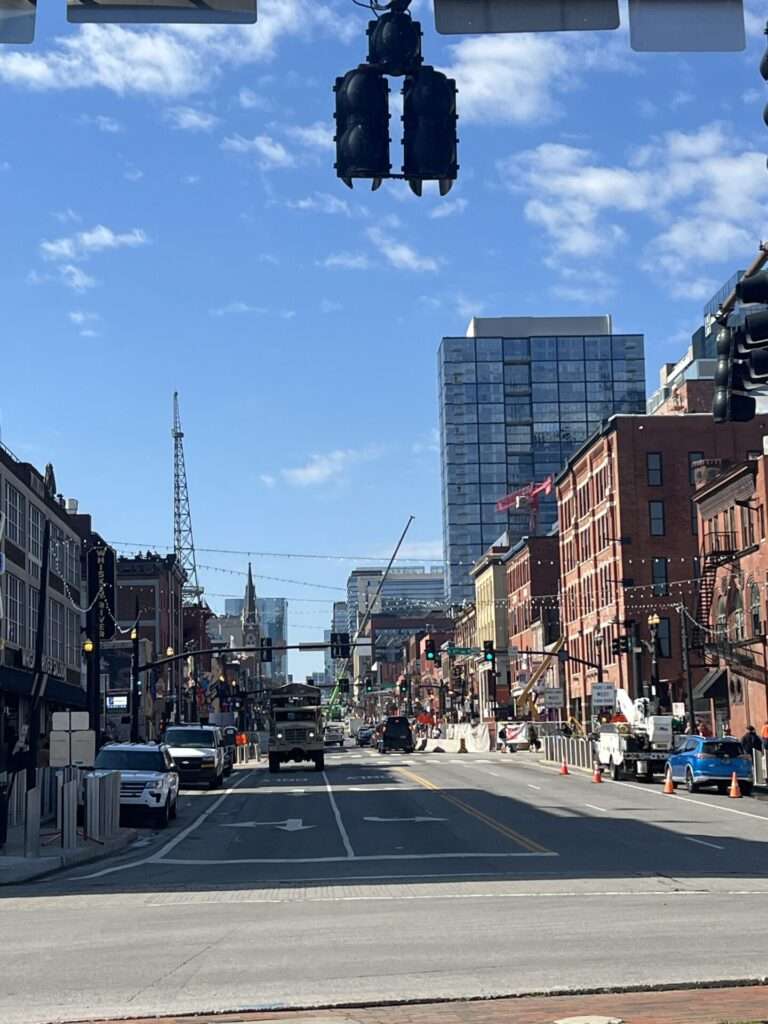
How Tour Companies Add Value to Your Vacation in 2024
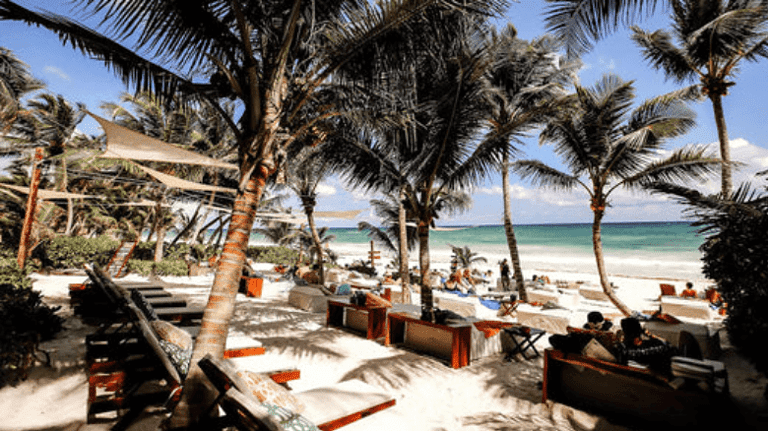
Best Girls’ Trip Destinations in the World: Top 7 Getaways

Hi, Jill Here
Hi! I’m Jill, a Dallas, Texas girl traveling the world. After a career in the Air Force and touring over 50 countries later, my need to explore keeps going! It’s time to rock & roll and find all those places I never knew I was missing.
Join me to get exclusive travel tips, giveaways and more!

Quick Links
Useful Links
Subscribe to get special offers, free giveaways, and once-in-a-lifetime deals.
Get Connected
Copyright © 2023 | All Right Reserved
Review Cart

India is a hiker’s dream destination. Here are a dozen of its most epic trails
W hen planning a trip to India, the “Golden Triangle,” comprising Delhi, Jaipur and Agra, often comes to mind as a must-see region. And these historic destinations do indeed provide a classic introduction to the country.
However, India boasts an array of natural wonders that provide ample opportunities for the more active traveler to get out and explore.
The terrain encountered during a hiking odyssey in subcontinent-sized India is as diverse as the cultural fabric that weaves this extraordinary nation together.
Here, one can encounter towering peaks of the formidable Himalayas and undulating plains that whisper tales of ancient civilization in the northern region. Towards the southern reaches, the forest-cloaked Western Ghats mountain range abounds with vibrant flora and fauna.
Numerous local guides and trekking agencies are on hand to help you conquer these trails. Check out the Indian Mountaineering Foundation for a list of the country’s registered tour agencies.
If it’s inspiration you’re after, here’s a rundown of 12 of the most epic hikes in India, ranging from quick, casual hikes to multi-day excursions.
Buran Ghati, Himachal Pradesh
Distance: 37 kilometers (30 miles)
Time: 7 days
Suitable for all levels, the Buran Ghati trek begins from the ancient hamlet of Janglik, about a five-hour drive from Shimla, the former summer capital during British colonial rule.
The terrain is never boring, as you pass through deep forest onto wide green meadows and across gurgling brooks under the shadow of snow-covered peaks, en route from the Daraya campsite to the Dunda campsite, enjoying views of glacial lakes like Chandranahan along the way.
Hikers will need to be well-acclimatized as the trail crosses a 4,572-meter (15,000-feet) pass on day five.
The true adventure lies in the descent from the pass on the other side, leading to the verdant Barau village, marking the culmination of this remarkable odyssey.
During summer (mid-May to June), a thrilling rappel of about 400 meters (1,312 feet) down a steep ice wall awaits, while in autumn (mid-September to mid-October), a steep descent amid rugged boulders provides an exhilarating experience.
Dzükou Valley, Nagaland
Distance: 9 kilometers (6 miles)
Time: 1 day
Straddling the borders of Manipur and Nagaland in the northeastern part of the country, Dzükou Valley is a giant green carpet that annually erupts into a riot of wildflowers, including the rare pink Dzukou Lily, which is only found here.
July is peak flower season, but the valley is gorgeous all summer.
There are two routes – most hikers start from Viswema Village, about 22 kilometers (14 miles) south of Nagaland’s capital city Kohima, while the trailhead at Zakhama Village, about 18 kilometers (11 miles) from Kohima, is shorter but the ascent is sharper.
The path climbs up rough-hewn stone steps and through a mix of chestnut, juniper, and oak thick forest, to reach the crest of the valley at 2,452 meters (8,045 feet) above sea level, where a riveting panorama unfolds.
It is possible to stay in the guesthouse run by the Southern Angami Youth Association (SAYO) in the valley, but the hike can also be completed as a day trip.
Indian nationals must acquire an Inner Line Permit (ILP) to visit Nagaland, while foreign visitors must register themselves at the local Foreigner Registration Office (FRO) within 24 hours of arrival.
Great Lakes Trek, Indian-administered Kashmir
Distance: 63 kilometers (39 miles)
Time: 5 days
An absolute humdinger of a route, this trek takes in three high passes of the Himalayas and seven glacier-fed lakes.
Accessible from July through to September, the trail starts in the small hamlet of Shitkadi near Sonamarg, 80 kilometers (50 miles) northeast of the city of Srinagar and takes you over alpine meadows and grasslands before ending in the village of Naranag.
On day five comes the real treat – spectacular views of the biggest of the Satsar Lakes and the twin lakes of Gangabal and Nundkol.
While the hike isn’t particularly strenuous, you’ll need to spend a couple of days acclimatizing in Sonamarg beforehand to prepare yourself for the altitude of 4,200 meters (13,780 feet).
Trek Kashmir , a local travel agency, can arrange meals, camping equipment and transfers to and from Srinagar.
Goechala Trek, Sikkim
Distance: 73 kilometers (45 miles)
Time: 8 days
If you’re up for a challenge and view that ranks among India’s most sublime, consider this trek in West Sikkim.
The hike can be steep and tough, with 3,048 meters (10,000ft) of elevation gain and three suspension bridges over deep gorges to negotiate.
What really lodges this hike in your memory is the view of Kangchenjunga, the world’s third-highest peak, from Dzongri Top at 4,167 meters (13,670 feet).
The route also cuts through Khangchendzonga National Park, revered by the local Lepcha tribe.
Big wildlife rules here: red pandas, blue sheep, elusive snow leopards and blood pheasants can be found on this trail.
Starting and finishing in Yuksom Village, the trail is best hiked clockwise to acclimatize for the challenging ascents towards the end.
Numerous campsites and huts are spread along the trail, best completed during spring and fall months, i.e. April to May and September to November.
Markha Valley, Ladakh
Distance: 65 kilometers (40 miles)
Time: 6 days
Whisking you through wild landscapes within Hemis National Park, situated in the eastern region of Ladakh, the hugely popular Markha Valley epitomizes the extraordinary beauty of Indian nature.
The trail begins in the village of Chilling, about 66 kilometers (41 miles) from Ladakhi capital Leh and ends at Shang Sumdo, swinging from gentle to moderate in difficulty as the terrain changes.
There are barley fields and thickets to traverse, hanging bridges to cross and rocky canyons to negotiate.
Crossing the icy waters of Markha River (a tributary of the mighty Zanskar River), seeing the ancient Buddhist monasteries and 6,400-meter (21,000 feet) Kang Yatse and 6,153-meter (20,187 feet) Stok Kangri peaks, and climbing up to the 5,200-meter (17,060 feet) Kongmaru La Pass are moments you’ll rave about for the rest of your life.
There’s some wonderful wildlife too – blue sheep, Asiatic ibex, Himalayan marmot, Ladakhi urial and the endangered Eurasian brown bear all hang out in the park. Snow leopards make a rare appearance only during the winter months.
Nights spent camping under starlit skies or indulging in a warm meal at a village homestay along the way.
Acclimatize in Leh before embarking on this trek. July to September is the optimum period for hiking here.
Valley of Flowers, Uttarakhand
Distance: 8 kilometers (5 miles) round trip
Time: 7 hours
A spectacular carpet of rare and exotic wildflowers is the trademark landscape on this dreamy hike, best tackled during the monsoon season (July to September).
There are a variety of trek distances available, but one of the most popular and shortest options begins and ends in Ghangaria, a popular base camp for visitors wanting to visit the valley.
Stay the night here for an early start in the valley, which opens its gates at 7 a.m., with trekkers being granted entry until 2 p.m.
Ascending and descending inclines while crossing the Pushpawati River, the route finally reaches the UNESCO World Heritage-listed Valley of Flowers, bedecked with over 500 species of flowers against a backdrop of glaciated mountains.
This protected area also serves as a habitat for Asiatic black bears, blue sheep and snow leopards, albeit sightings are rare.
As one of the most popular hikes in India, you won’t be alone, so there’s no need for a guide here.
Kudremukh Trek, Karnataka
Distance: 18 kilometers (11 miles)
Time: 4 hours
Nestled in the heart of Chikkamagaluru district in India’s Western Ghats, the 1,894-meter (6,214 feet) Kudremukh Peak is the third tallest summit in Karnataka state.
It’s an easy day hike to reach the summit, traversing through shola (virgin forest), small streams and rolling green hills.
Keep an eye out for endemic wildflowers and the occasional lion-tailed macaque, langur or Malabar giant squirrel.
Most hikers base themselves in the village of Mullodi, where one can purchase the requisite entry permit from the local forest office.
It pays to get an early start as trekking after 6 p.m. is prohibited, and only 50 hiking permits are issued per day.
It’s best to hike the trail during post-monsoon and winter months – September to February.
Namdapha Rainforest Trek, Arunachal Pradesh
Distance: 45 kilometers (28 miles)
For intrepid adventurers, exploring the rainforest wonderland that is Namdapha on foot is the epitome of off-the-beaten-path hiking.
Located in the eastern Himalayas, this out-and-back trek starts from Deban, a rough 26-kilometer (16-mile) drive from the petite town of Miao , where permits are issued at the Field Direction’s Office.
The trail crosses varying landscapes – small rivers, patches of forest and grassland and a short bit of gravelly terrain.
Birdwatchers will find themselves captivated by the five species of hornbills and other avian species found along the way.
The forest is also home to mammals such as the clouded leopard and Bengal tiger, though sightings are rare. Mischievous red pandas and gibbons can occasionally be spotted amidst the foliage as well.
Although lodging is available at the Forest Rest House in Deban, to make the absolute most of the path and visit the local tribes like Lisu and Tangsa who have inhabited the region for centuries it’s best to book the trek through a registered local tour operator .
The best time to hike here is mid-September to April.
Chembra Peak, Kerala
Distance: 4 kilometers (2.5 miles)
Time: 3 hours
The area around the mountainous Wayanad region in northeast Kerala, stretching along the Western Ghats, is home to several scenic walks.
A favorite among those looking for a tranquil and easy-to-moderate hike is Chembra Peak, perched at an elevation of 2,100 meters (6890 feet) above sea level.
The trail starts from the watchtower near the Chembra Peak VSS Forest Office – a short drive from the quaint hamlet of Meppadi – and winds its way through emerald tea plantations and wild grasslands.
While reaching the summit is prohibited, visitors can climb up to the heart-shaped lake, known locally as Hridaya Thadakam or Hridaya Saras, near the peak.
Best tackled between November and February, the trail is open from 7 a.m. to 5 p.m., and entry is limited to 200 hikers per day. Secure the permit from the forest office before 2 p.m.
Chatakpur-Tiger Hill, West Bengal
Distance: 14 kilometers (8.7 miles)
Time: 6 hours
A three-hour drive from Siliguri, Tiger Hill is a popular weekend destination for city dwellers so go during the week to avoid the crowds.
The trail to the summit of Tiger Hill starts in the town of Sonada in India’s Darjeeling district, passing through organic farmlands and orchards before reaching Chatakpur Village.
After overnighting there, continue uphill towards the watchtower, a mere 10 minutes from the village.
From the tower, the path leads to an enthralling expanse of Senchal Wildlife Sanctuary, home to a diverse array of Himalayan wildlife like black bears, barking deer and macaques, plus avian species like Blue Magpies and Old World Flycatchers.
The final leg involves an ascent to a creek, offering vistas of Tiger Hill’s green terraces.
At the summit, enjoy stunning panoramas of Darjeeling town below. And if the weather is clear, you can get magnificent views of the Kanchenjunga ranges.
Walk the route from October to April, when the weather is pleasant.
Hampta Pass, Himachal Pradesh
Distance: 25 kilometers (16 miles)
Forging a path between the verdant Kullu Valley and the barren, high-altitude deserts of Lahaul and Spiti, Hampta Pass – standing at 4,270 meters (14,010 feet) above sea level – delivers one stunning vista after another as it strides from Jobra, about two hours northeast of the hill resort of Manali, to Chhatru Settlement via wildflower-flecked Jwara Valley.
Highlights are many but you’ll never forget clapping eyes on the snow-capped peaks of Deo Tibba (6,001 meters/19,688 feet) and Mount Indrasan (6,221 meters/ 20,410 feet) from the top of Hampta Pass on day four.
Trekkers can camp en route at designated sites like Chika, Balu Ka Ghera and Shea Goru.
If you’d like to add a little extra adventure, continue north from Chhatru, the end-point of the Hampta Pass trek, to Spiti’s east-west highway and embark on a two-hour drive to the captivating Chandra Tal (‘Moon Lake’), perched at 4,250 meters (13,944 feet) above sea level.
Weather permitting, Hampta Pass is open to hikers from June to September.
Himalayan Yeti Adventure and Himalayan Caravan Adventure can take care of the logistics.
Nongriat Trek, Meghalaya
Distance: 7 kilometers (4.3 miles) round trip
One of India’s most stirring natural wonders is the Living Root Bridges , crafted by indigenous Khasi villagers out of Indian rubber tree roots.
Over 100 of these humble river crossings are found in the Meghalaya hills, with a notable concentration in the jungle-laden Nongriat Village.
Accessible from Tyrna village, 12 kilometers (7.5 miles) southwest of Cherrapunji – one of the wettest places in the world – the hike begins with a descent of more than 3,000 stone steps before venturing into the dense rainforest, which is alive with butterflies and insects. The finale is the centuries-old double-decker living root bridge.
Logistics are easy for the Nongriat hike - there are many drink and snack stalls en route.
While guides are not obligatory, they’ll help you get acquainted with the local communities.
Hike between April to June, as the weather is comfortably warm. But do bring a rain jacket and sturdy, waterproof shoes, as conditions can change at the drop of a hat.
For more CNN news and newsletters create an account at CNN.com
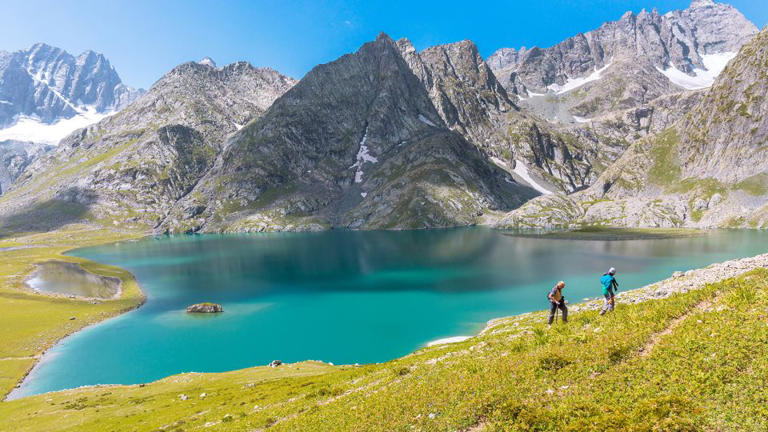

IMAGES
VIDEO
COMMENTS
Planning for Buran Ghati pass trek - The Buran Ghati pass trek is the easiest trek. Duration -7 days, Trekking - 24 km, Max Altitude - 15000 ft. Choose Trek. Trek By Name . ... Trek The Himalayas, Kaintura Plaza, Badrinath Road Tapovan, Rishikesh - 249201 Uttarakhand Phone: 8191004846. Email: [email protected]. 2010 Trek The Himalayas. ...
Discover the beauty of Buran Ghati Trek. Find out how to reach, cost, and itinerary options. ... Book now for an unforgettable adventure in the Himalayas! TTH Treks - Trek The Himalayas Trekking organization :- www.trekthehimalayas.com Upcoming Himalayan Trek- Buran Ghati Pass Trek, Kashmir Great Lake, Chadar Trek, Hampta Pass, Stok Kangri.
Since 2007, we have brought out treks that have become India's most famous treks: Roopkund, Rupin Pass, Buran Ghati, Kedarkantha, Kashmir Great Lakes, Tarsar Marsar, Brahmatal, Phulara Ridge—the list goes on. In 2023 alone, we brought out five new treks in Indian trekking. We know treks better than anyone.
The Buran Ghati trek is a popular trekking route in the Indian state of Himachal Pradesh. It is known for its stunning natural beauty, offering trekkers a chance to explore the pristine landscapes of the Himalayas 2024- Complete trek information
23 Sep 2023. The Buran Ghati Trek, nestled in the heart of the Himalayas, is a hidden gem waiting to be explored. With its breathtaking landscapes, challenging terrain, and unique cultural experiences, this trek offers an adventure like no other. Join us as we delve into the complete guide for the Buran Ghati Trek and discover why it's a must ...
Buran ghati pass trek vlog. Travel of Europeans gave access to rare cash and employment to villagers of Tungu, Romai and Janglikh while local travelers, which included mostly Kinnauras gave wealth to these villages through a barter system.. The people of Janglikh and Tungnu-Romai still talk about the time when Kinnauras (people of Brua, Sapni, etc) were so poor that their main cereal was ...
Buran Ghatti is one of the perfect treks to begin with exploring the Himalayas, as it captures the Himalayan essence at its best. This trail starts from Janglik, which is one of the remotest villages in these parts of the Himalayas that has remained untouched by the modern aspects. Janglik has a lot of similarities in terms of feel with the villages found in the Har Ki Dun Trek.
Buran Ghati Trek is a moderately challenging trek, and it requires good physical fitness and trekking experience. The trek covers a distance of about 40 km and reaches an altitude of 15,000ft. Highlights of the Trek: The Buran Ghati Trek offers stunning views of the Kinnaur and Kullu valleys.
Nestled in the magnificent Himalayas, the Buran Ghati Trek is a 9-day expedition that takes you to an altitude of approximately 15,000 feet.The trek covers a distance of approximately 45 kilometres, offering a fantastic blend of adventure, natural beauty, and cultural exploration. The trek begins at Janglik village and takes you through dense forests, charming meadows, and remote Himalayan ...
The exhilarating Buran Ghati trek, a mesmerizing Himalayan adventure in the Shimla district of Himachal Pradesh, India. Traverse diverse landscapes from lush meadows to snow-laden trails, culminating in the breathtaking Buran Ghati Pass at an altitude of 15,000 feet. With a moderate difficulty level, this 8 to 9-day trek promises an immersive experience for nature enthusiasts and adventure ...
Buran Ghati: Majesty of Mountain Passes. Buran Ghati Trek, nestled in the picturesque state of Himachal Pradesh, is a true gem for nature enthusiasts and adventure seekers alike.This exhilarating trek offers a mesmerizing journey through some of the most stunning landscapes the Himalayas have to offer.
Buran Ghati trek starts from Janglik which is approx. 150 km from Shimla. The trail comprises of the dense forest of Oak & Pine trees. The sacred Chandranahan Lake is another attraction of Buran Ghati Trek. ... The Himalayas house the tallest mountains in the world and have long been a treasure trove for all adventure enthusiasts. The variety ...
Look no further than the Buran Ghati Trek! Nestled amidst the majestic Himalayas, this trek offers breathtaking landscapes, thrilling challenges, and a glimpse into the untamed beauty of nature. In this comprehensive guide, we will take you through every aspect of the Buran Ghati Trek, providing you with the information you need to embark on ...
Short Itinerary for Buran Ghati Trek. Day 1: Head to Janglik Base Camp (9200 ft) Day 2: Janglik/ Diude to Dayara Thach (9200 ft to 11075 ft) Day 3: Dayara to Litham (11075 ft to 11737 ft) Day 4: Excursion to Chandranahan lake (11737 ft to 13900 ft and back) Day 5: Litham to Nalabansh (11737 ft to 13365 ft)
Nestled amidst the towering peaks of the Indian Himalayas lies a hidden gem waiting to be discovered by adventurous souls—the Buran Ghati trek. As you lace up your hiking boots and embark on this epic journey, get ready to unlock the beauty of the Himalayas like never before. Buran Ghati, situated in the picturesque state of Himachal Pradesh ...
The Buran Ghati Trek, located in the Kinnaur district of Himachal Pradesh, India, is an exhilarating journey through diverse landscapes.Spanning over eight days and reaching an altitude of 15,000 feet, this trek offers everything from dense forests and lush meadows to gushing streams and challenging snow-covered passes.
Buran Ghati trek - Altitude and Distance profile graph: Below is a graphical representation of the altitude and distance of major points on Buran Ghati trek trail. When it is best to visit Buran Ghati? As all high altitude treks in the Himalayas (apart from few trans Himalayan treks), Buran Ghati trek also can be done best in two seasons.
Buran Ghati Trek: Upcoming Buran Ghati trek starting on 12th June 2022 morning from Shimla as per itinerary (8 days, Shimla to Shimla). ... As all high altitude treks in the Himalayas (apart from few trans Himalayan treks), Buran Ghati trek also can be done best in two seasons. One being in summer before monsoon and the later being post monsoon ...
Understanding The Buran Ghati Trek. Let's learn more about the Buran Ghati Trek: 1. Location and Geography: Buran Ghati Trek is located in Himachal Pradesh, India. It winds through the stunning landscapes of the Himalayas, offering breathtaking views of mountains, valleys, and forests. 2. Trek Route Overview:
Buran Ghati, Himachal Pradesh. Distance: 37 kilometers (30 miles) ... Located in the eastern Himalayas, this out-and-back trek starts from Deban, a rough 26-kilometer (16-mile) ...